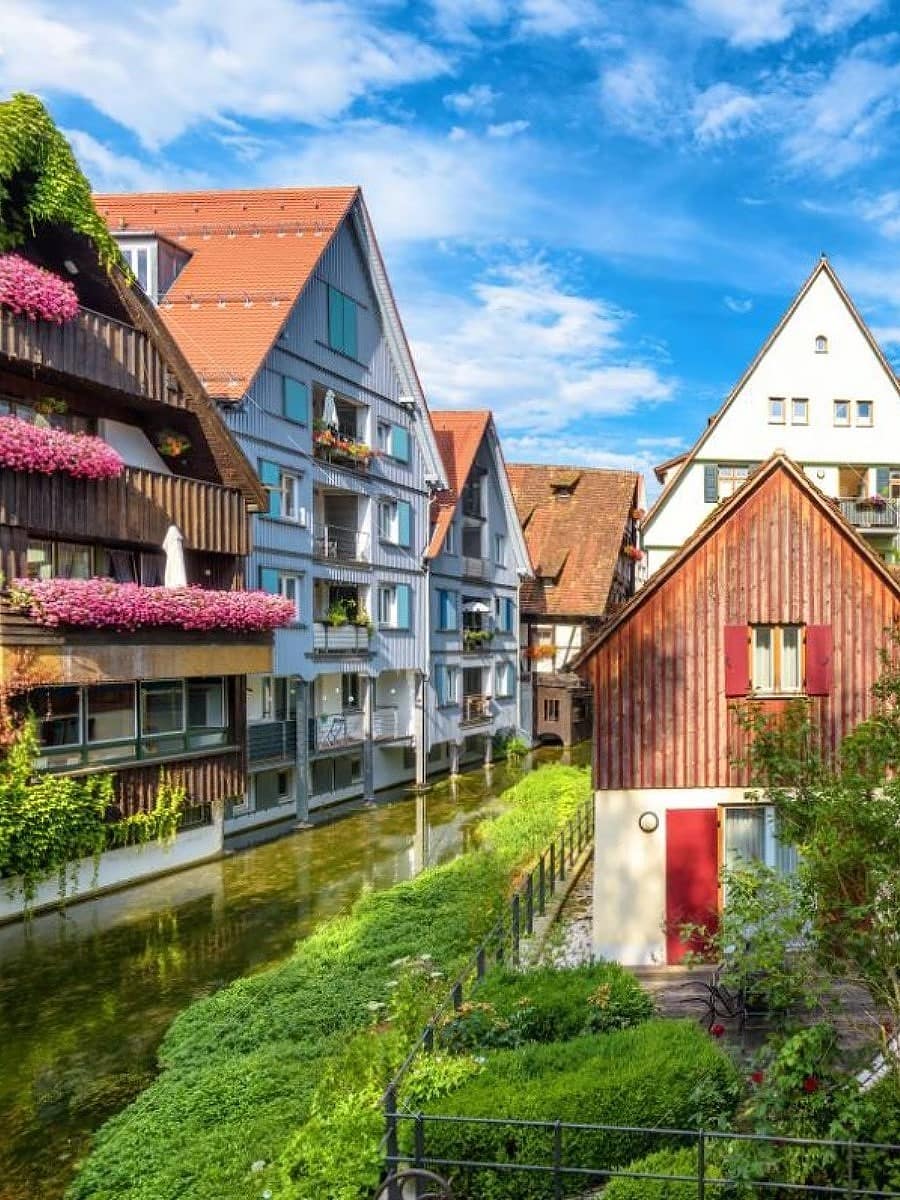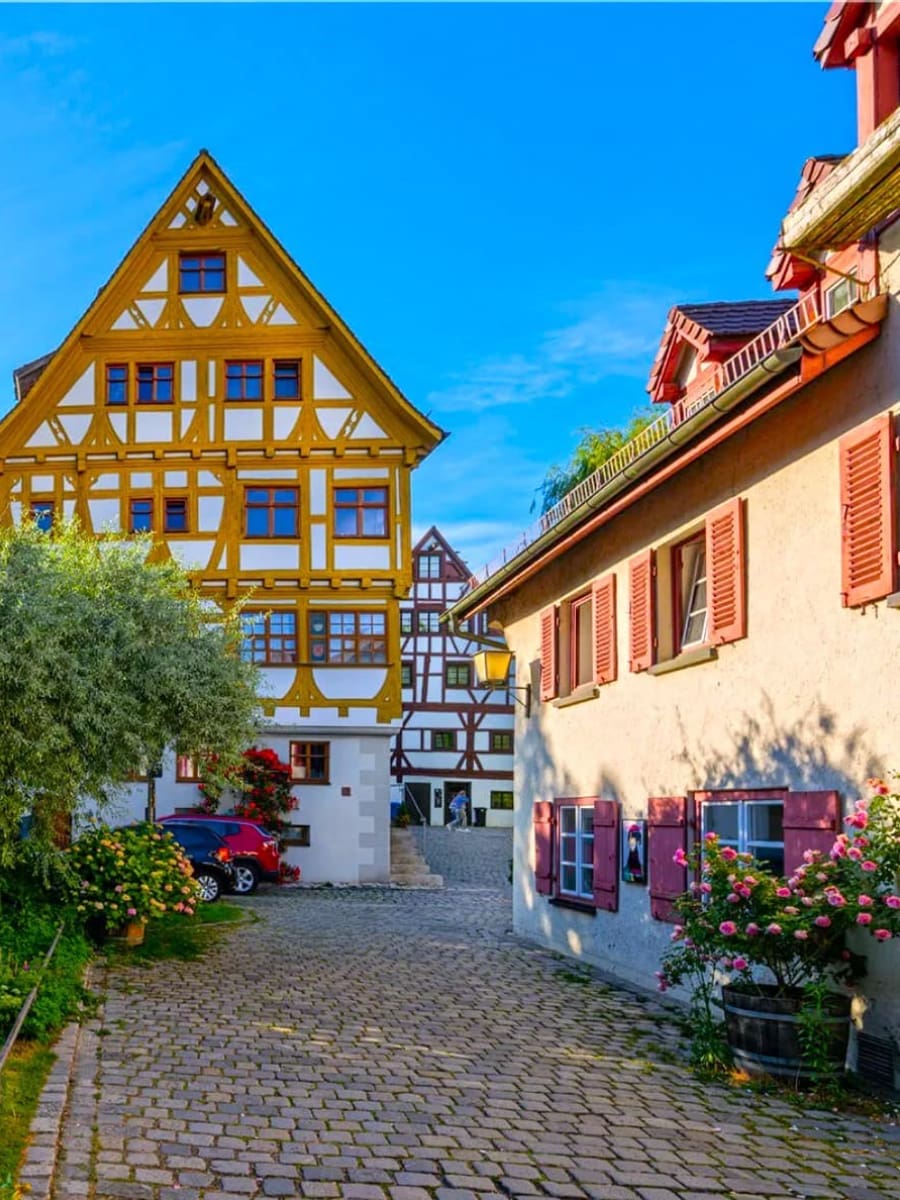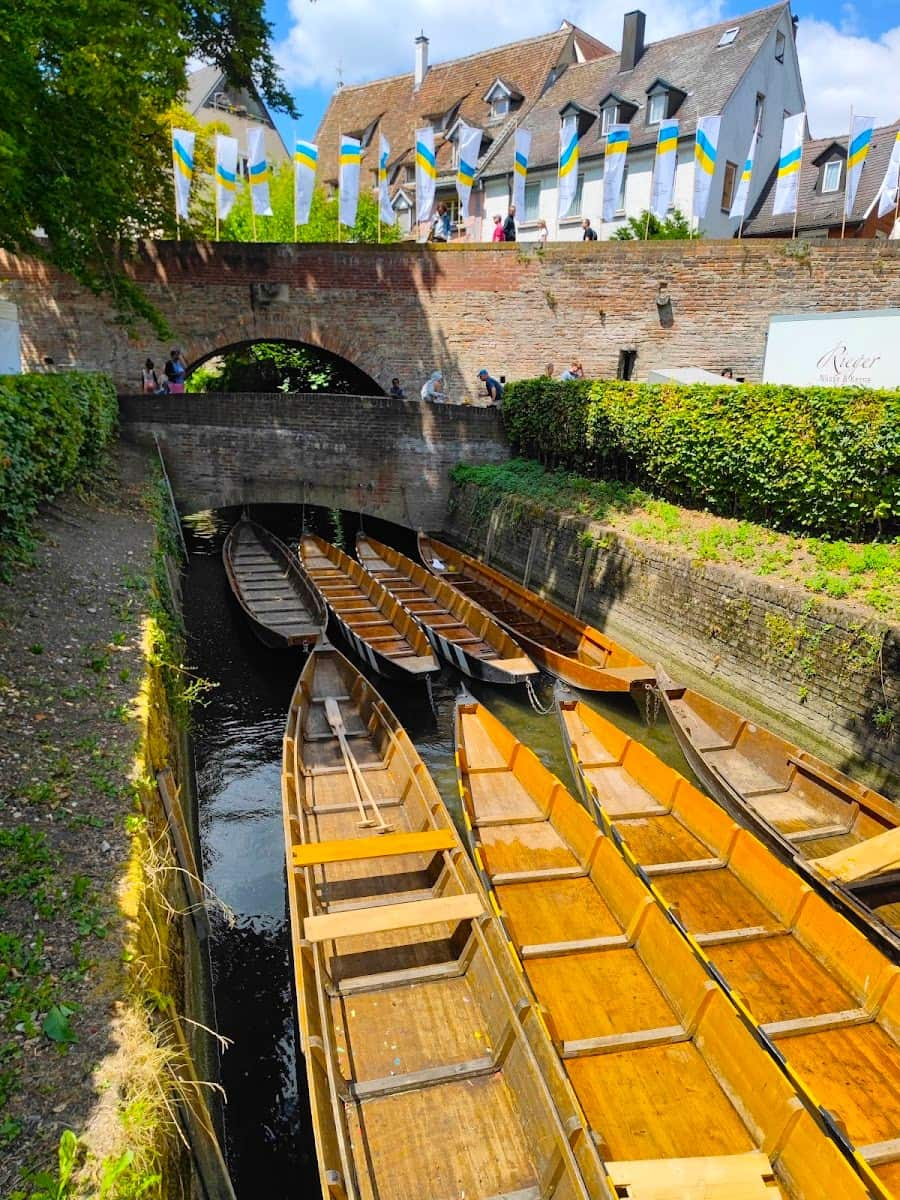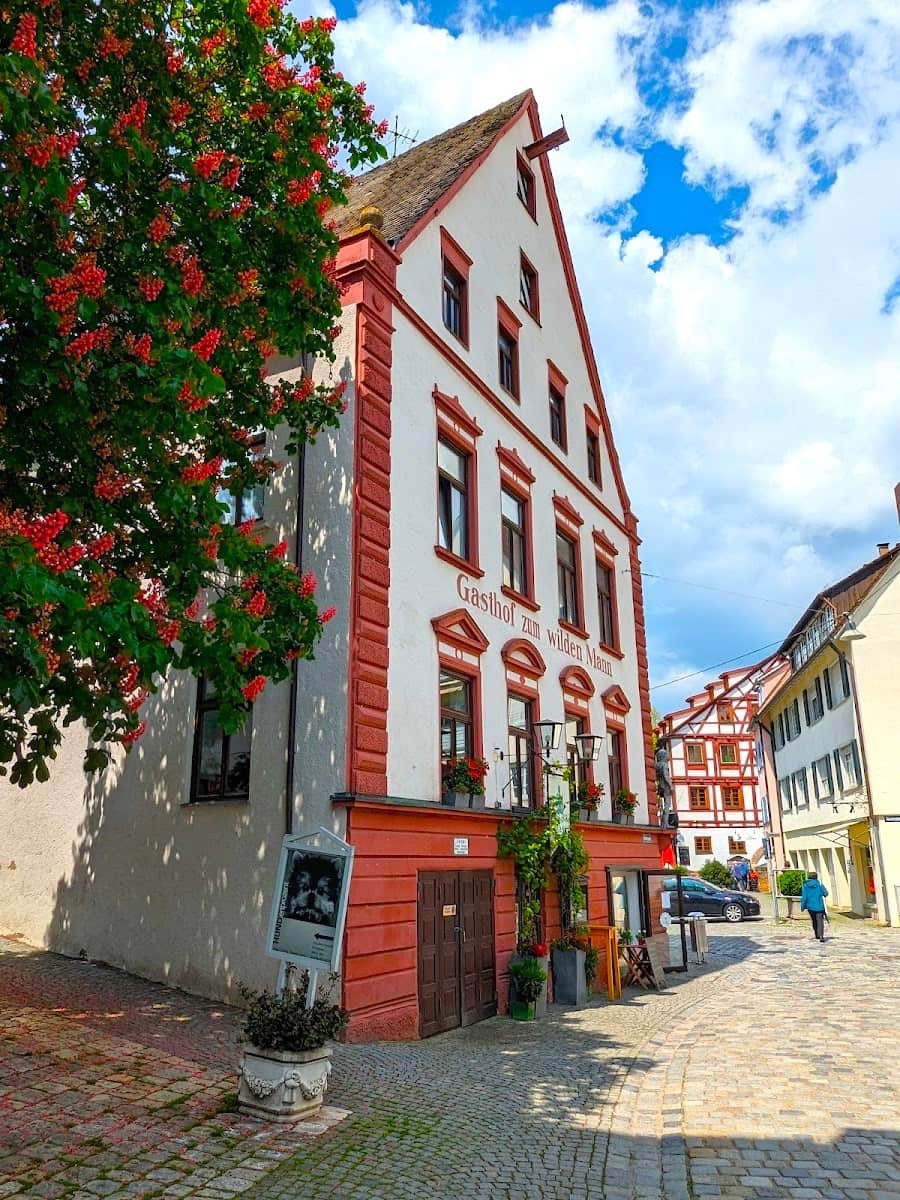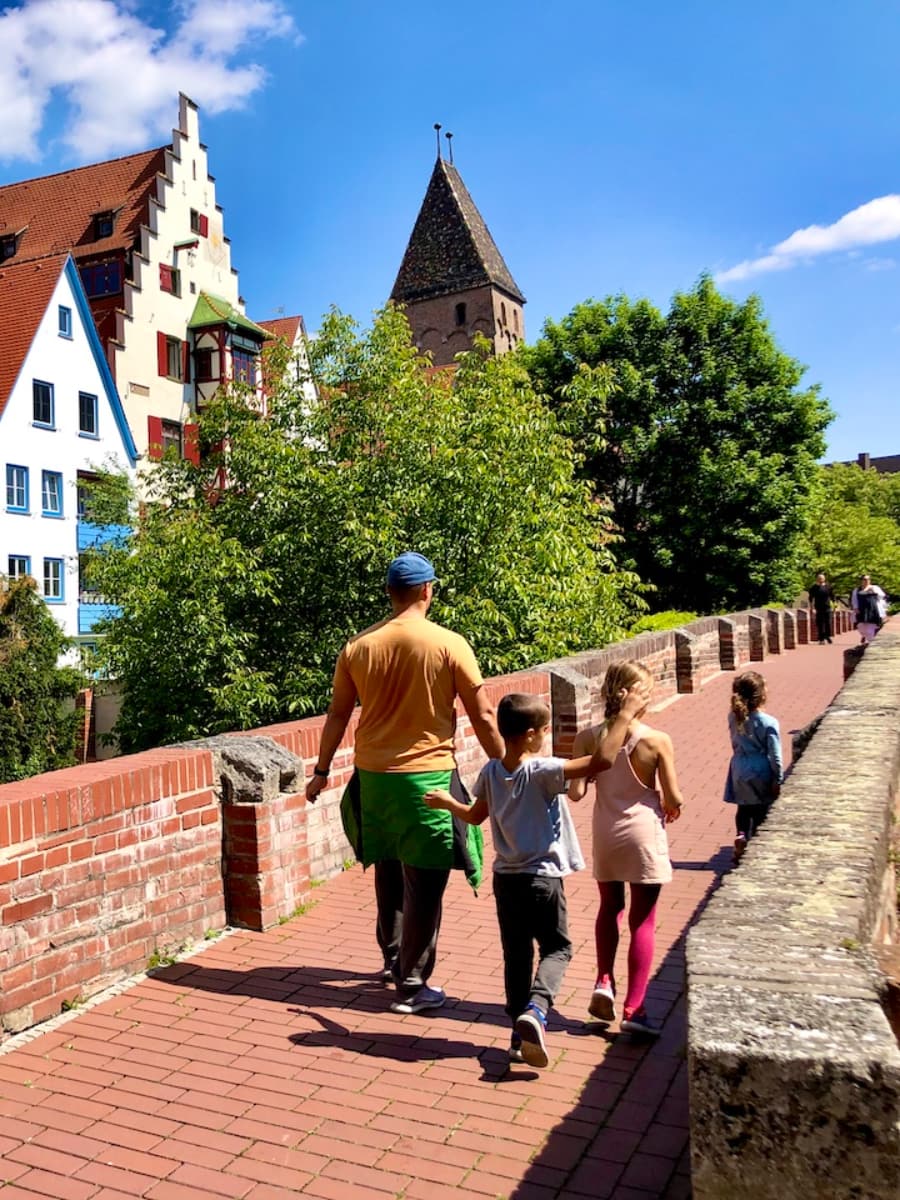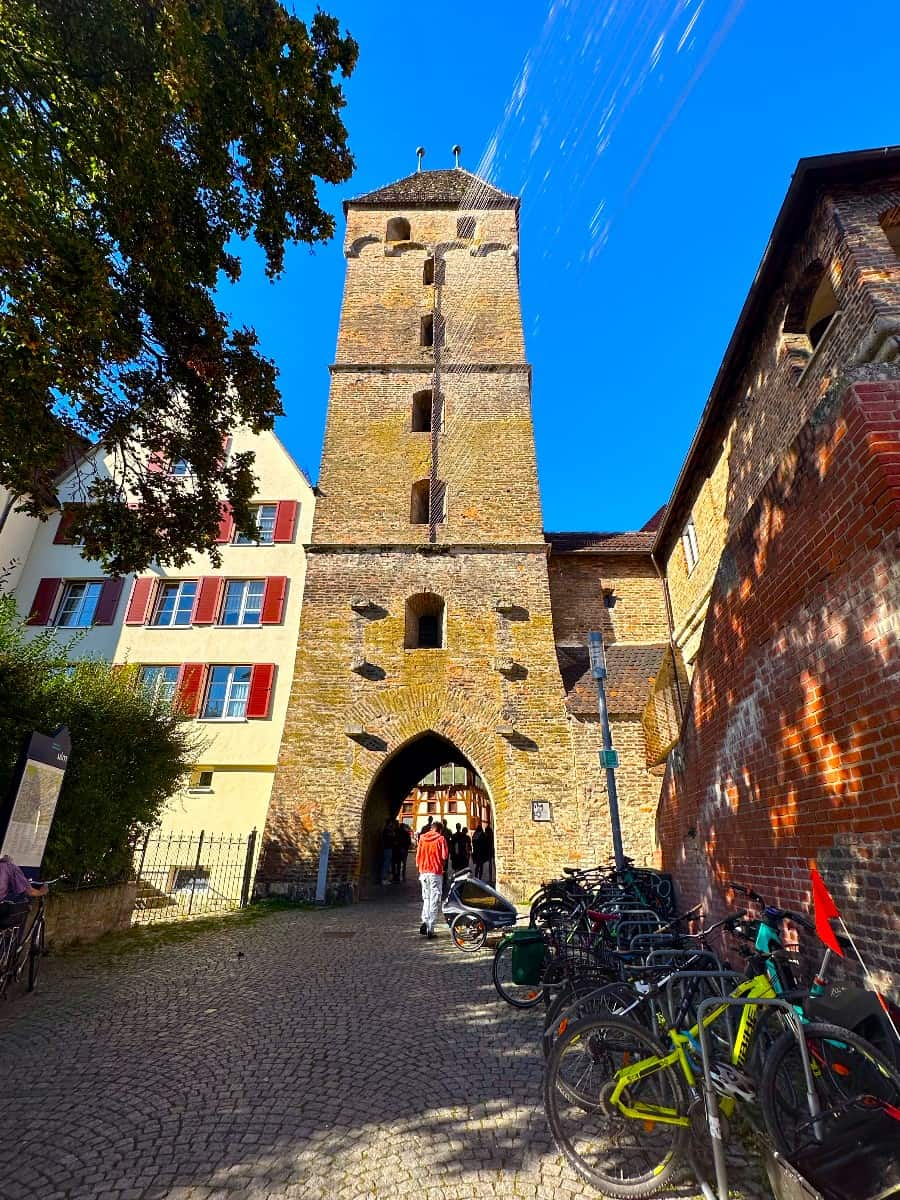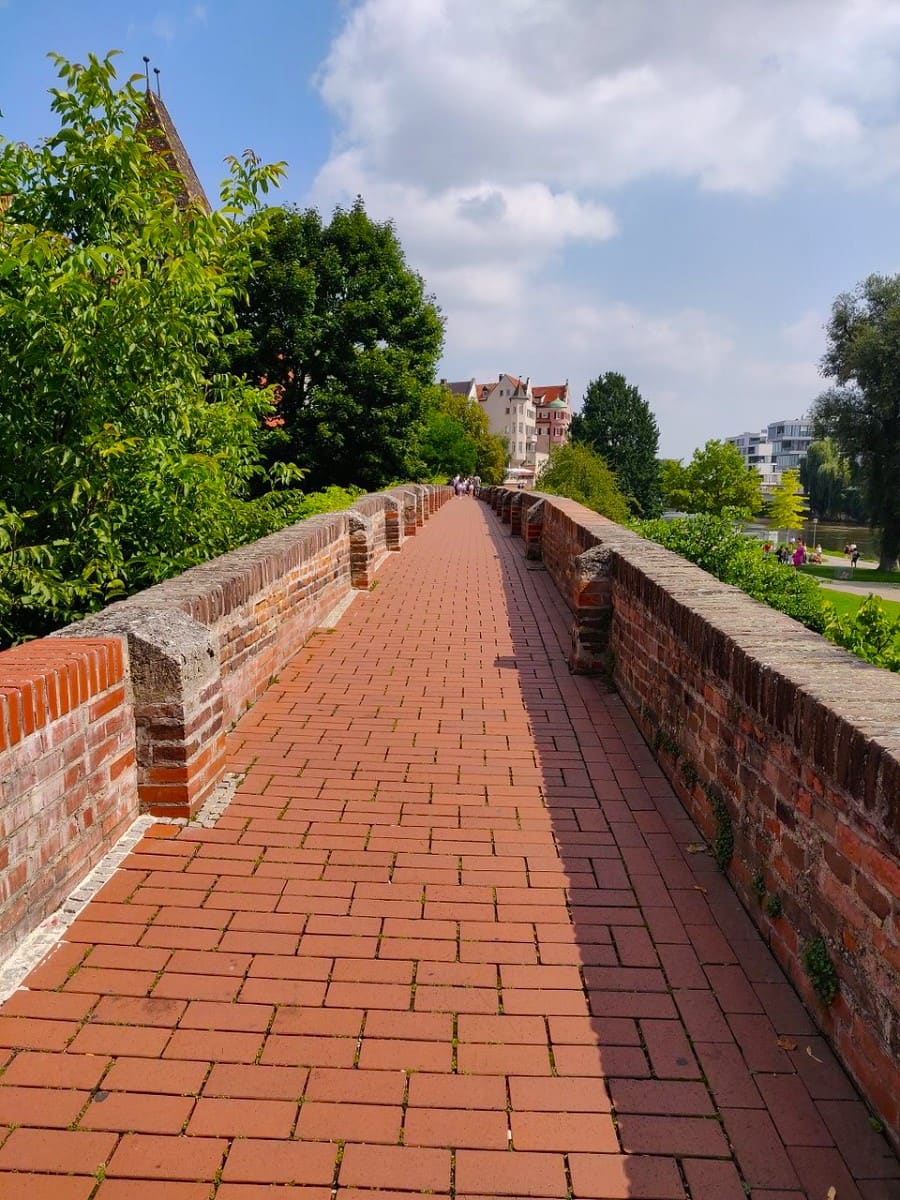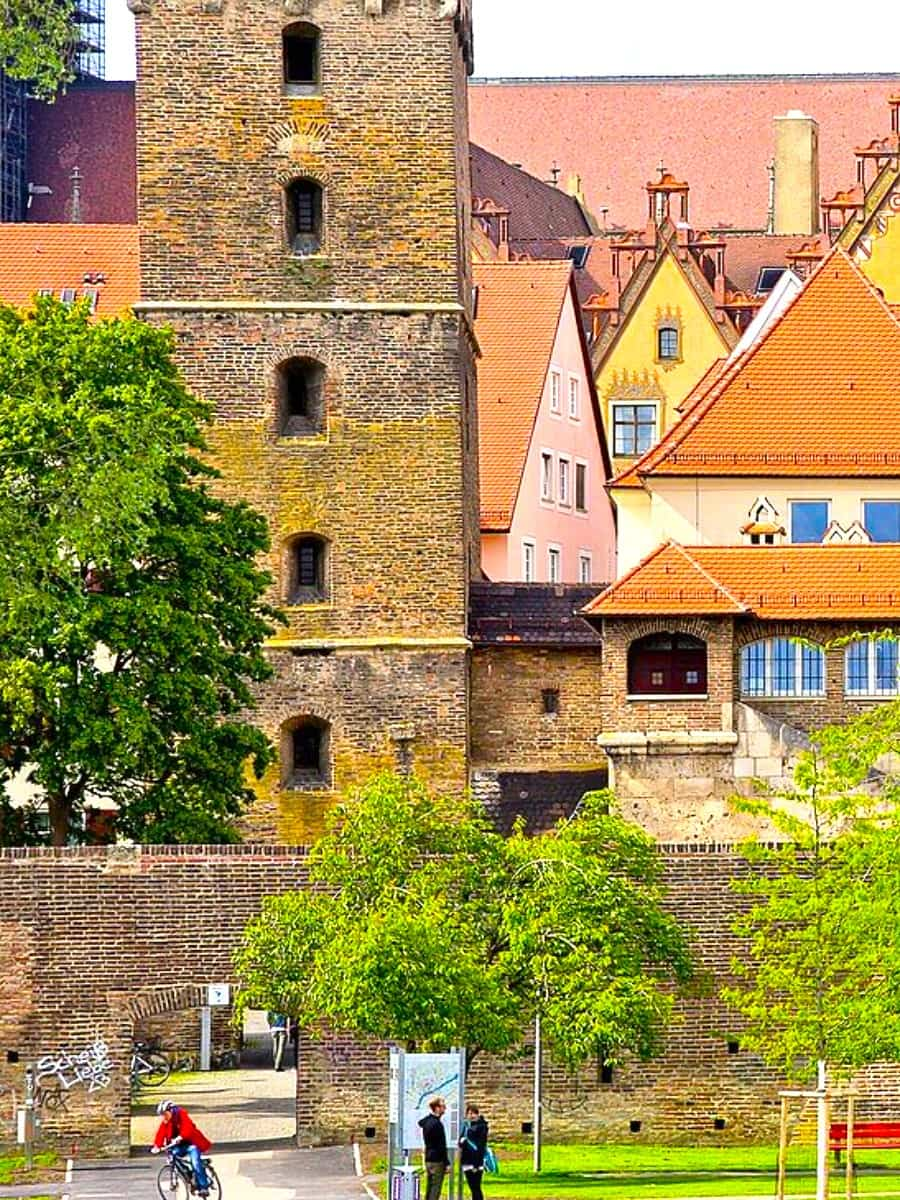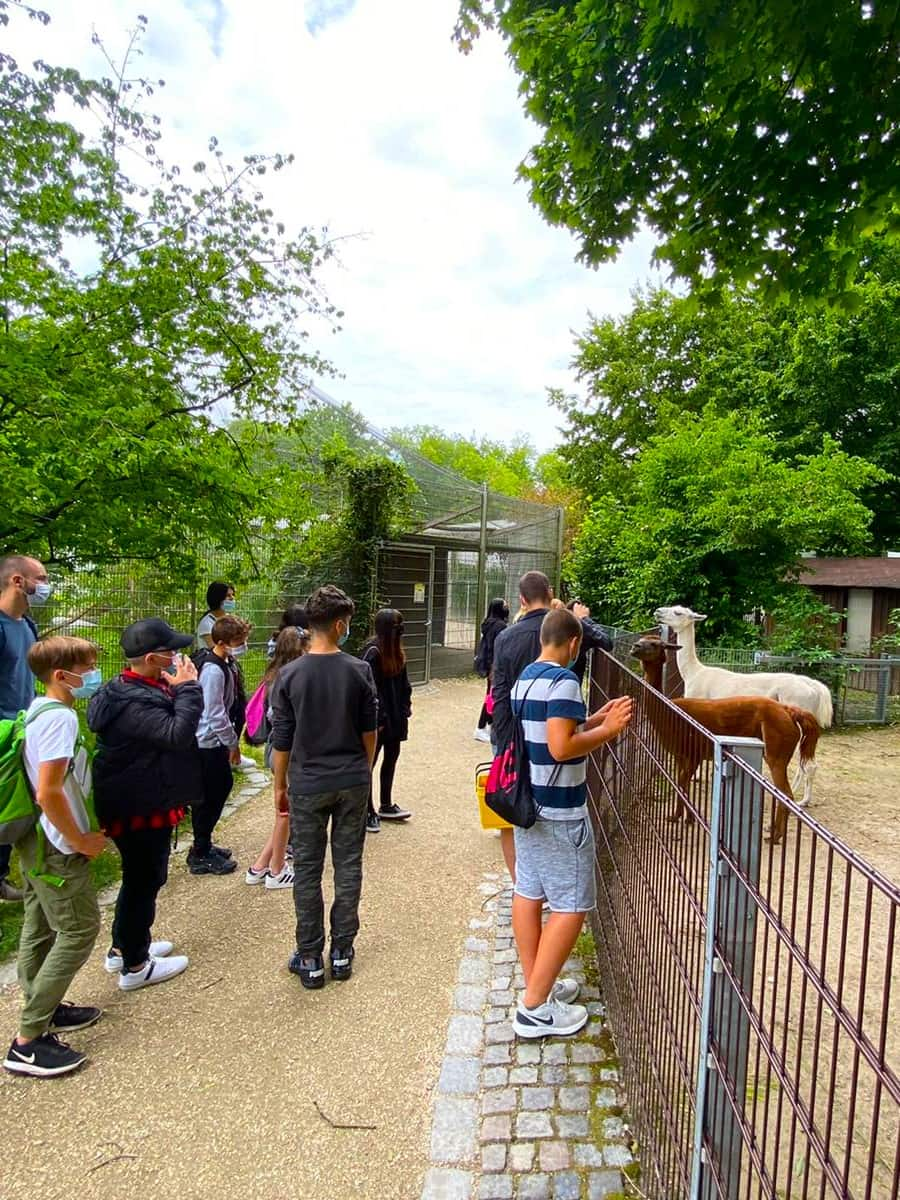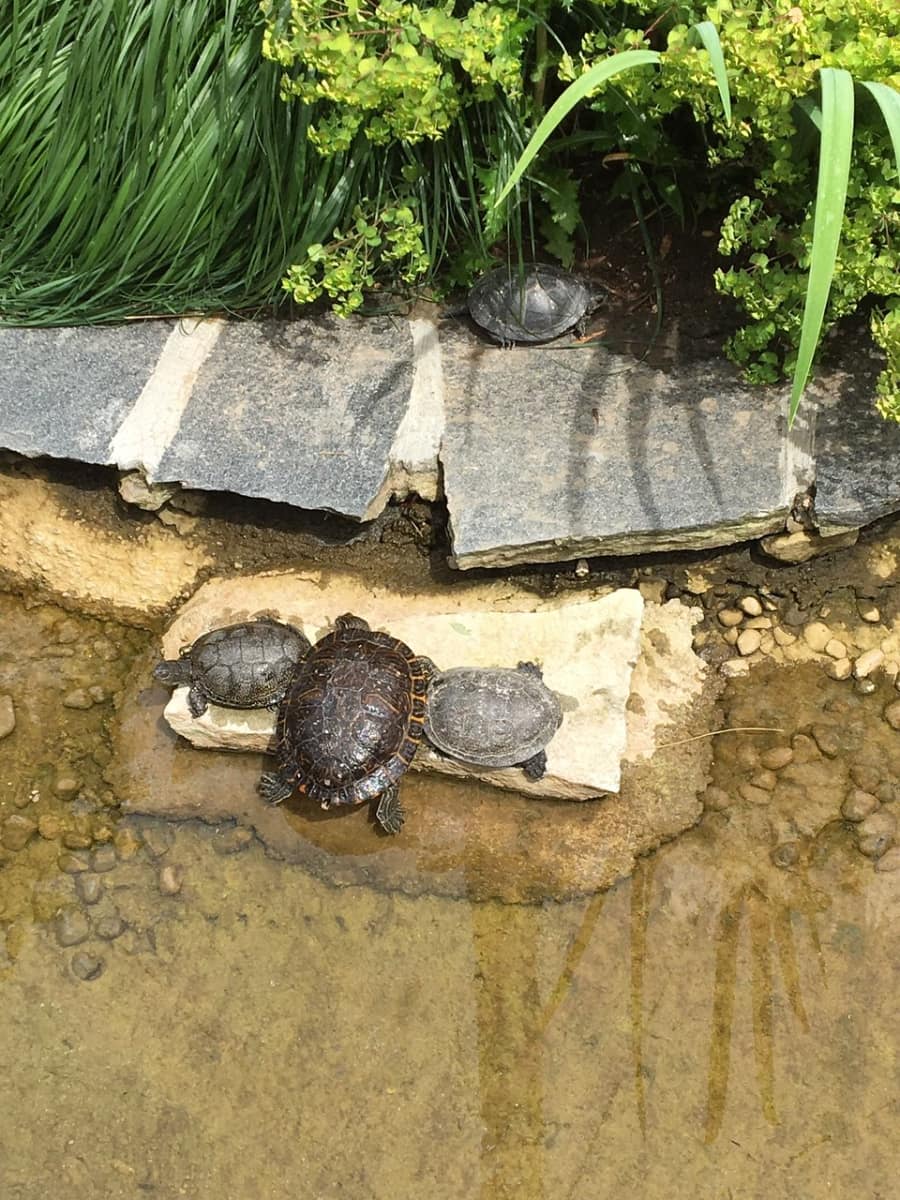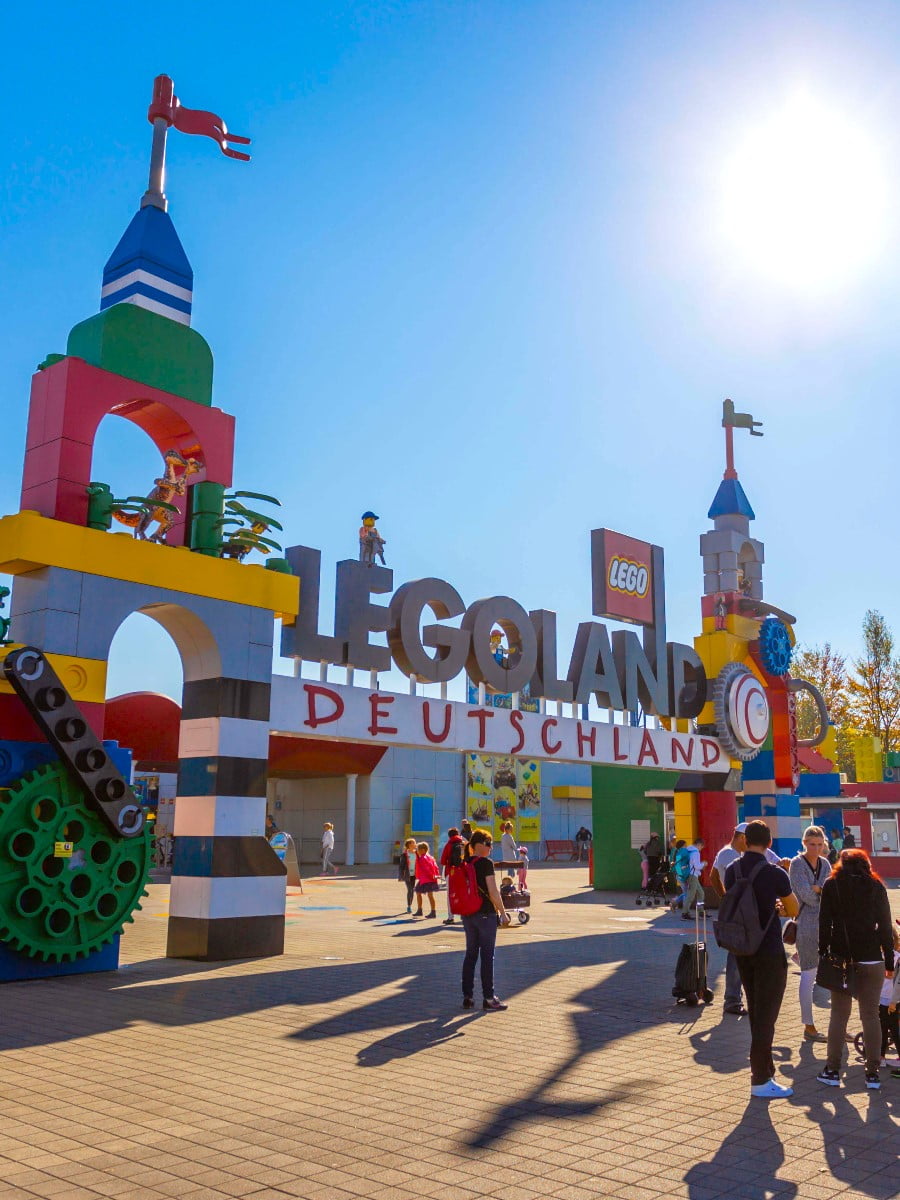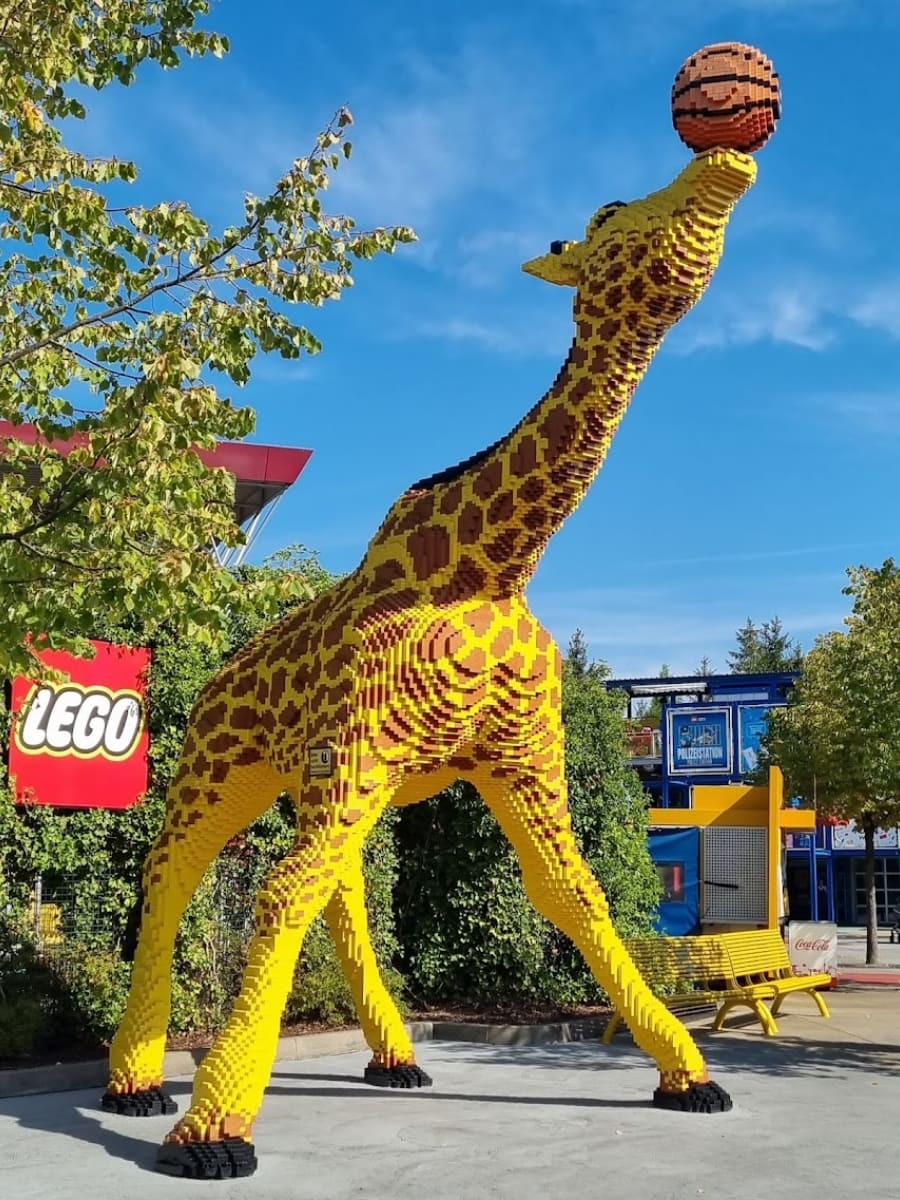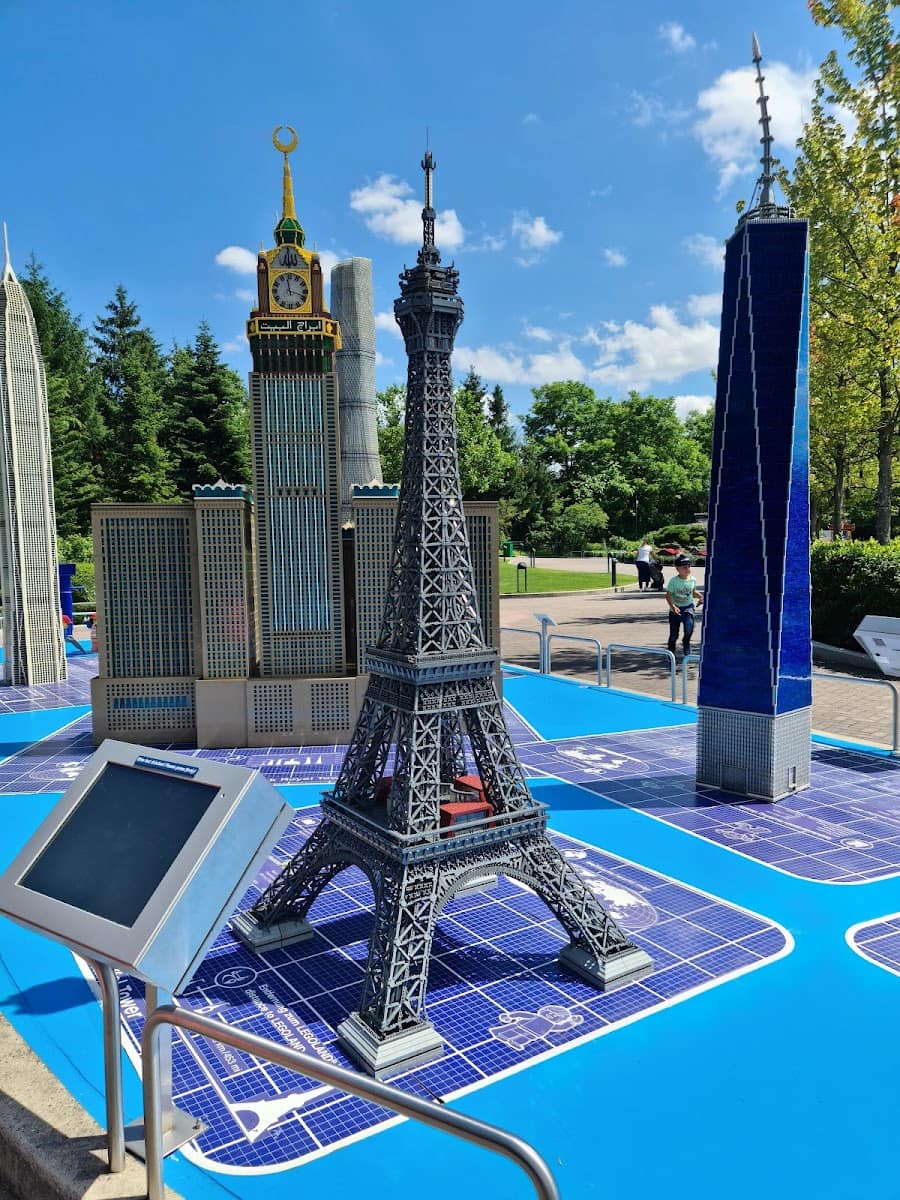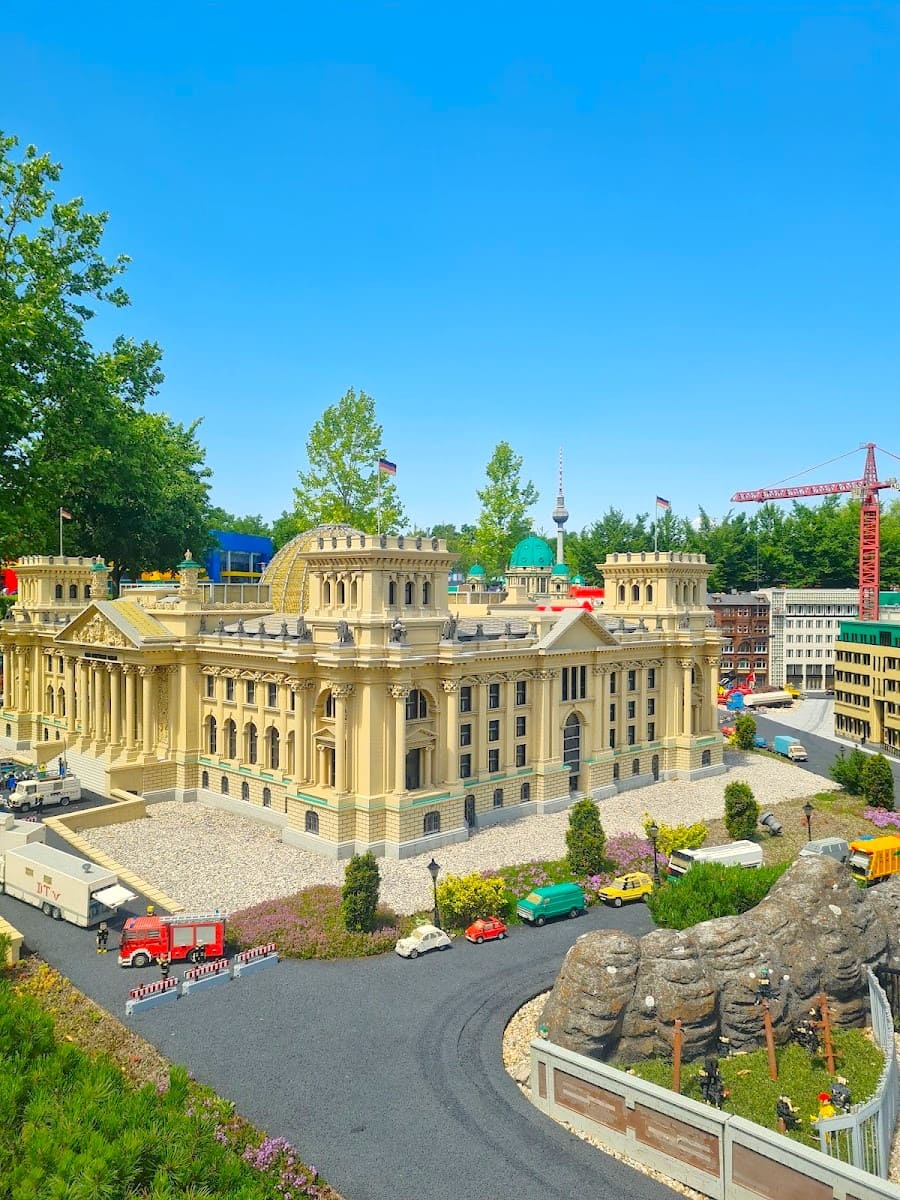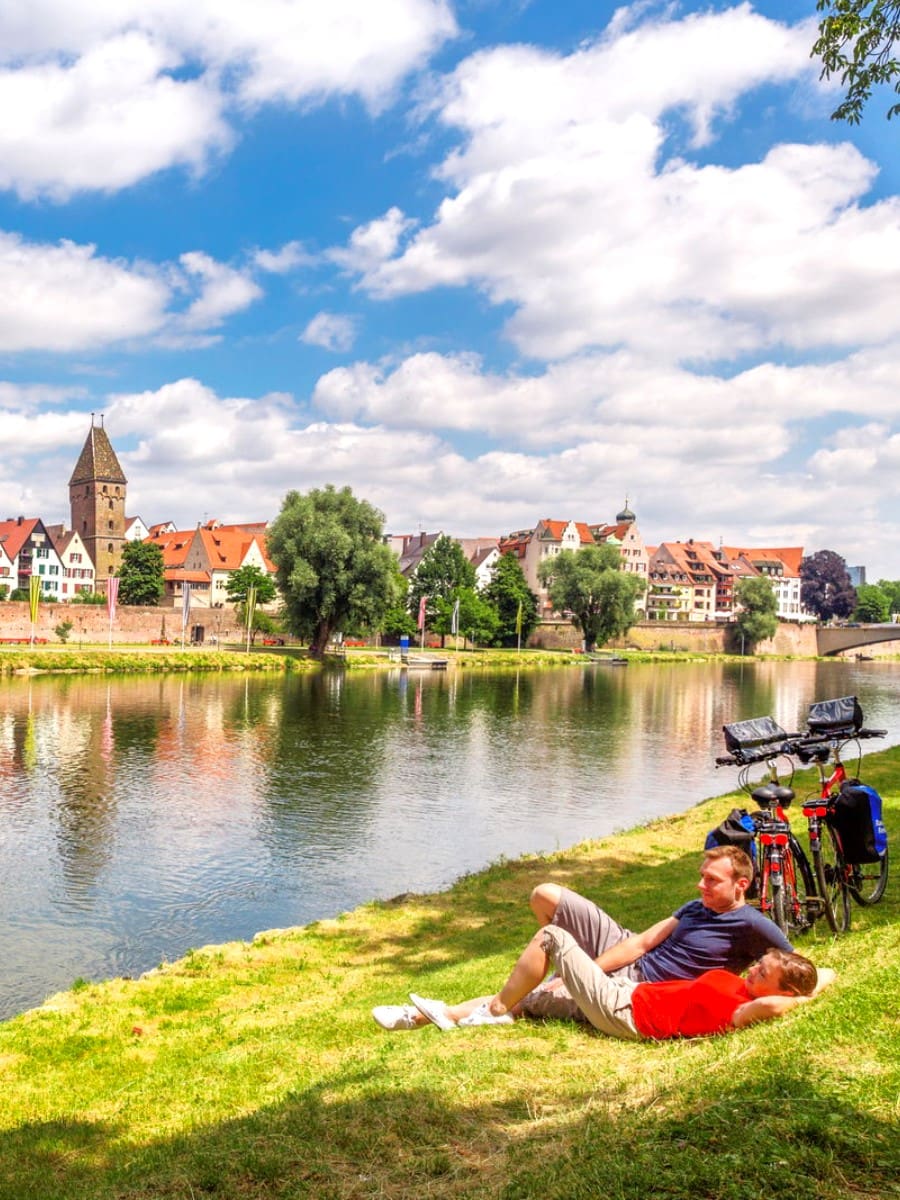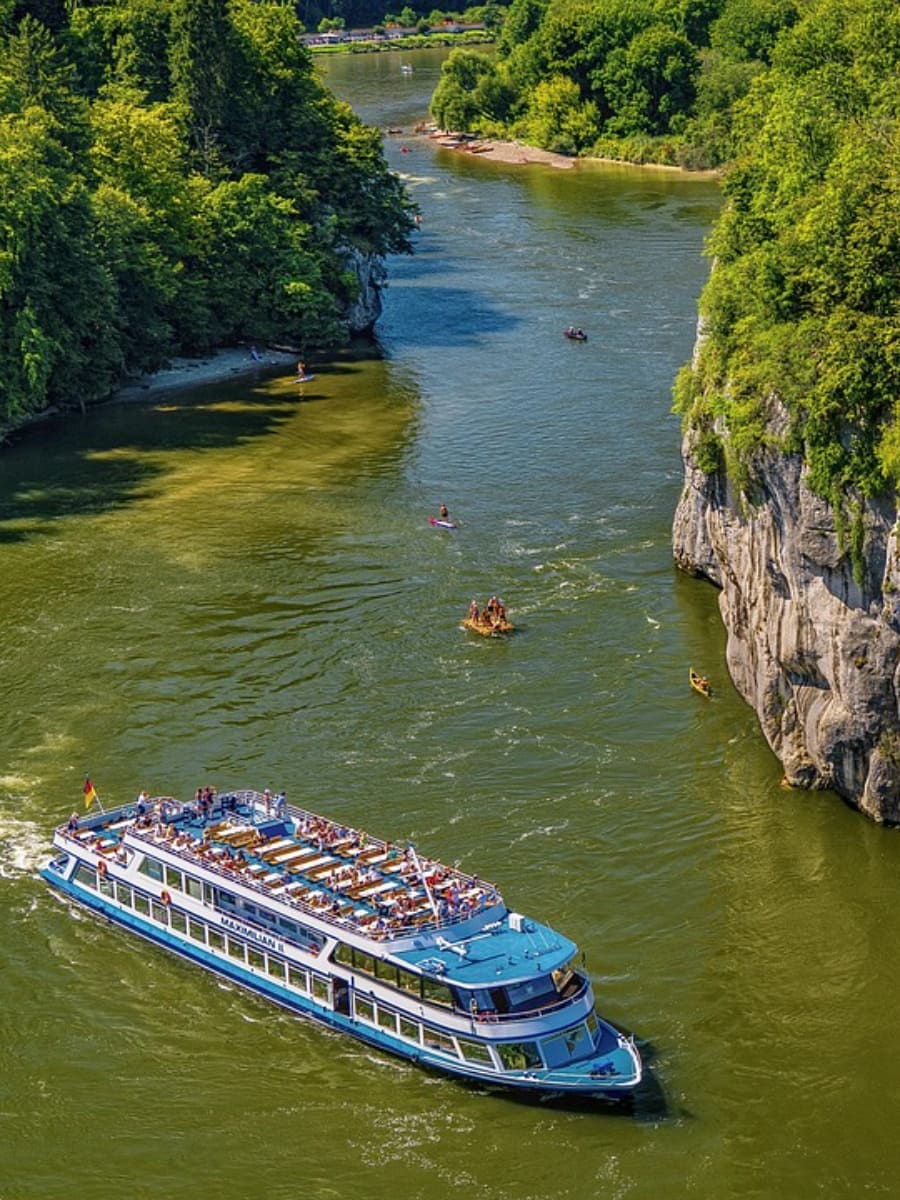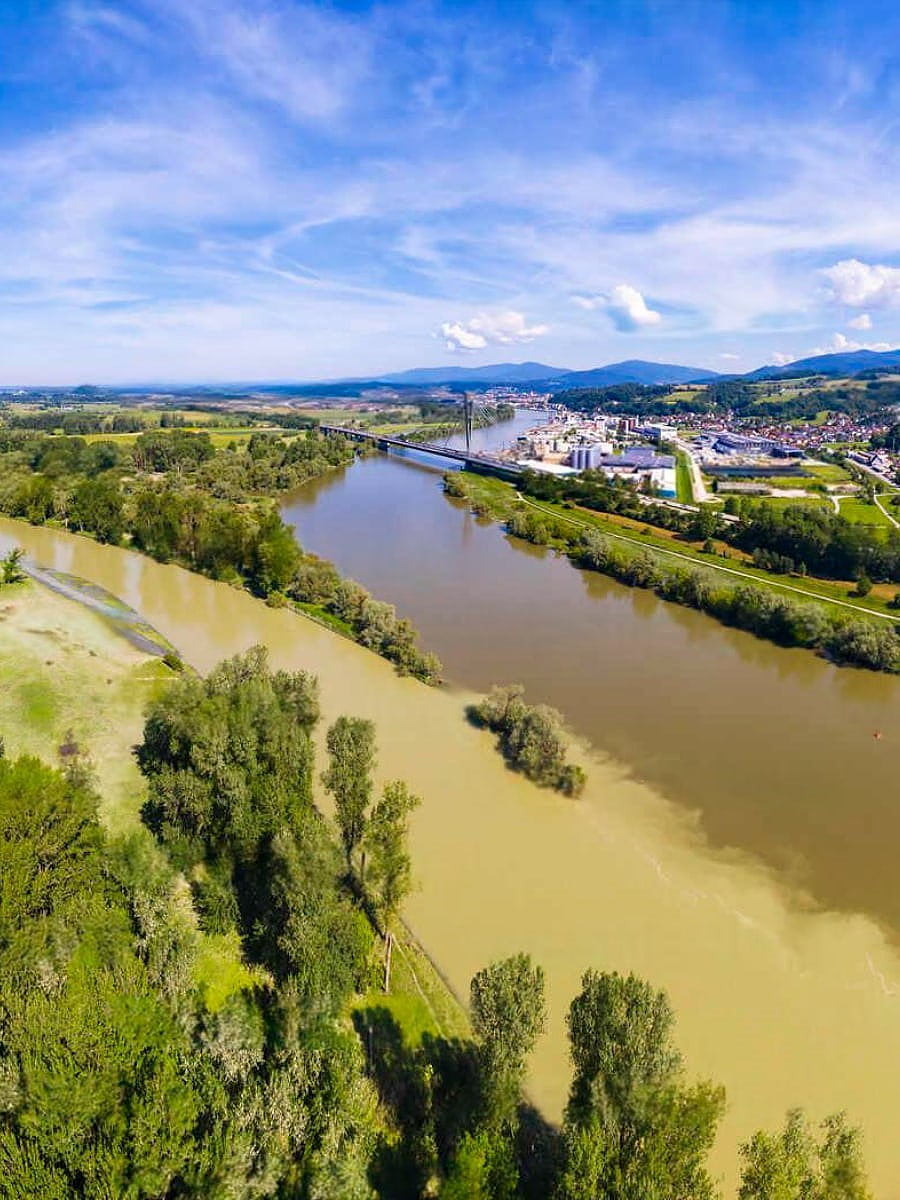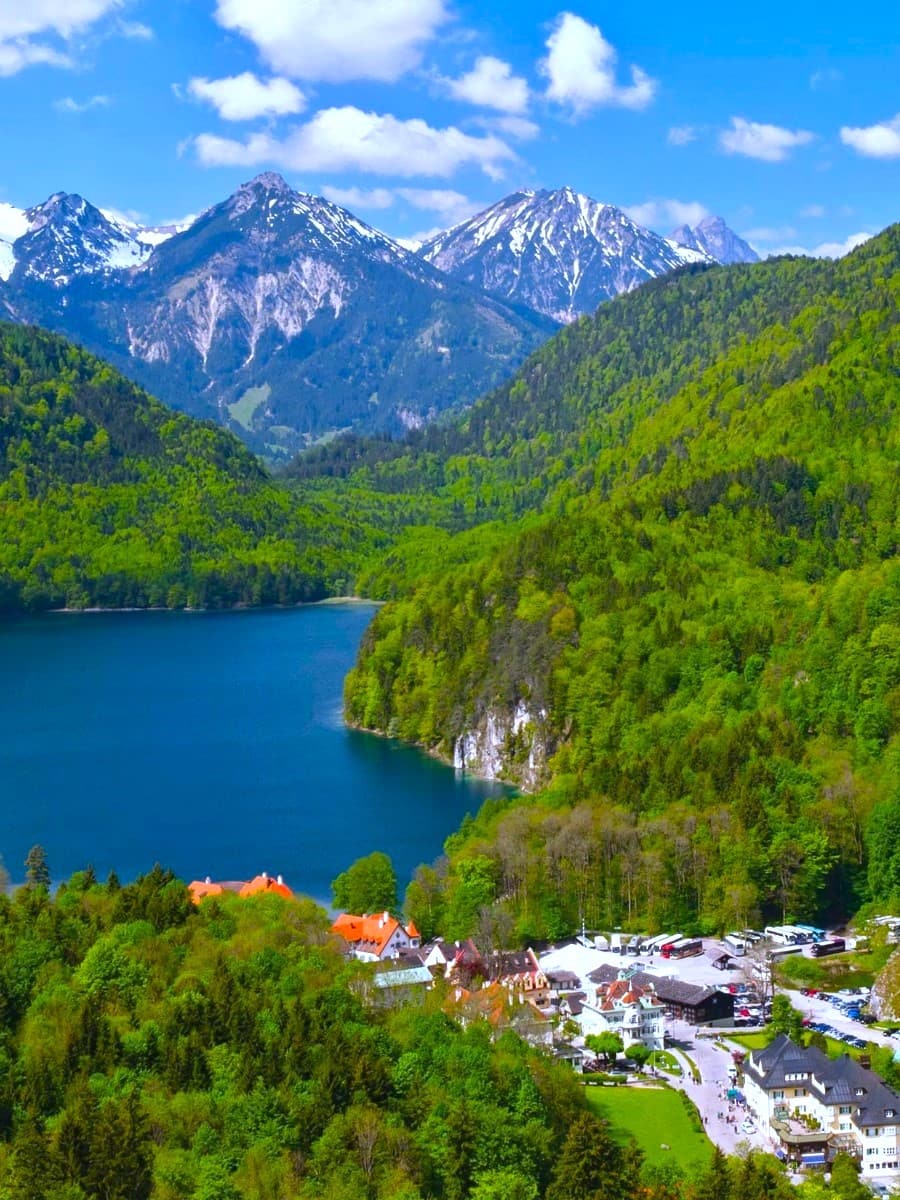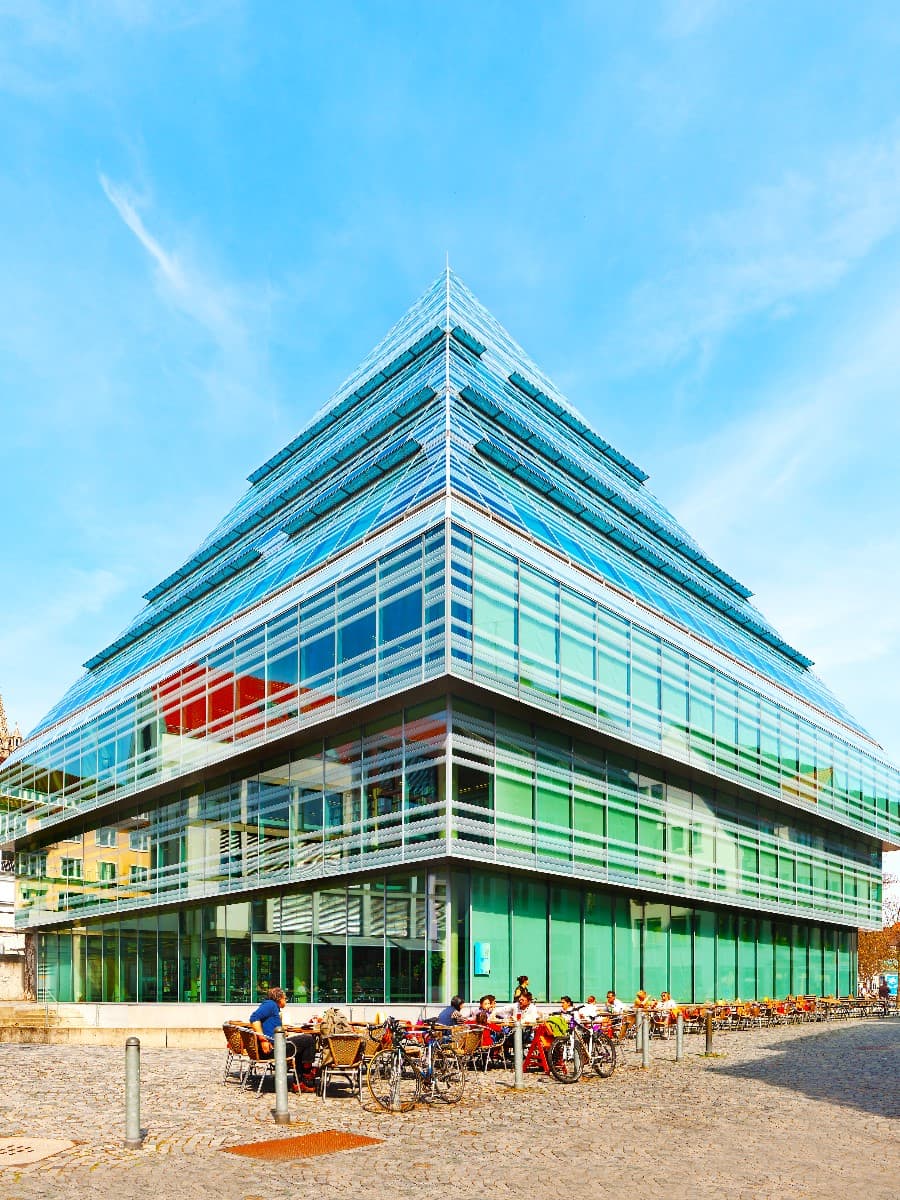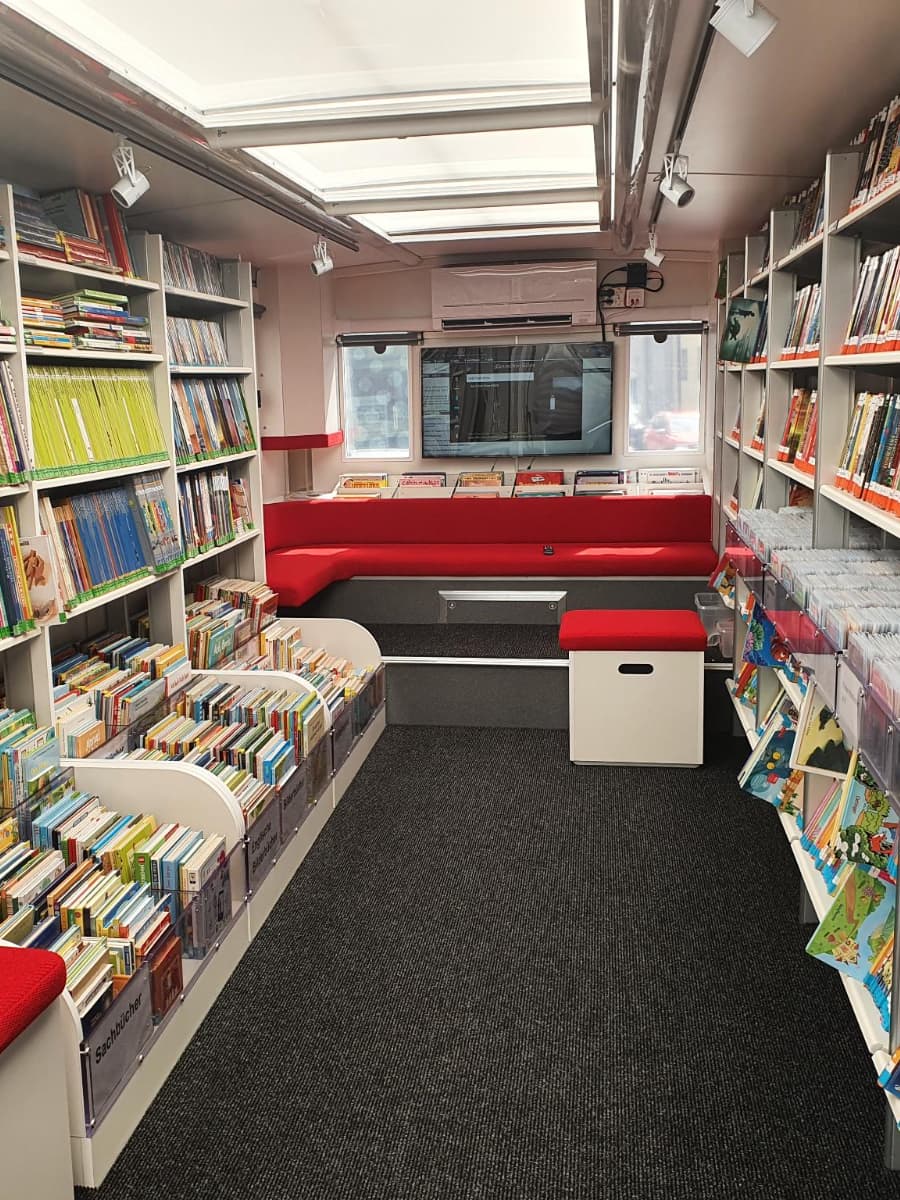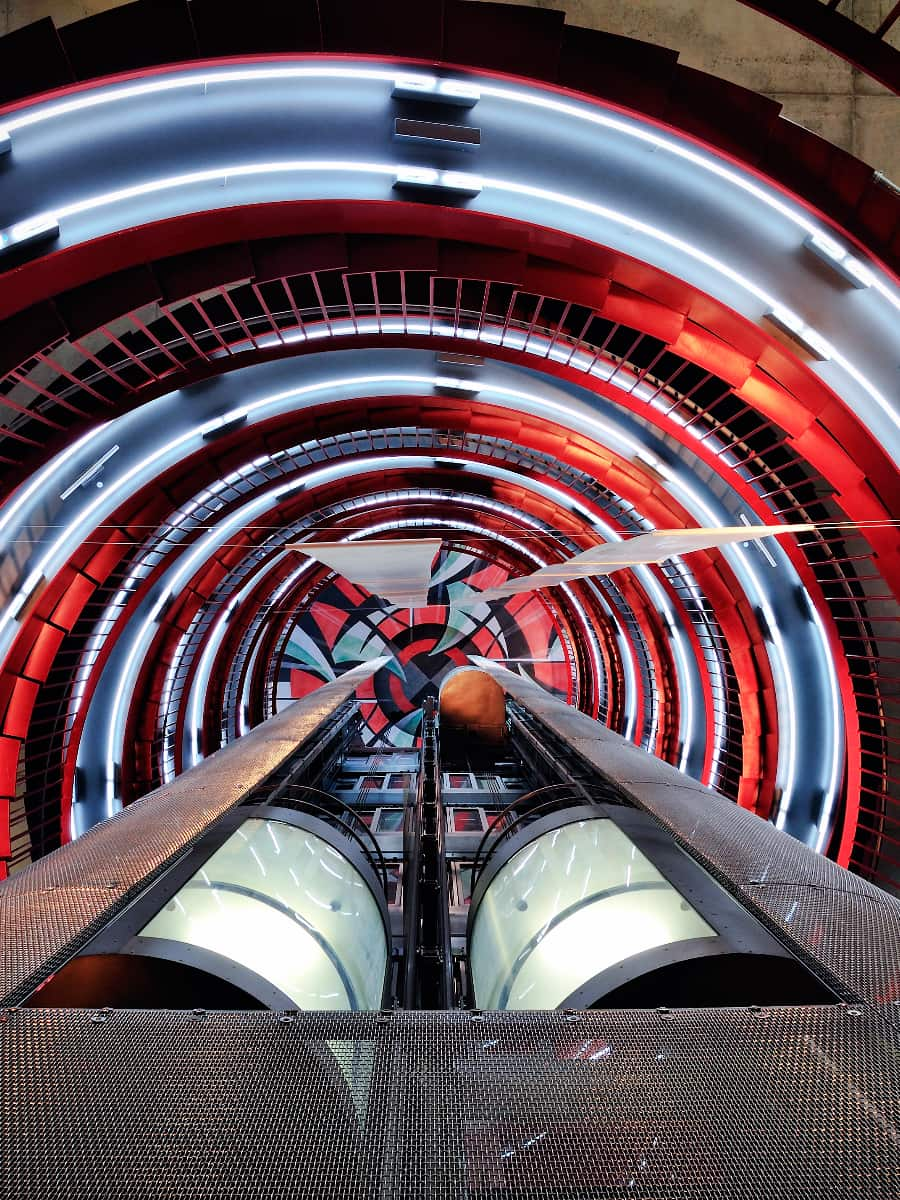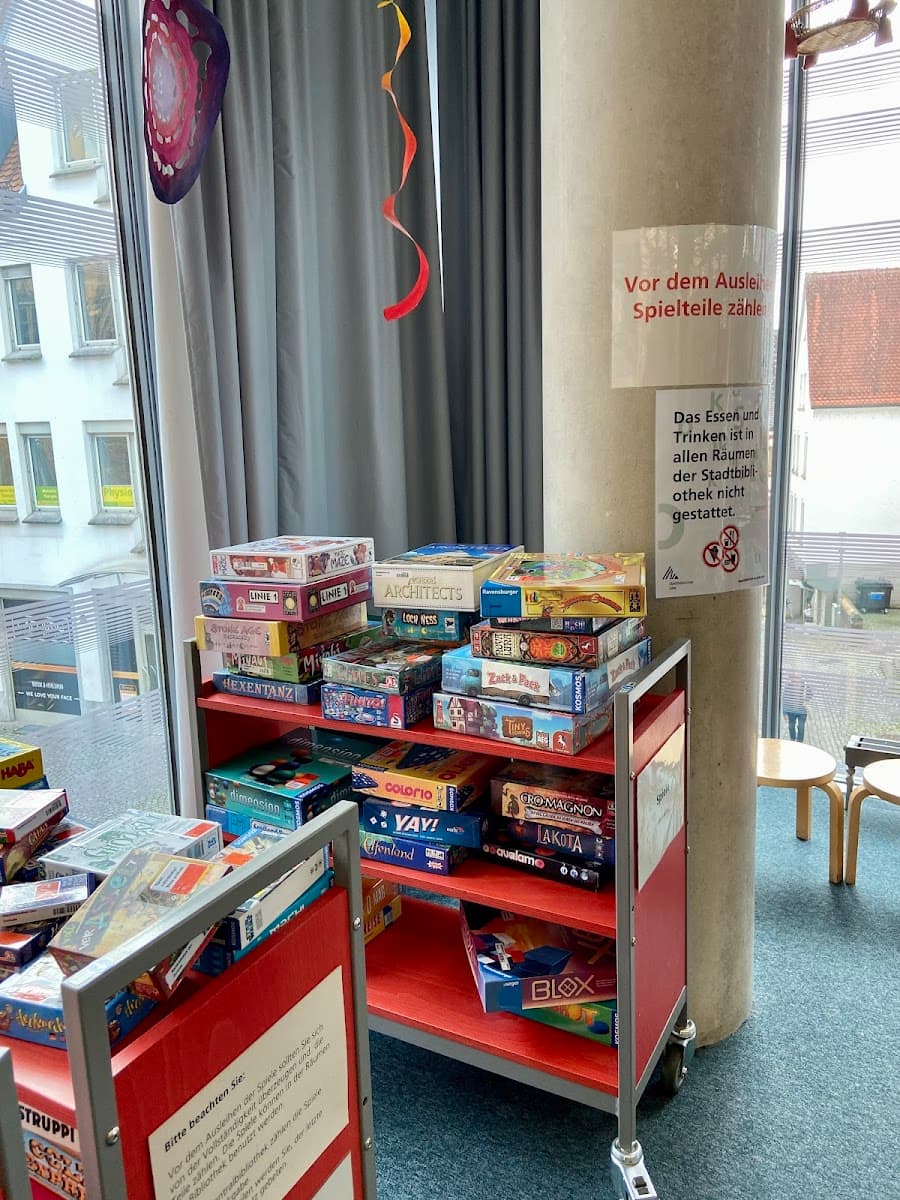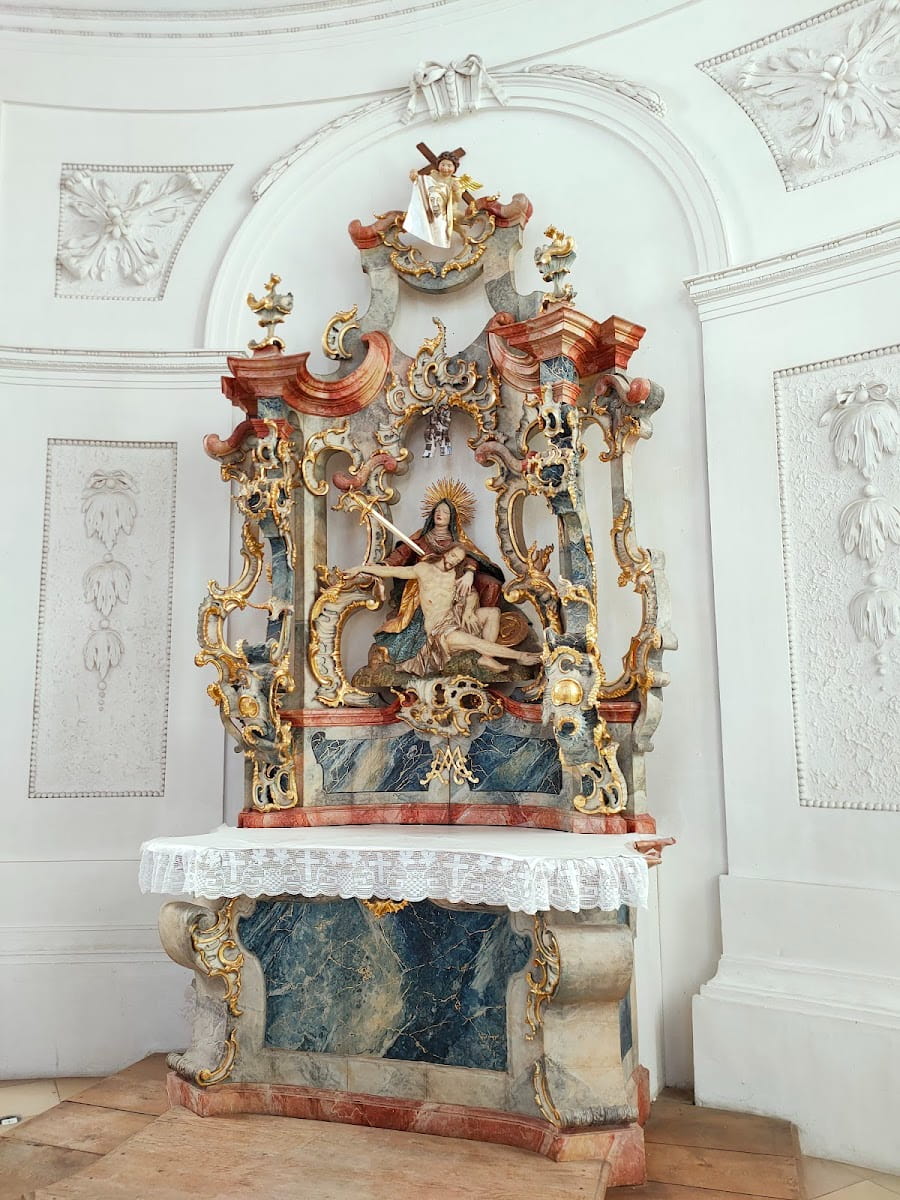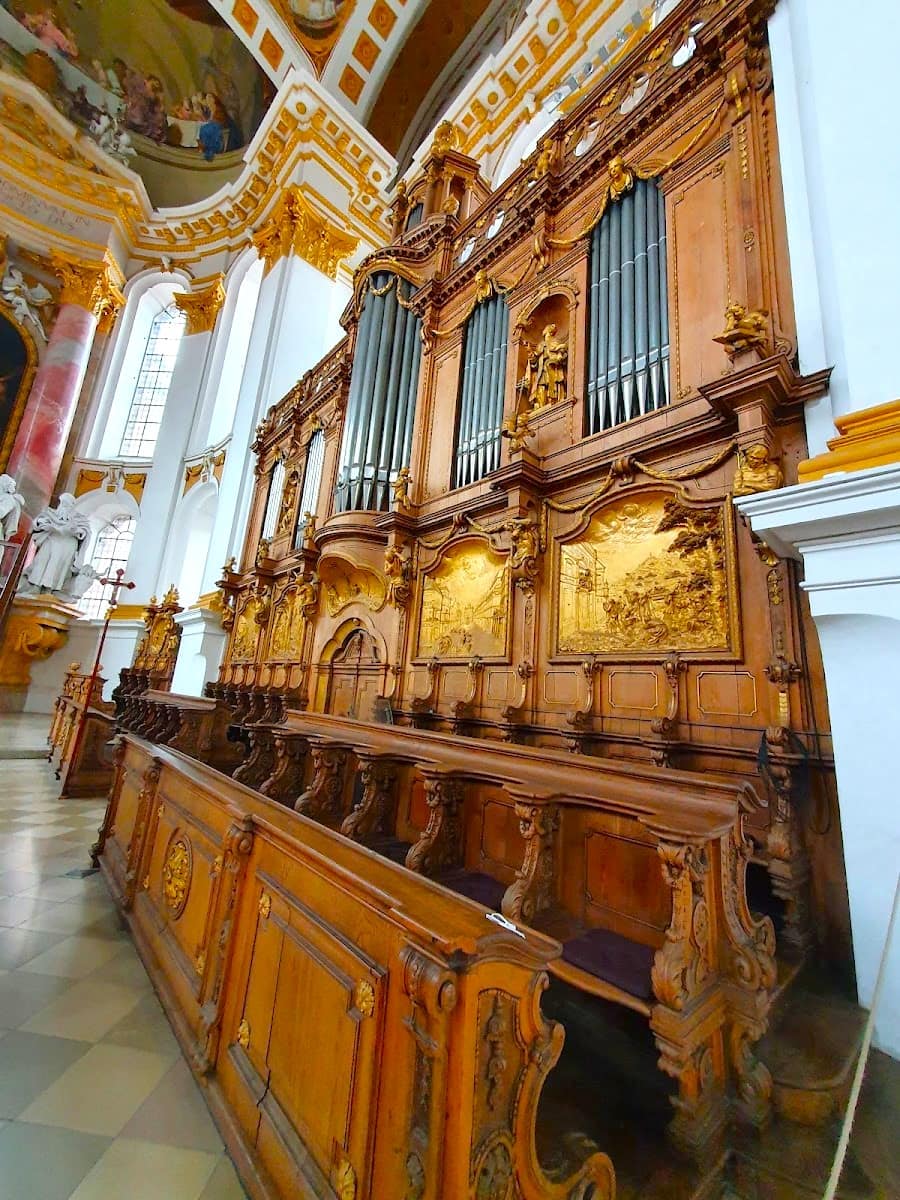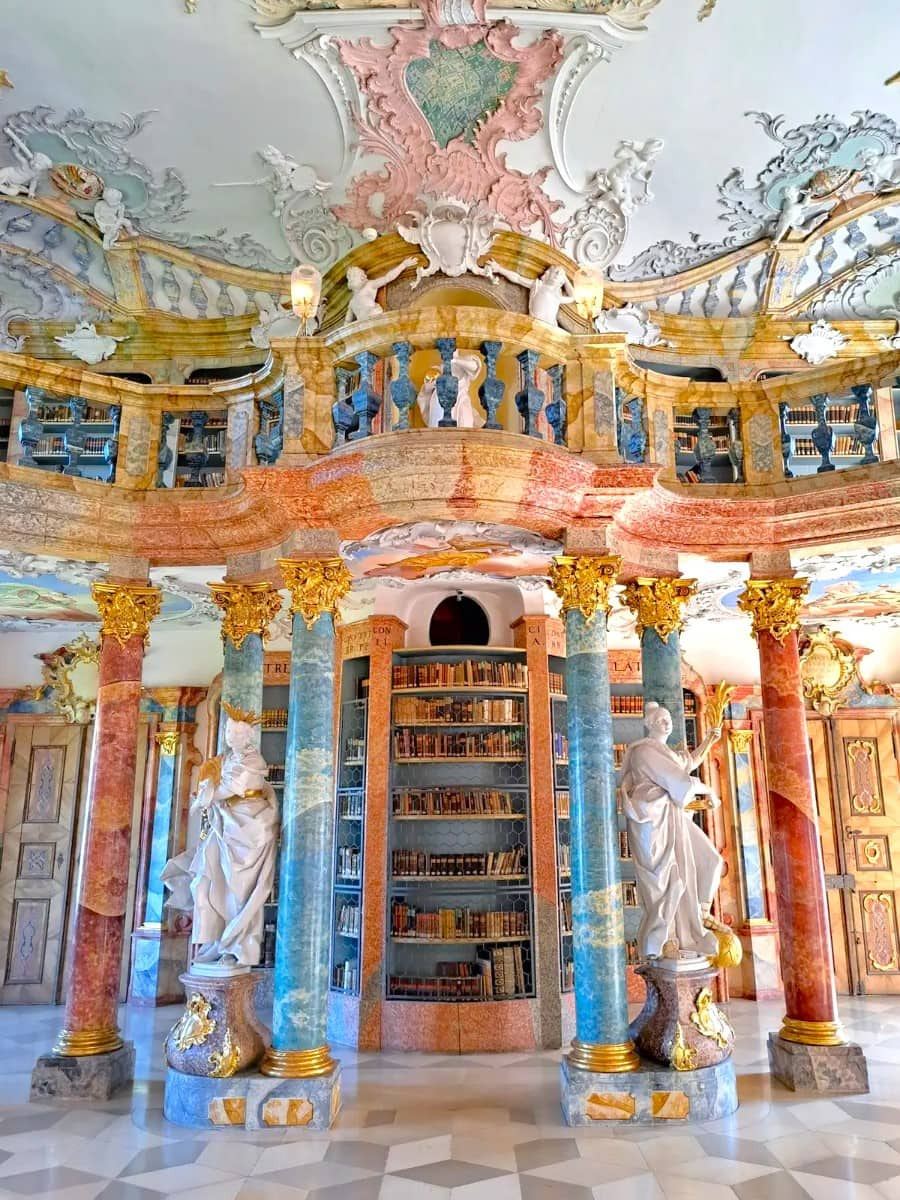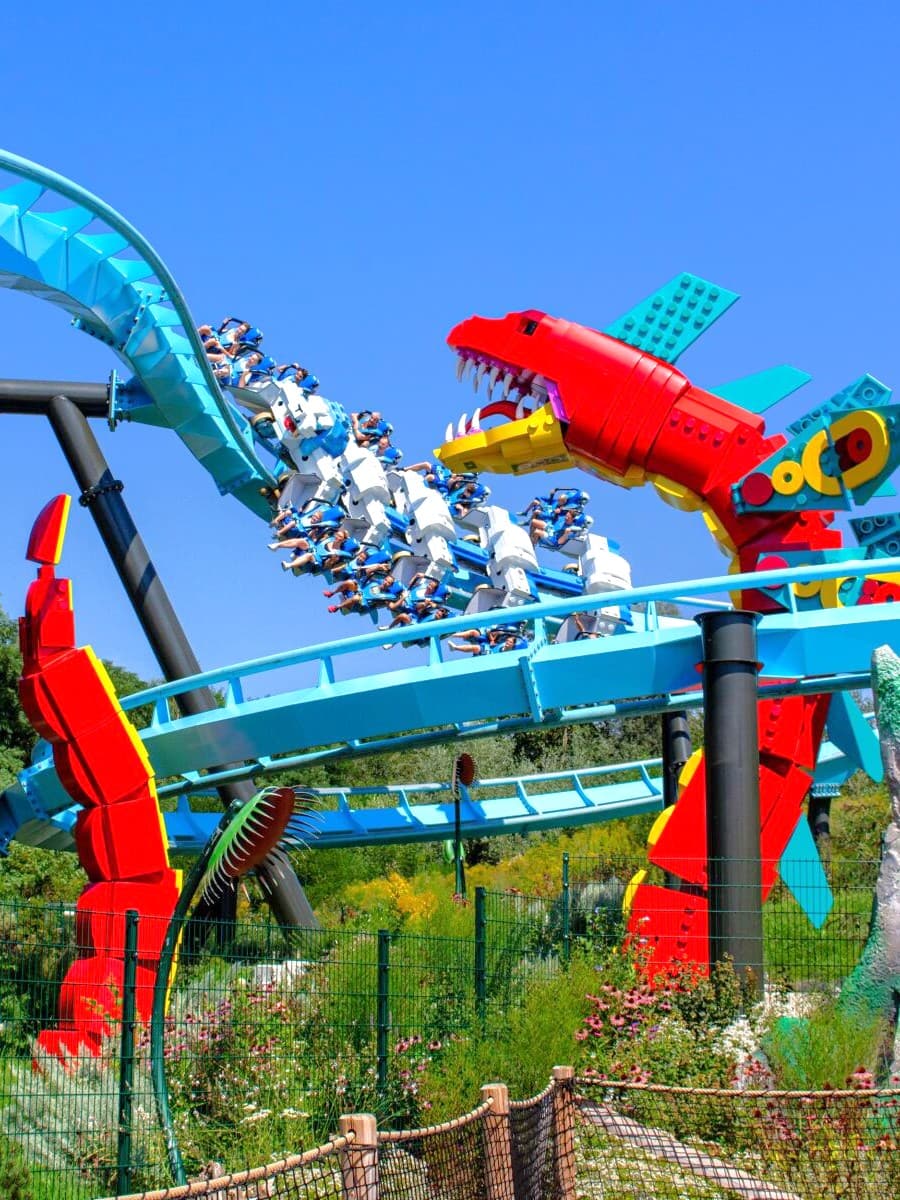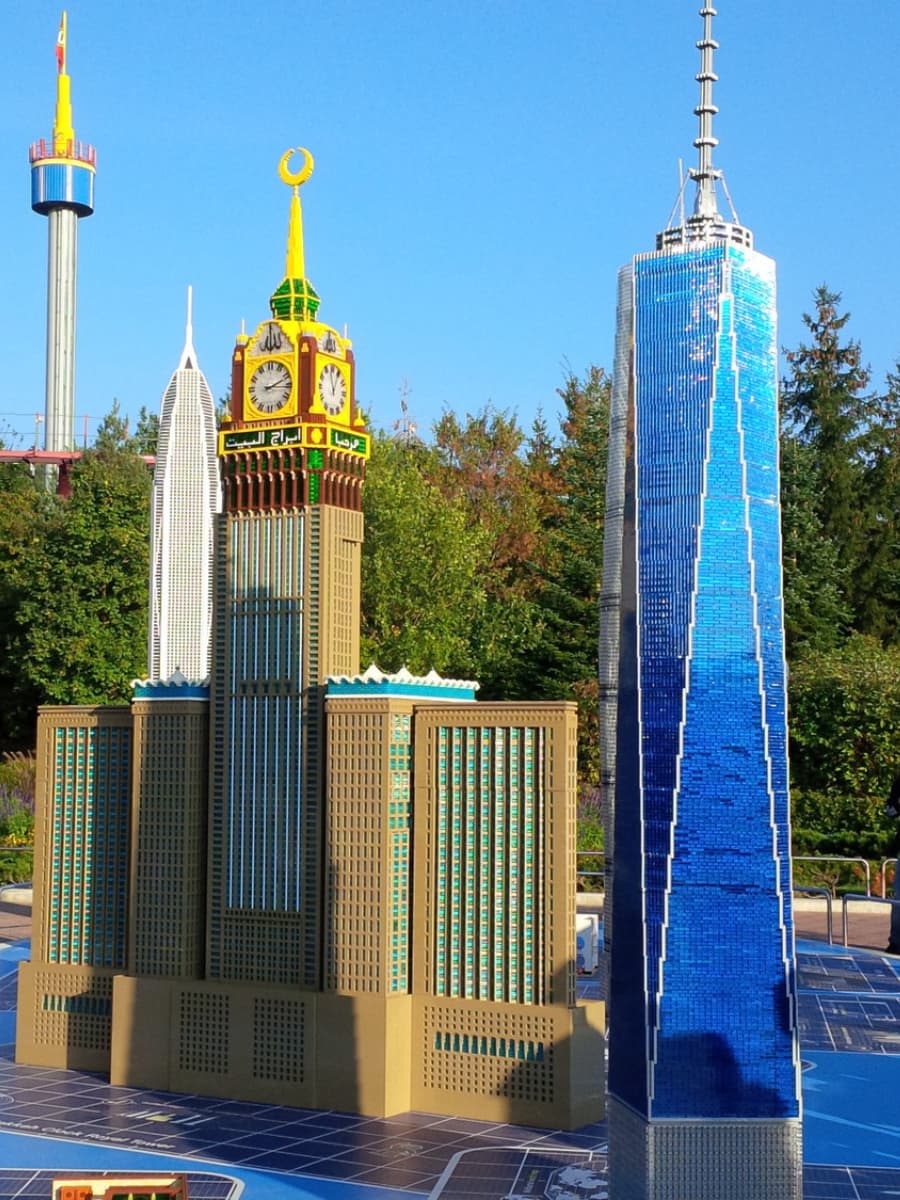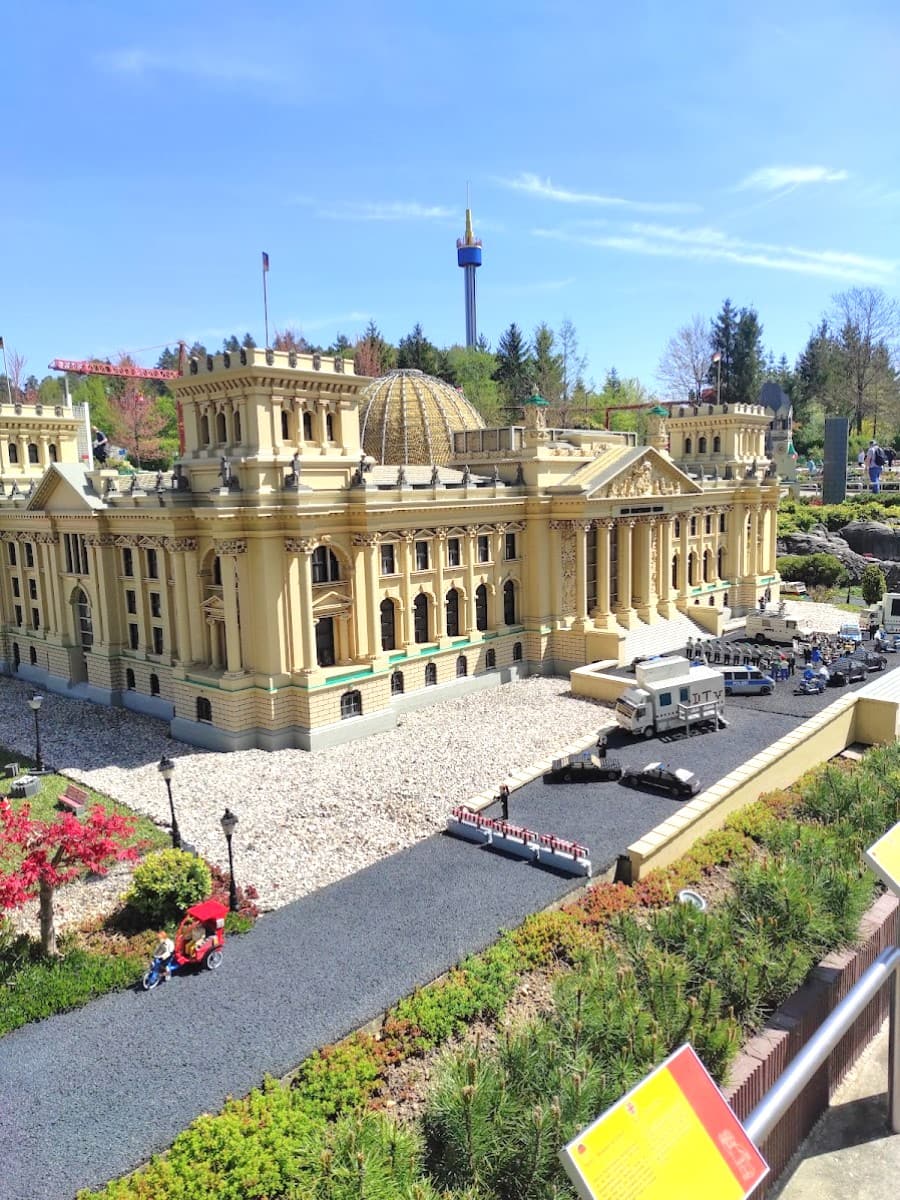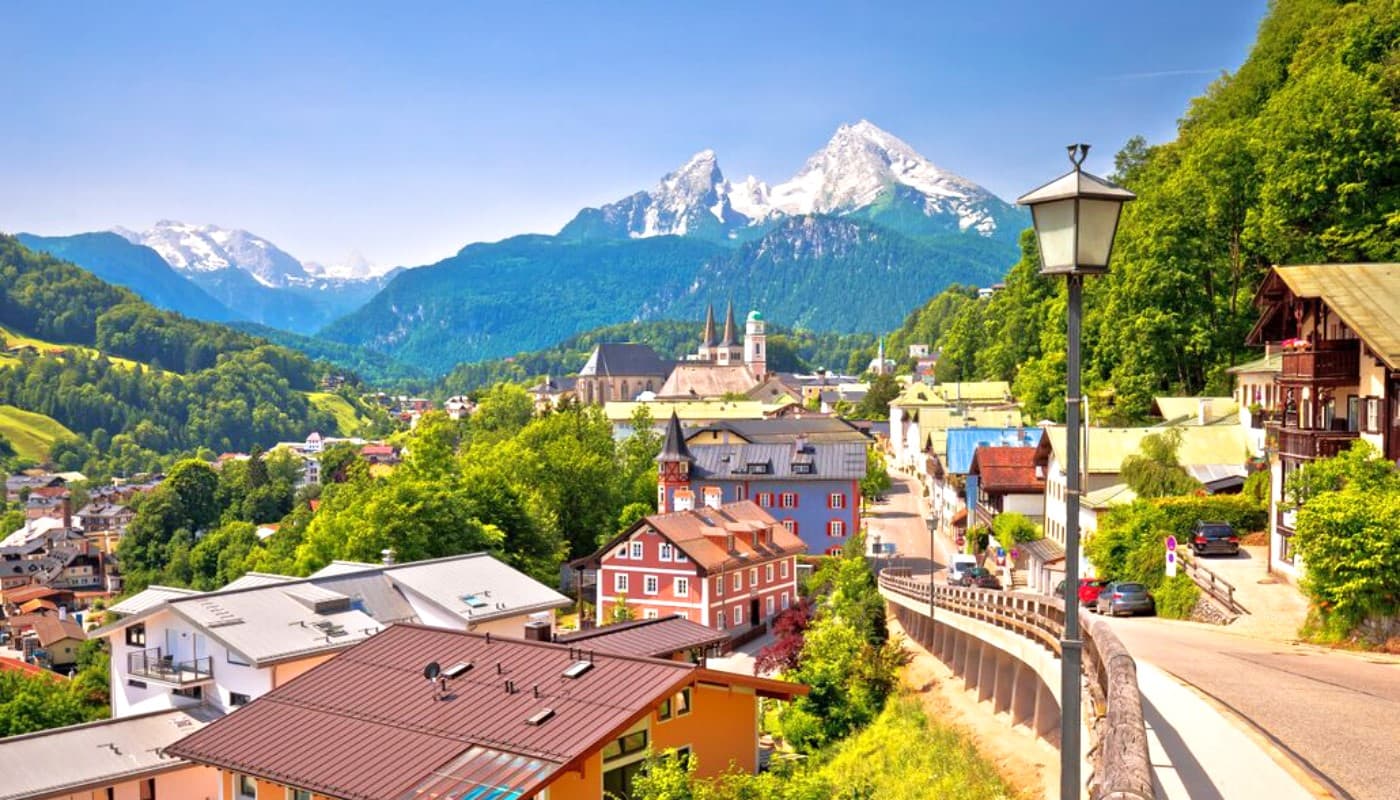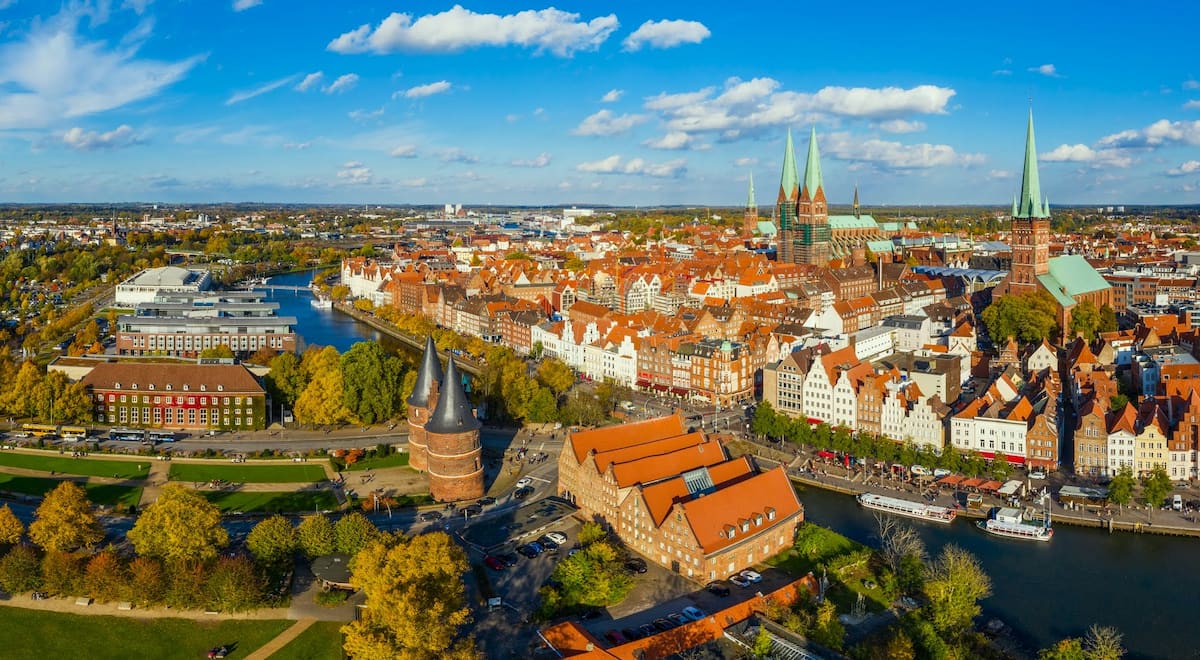Whether you’re drawn to historical landmarks, family-friendly attractions, or seasonal festivities, this two-state city (straddling Baden-Württemberg and Bavaria) delivers an authentic German experience that’s both accessible and memorable.
Where to Stay in Ulm, Germany 🏨
- 💎 Luxury Hotel: Maritim Hotel Ulm
- ✨ 5-Star: Abbate Boutique Hotel
- 🏨 4-Star: Leonardo Royal Hotel Ulm
- 🛏️ 3-Star: Safranberg Hotel & Sauna
- 💸 Cheap: Motel One Ulm
- 🏢 Apartament: F10 APARTMENTS Ulm
- 👨👩👧👦 For Families: iQ-Hotel Ulm
- 🏩 For Couples: Ulmer Münster Hotel
💁 Best Guided Tours
- Ulm: City Center Walking Tour from € 12 (⭐4.8/5)
- Ulm: Evening stroll through the old town from € 12 (⭐4.5/5)
- Ulm Private Walking Tour from € 279 (⭐5)
- Ulm Christmas Market Tour from € 20 (⭐4.7/5)
- La Rioja Small-Group Winery Tour From ulm With Lunch from € 15 (⭐4.9/5)
Best Things to Do in Ulm, Germany
1. Ulm Minster (Ulmer Münster)
Towering Achievement. Standing beneath Ulm Minster, I felt like an ant looking up at a mountain. This Gothic masterpiece isn’t just another European church—it boasts the tallest church spire in the world at a staggering 161.5 meters. As I began my ascent of the 768 steps, my calves were already protesting, but the thought of the view kept me going. Halfway up, through narrow medieval spiral staircases, I paused at a small window. The city was already spreading out below me, the Danube River cutting a blue path through the urban landscape.
Breathtaking View. When I finally reached the top, I was breathless—partly from exertion but mostly from the panoramic vista. On that clear spring day, I could see all the way to the distant Alps, their snow-capped peaks shimmering on the horizon. The climb costs 7€ (about $7.50) for adults, but the interior of the cathedral itself is free to visit outside of organ concerts.
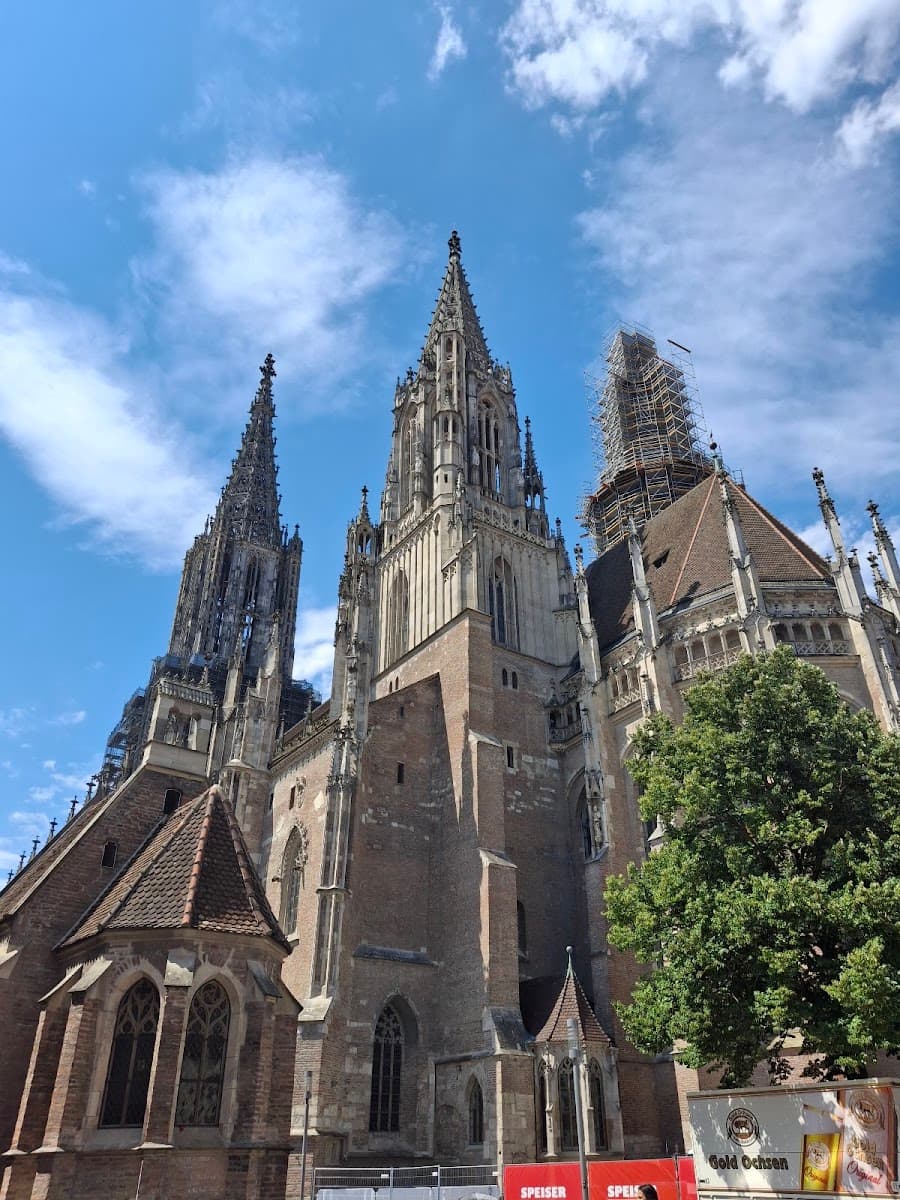
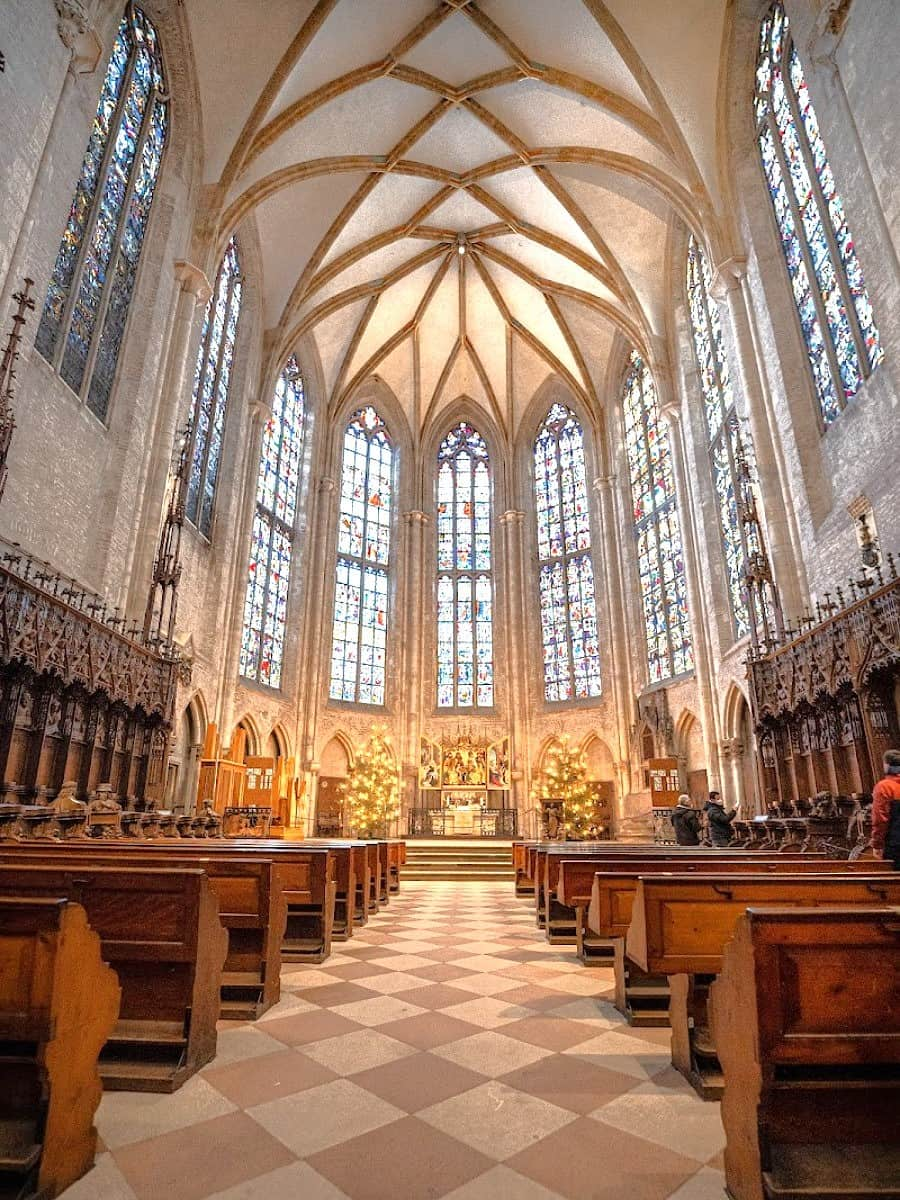
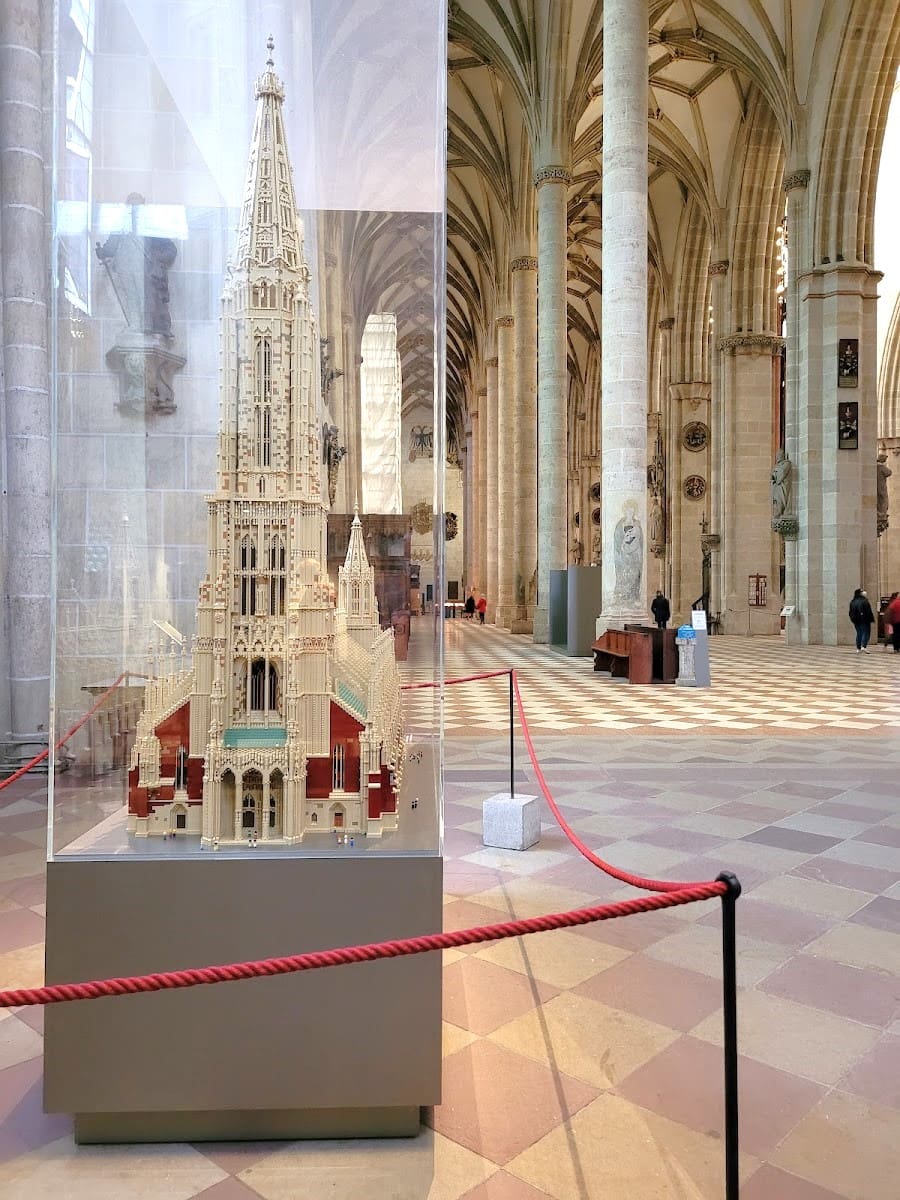
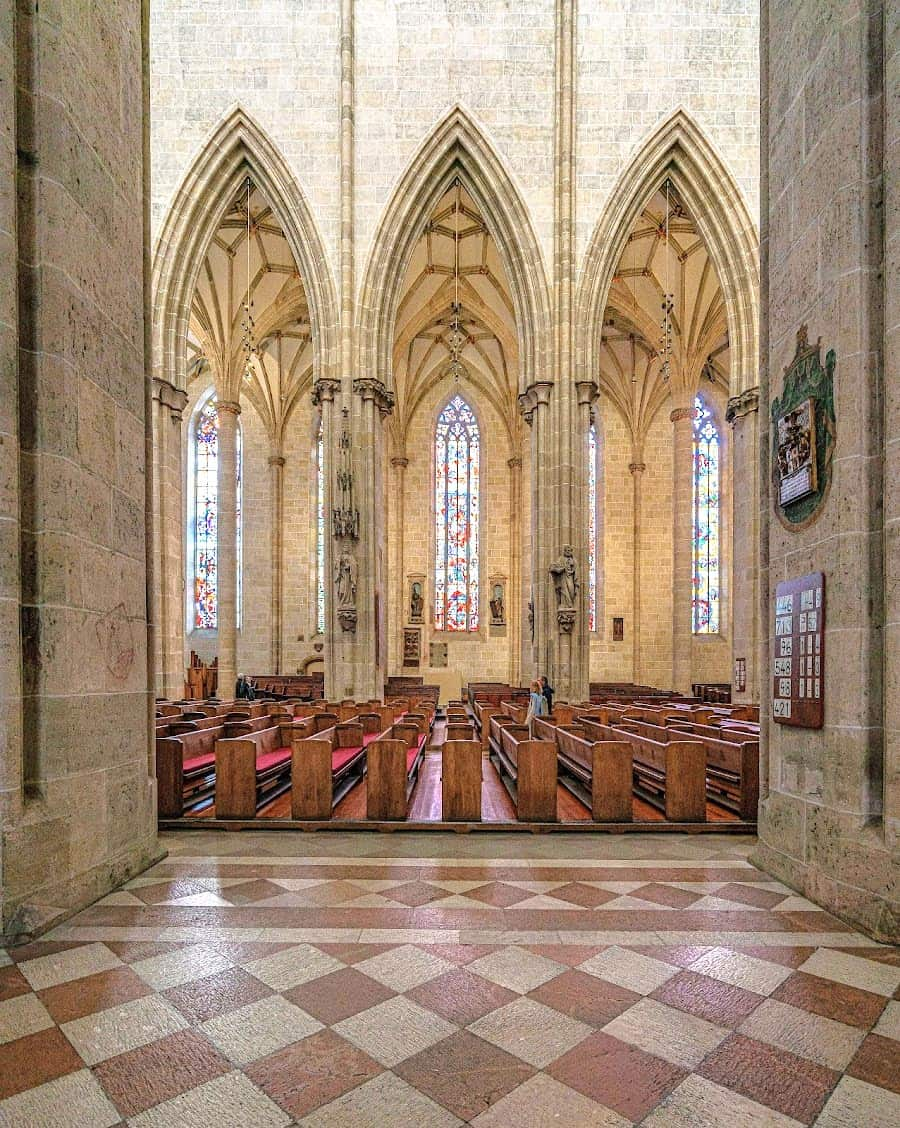
Budget Tip: Visit early in the morning (the tower opens at 9 am) to avoid crowds and enjoy the peaceful atmosphere before tour groups arrive.
Architectural Marvel. After descending, I took time to appreciate the cathedral’s interior. Construction began in 1377 and wasn’t completed until 1890—a project spanning over 500 years! The soaring nave features delicate ribbed vaulting, and the choir stalls, carved from oak between 1469 and 1474, display incredible craftsmanship. I was particularly moved by the 15th-century colored glass windows that cast rainbow patterns across the stone floor.
Common Tourist Mistake: Many visitors climb the tower but skip the church interior. Don’t make this error—the stained glass windows and wooden choir stalls are among the finest in Germany.
⭐ Best Activities
- Explore Ulm in 60 Minutes With a Local – From Ulm Minster to Ulmer Rathaus, get to discover the city’s most defining landmarks.
2. Fishermen’s Quarter (Fischerviertel)
Medieval Charm. Just a short walk from Ulm Minster, I discovered what quickly became my favorite area in Ulm—the picturesque Fischerviertel (Fishermen’s Quarter). Set around where the River Blau flows into the Danube, this beautifully restored medieval district feels like stepping into a fairy tale. Half-timbered houses lean toward each other across narrow cobblestone alleys, while small footbridges cross the canals where fishermen once plied their trade.
Timeless Beauty. I spent a full afternoon getting lost in its winding streets, discovering hidden corners and taking countless photos. The area is especially magical in the evening when old structures are illuminated and reflected in the gentle waters of the canals.
Culinary Delights. Hungry after exploring, I stopped at Zur Forelle, a traditional restaurant housed in a 16th-century building right on the water. Their specialty is freshwater fish from the Danube, prepared according to centuries-old recipes. I savored a plate of fresh trout with almonds (21€/$22.50) while watching ducks paddle by my window. For dessert, I couldn’t resist trying Ulm’s famous Ulmer Zuckerbrot, a sweet bread with a hint of anise, at Café am Münster (4.50€/$4.80 per slice).
Insider Tip: Visit on Tuesday or Thursday afternoons when local artists often set up easels along the canals, capturing the quarter’s timeless beauty. They’re usually happy to chat about their work and the history of the area.
⭐ Best Activities
- Ulm: City Center Walking Tour – Discover Ulm’s historic city center on walking tour with a qualified guide. Visit the magnificent Ulm Minster, the highlight of the city.
3. Crooked House (Schiefes Haus)
Defying Gravity. While exploring the Fishermen’s Quarter, I couldn’t miss the famous Schiefes Haus (Crooked House), a 14th-century timber-framed building that leans precariously over the Blau River. Recognized by Guinness World Records as the “world’s most crooked hotel,” it tilts at an improbable angle that made me feel slightly dizzy just looking at it. I noticed many tourists tilting their heads while taking pictures, unconsciously mimicking the house’s lean.
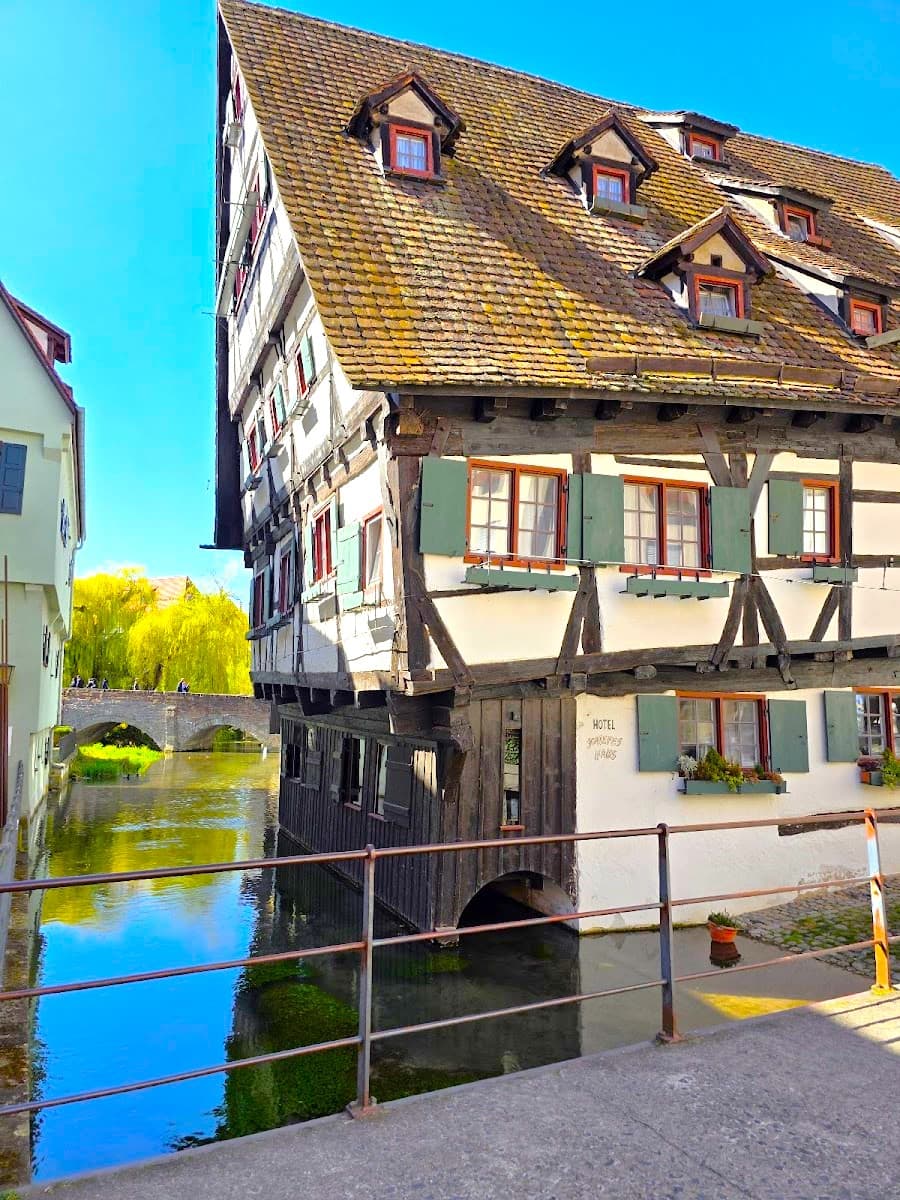
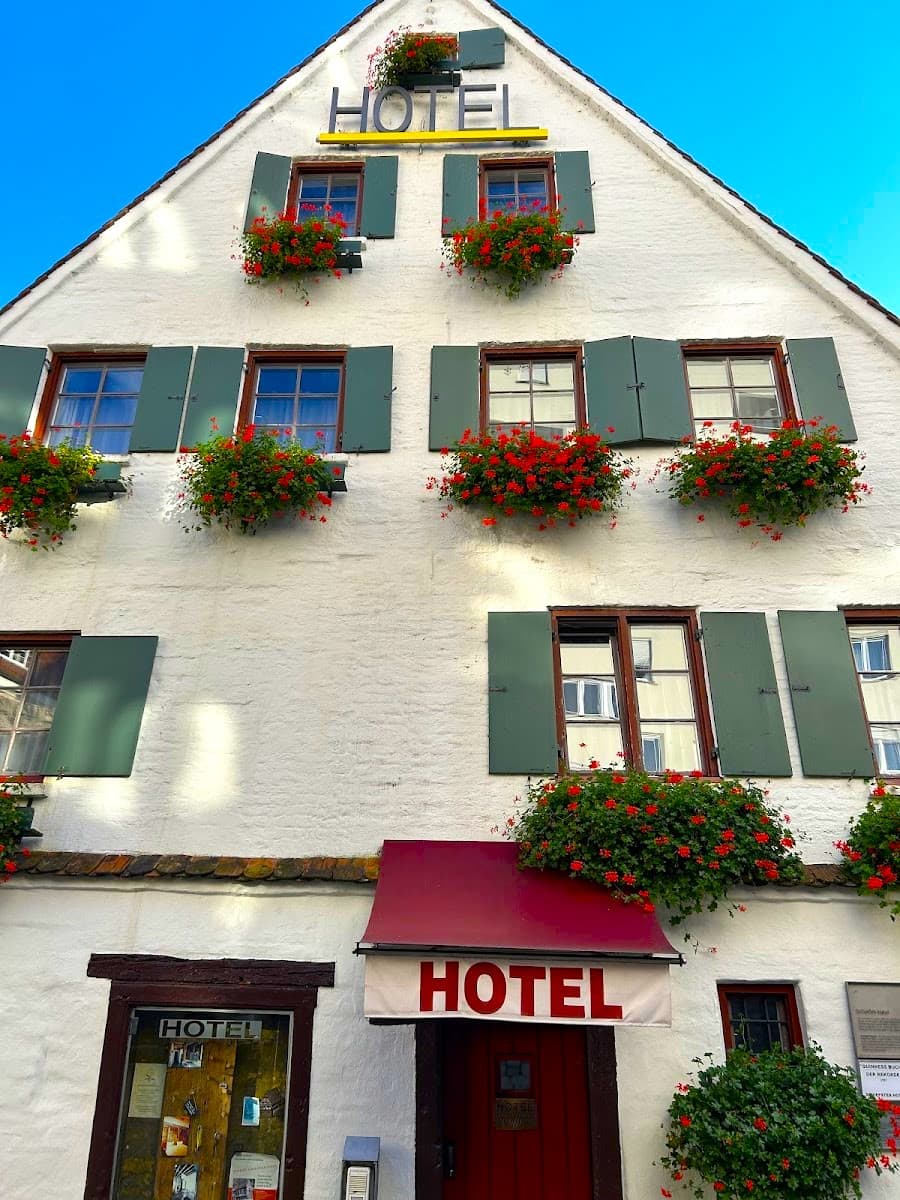
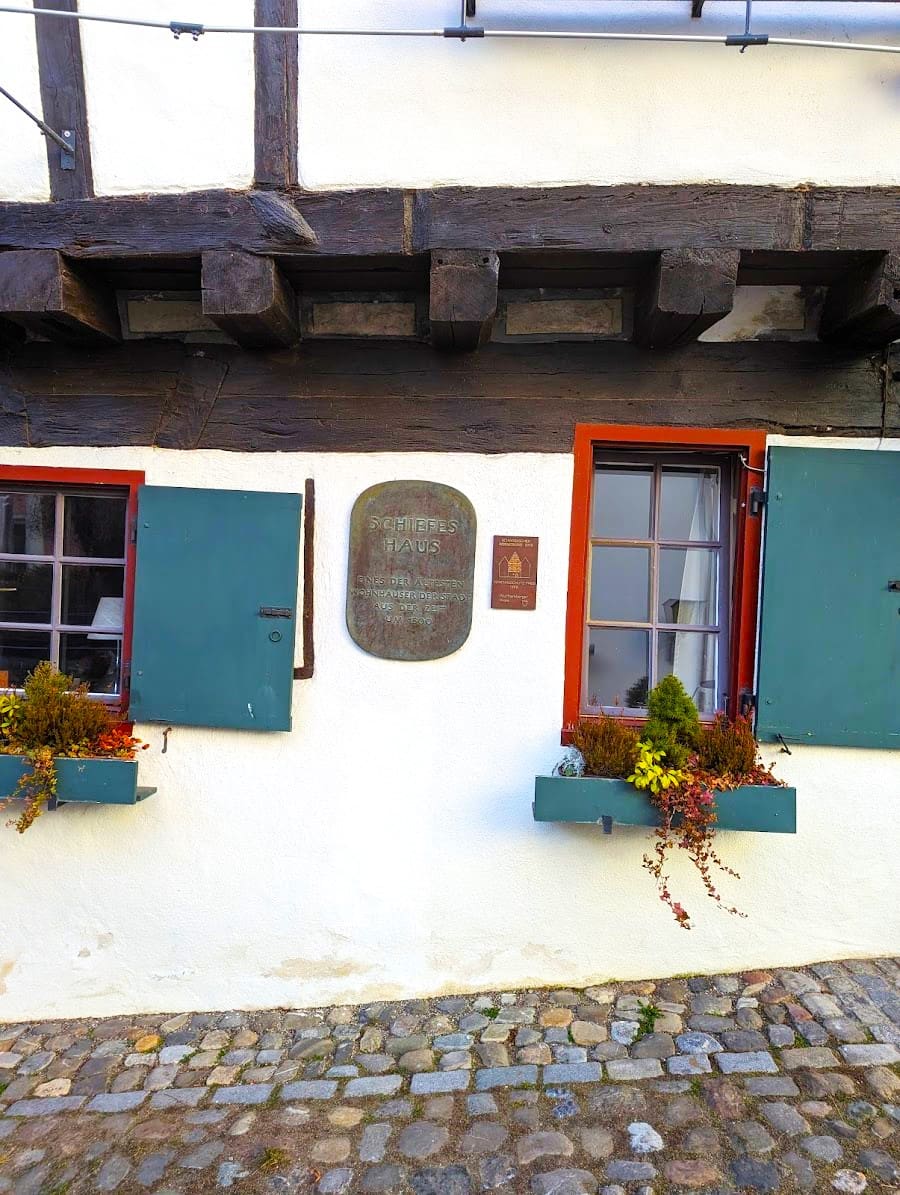
Timeless Resilience. Built in 1443, this former fisherman’s house has settled over the centuries due to the damp ground near the river. Rather than demolish it, the clever Ulmers reinforced the structure while preserving its unique character. Today, it stands as a perfect symbol of the city’s approach to preservation—honoring the past while making it functional for the present.
Photo Opportunity. For the best photo of the Crooked House, I found a small bridge about 20 meters downstream that frames the building perfectly against the water. Early morning offers the most magical light, with fewer tourists to navigate around.
⭐ Best Activities
- Ulm's History, Record Walking Tour – Birthplace of Albert Einstein and home to the ancient Lion Man sculpture, Ulm blends its rich past with a vibrant present, offering a unique walking tour through its main highlights.
4. Ulm City Walls (Stadtmauer)
Historic Defenses. Walking along Ulm’s well-preserved 15th-century town walls offered another perspective on the old town. Built in 1482 along the Danube, these defensive structures circle from the Lauseck Bastion through the Fishermen’s Quarter. During my stroll, I discovered the leaning Metzgerturm (Butchers’ Tower), which tilts several feet off vertical—apparently due to the storage of too much meat in medieval times!
Scenic Riverside Retreat. The walls provide excellent viewpoints and peaceful spots for a riverside picnic. I particularly enjoyed the section near Gänsturm (Goose Tower), where the path runs alongside the Danube and offers stunning views of Neu-Ulm across the river.
Sunset Magic. I timed my walk along the city walls to coincide with sunset, and it was a decision I didn’t regret. The golden light bathed the ancient stones in warm hues, while the Danube reflected the changing colors of the sky. This is when I truly felt the historical significance of Ulm—a city that has witnessed centuries of European history flow by, just like the river at its heart.
5. Albert Einstein Fountain
Scientific Heritage. Few visitors realize that Ulm is the birthplace of Albert Einstein, who was born here in 1879 before his family moved to Munich. To honor their famous son, the city commissioned the unusual Einstein Brunnen (Einstein Fountain) in Münsterplatz. This quirky cast bronze sculpture depicts a large snail (representing nature and wisdom) standing on a rocket (symbolizing Einstein’s studies in time, space, and atomic theory) that shoots water from its base. From the snail emerges Einstein’s head with his tongue stuck out and wild hair.
Whimsical Tribute. Created by Jürgen Goertz in 1984, the fountain perfectly captures Einstein’s playful intellect and revolutionary thinking. I spent a good fifteen minutes circling it, discovering new details with each pass.
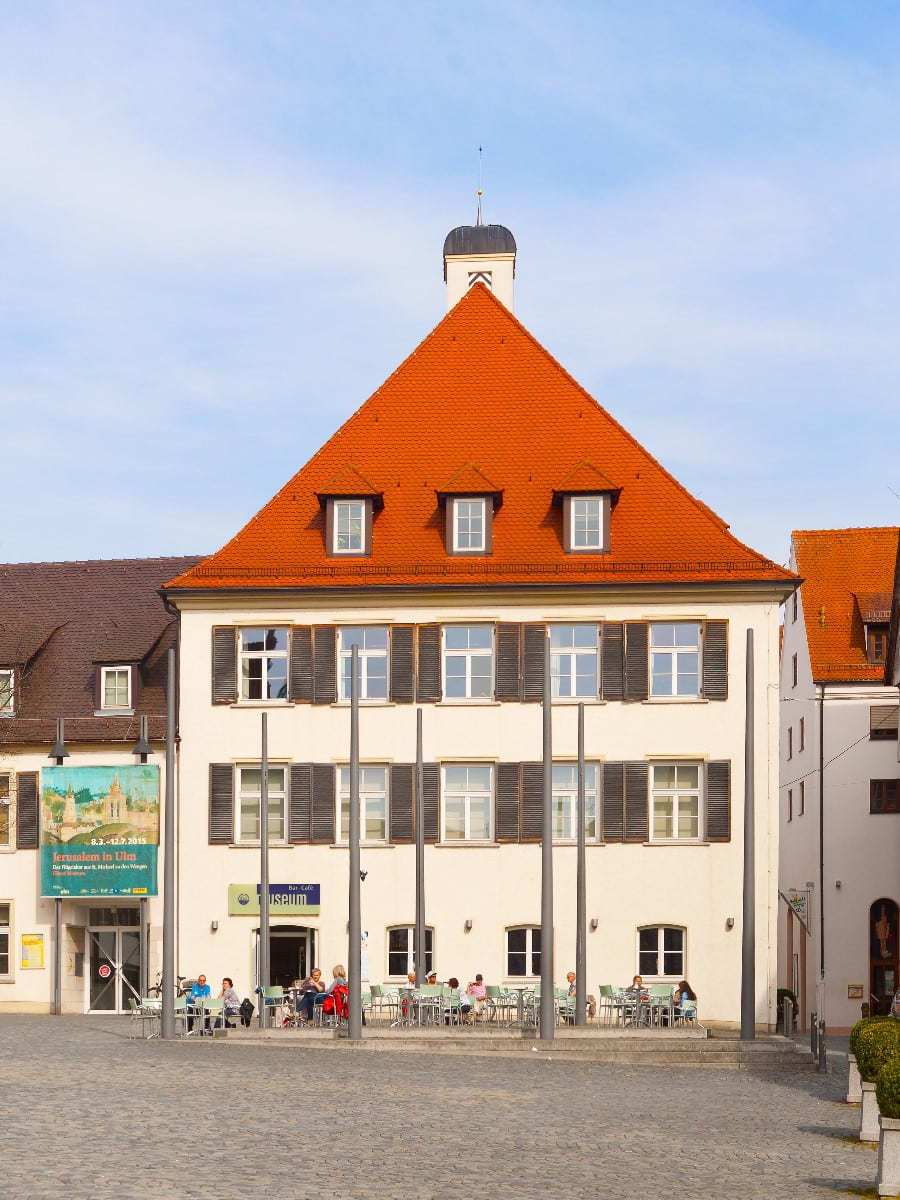
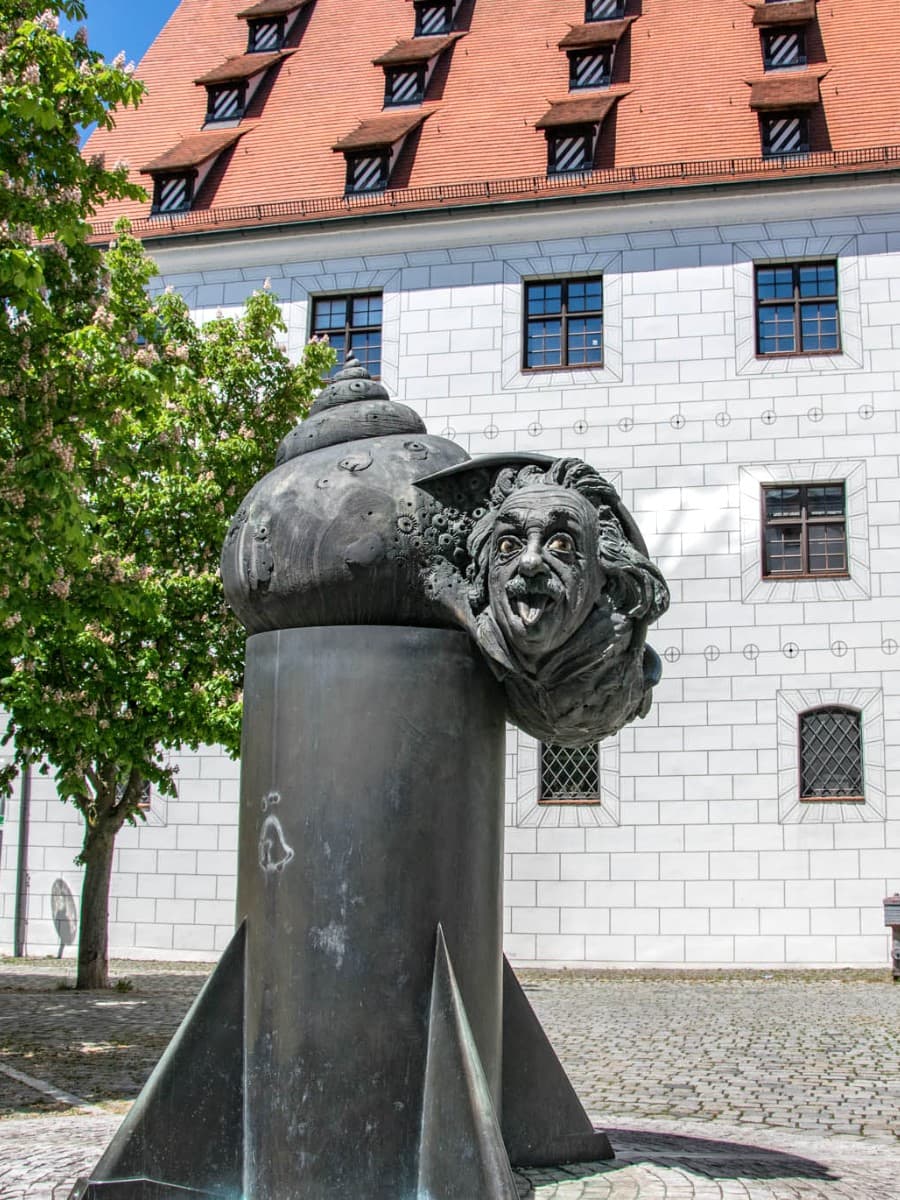
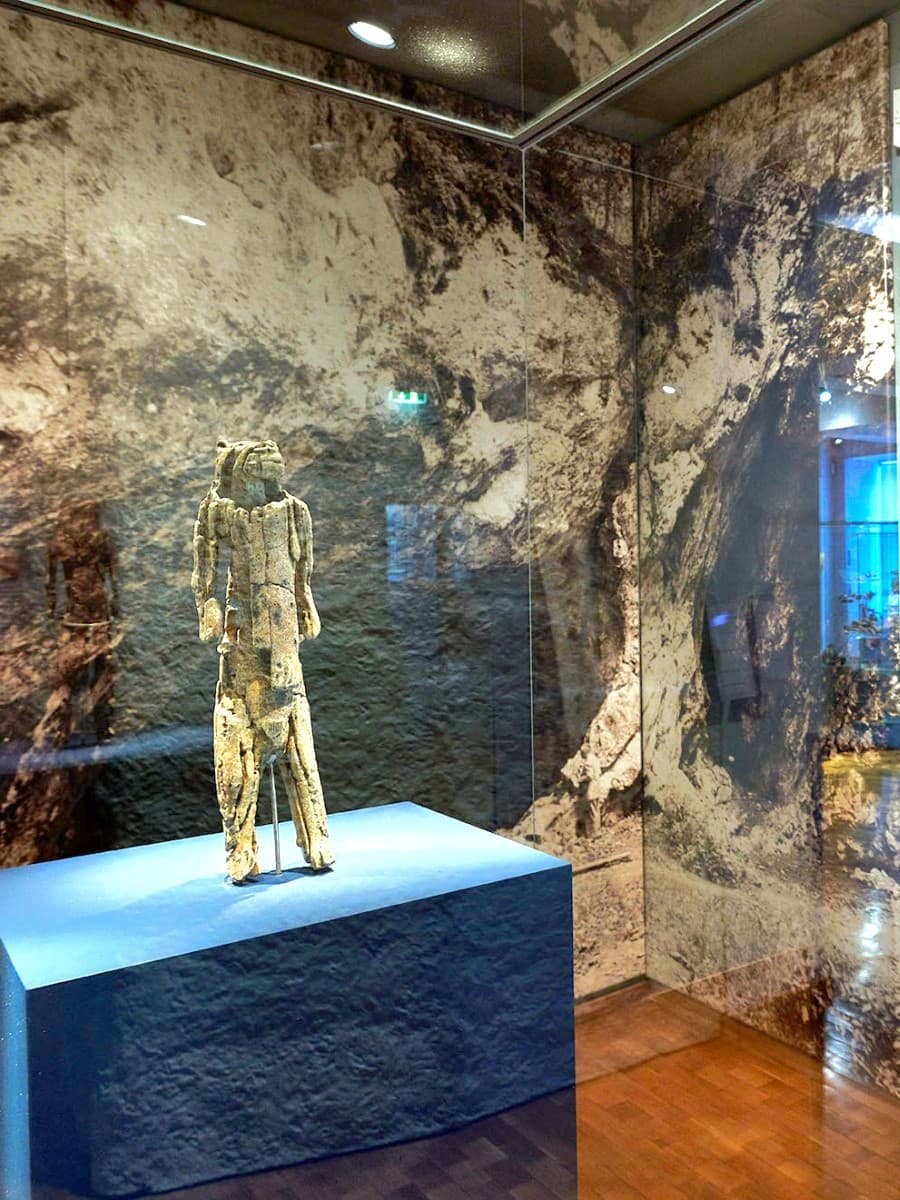
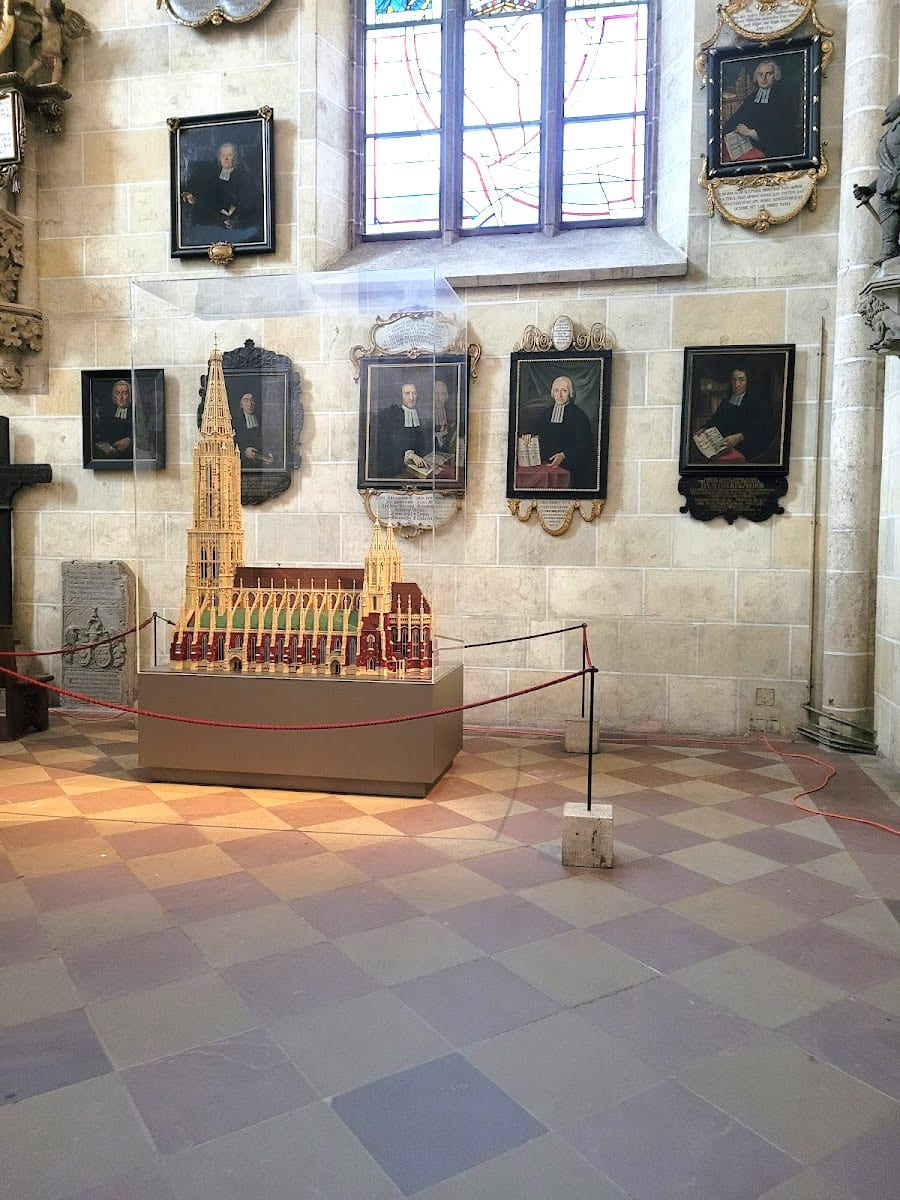
Price Comparison: Top Attractions in Ulm
| Attraction | Adult Price | Opening Hours | Notes |
|---|---|---|---|
| Ulm Minster Climb | 7€ ($7.50) | 9am-5pm (Apr-Oct) | 768 steps to the top |
| Ulm Minster Interior | Free | 9am-6pm | Except during services |
| Fishermen’s Quarter | Free | Always open | Self-guided walking |
| City Walls Walk | Free | Always open | Best at sunset |
| Einstein Fountain | Free | Always open | Located near Münsterplatz |
| Museum Ulm | 8€ ($8.60) | Tues-Sun 11am-5pm | Free first Friday monthly |
Cultural Immersion. To round out my exploration of Ulm’s top attractions, I visited the Ulm Museum, housed in a former monastery near the Minster. The highlight was seeing the Lion Man (Löwenmensch), a 40,000-year-old ivory figurine discovered in a nearby cave that’s one of the oldest known examples of figurative art in the world. Standing before this ancient sculpture, I felt a profound connection to the earliest human artists who once called this region home.
Budget Tip: Consider purchasing the UlmCard (9.50€/$10.20) if you plan to visit multiple museums and use public transport. It includes free admission to eight museums, complimentary public transportation, and various discounts at cafés and restaurants.
Things to do in Ulm with Kids
1. Tiergarten Ulm
Animal Adventures. Visiting Ulm with my sister’s two children (ages 6 and 9), I was initially worried about keeping them entertained after our third church visit. That’s when we discovered the Tiergarten Ulm in the Friedrichsau park, and it became an instant hit! This compact zoo and aquarium begins with a fascinating underwater tunnel teeming with native fish species. My nephew pressed his nose against the glass, mesmerized by the silvery schools darting overhead.
Animal Encounters. The winding path then leads past all manner of animals in terrariums, aquariums, a tropical house, and outdoor enclosures. The kids absolutely fell in love with the comical meerkats, who seemed to pose for our photos, and the rotund pot-bellied pigs that waddled up to the fence looking for treats. Even my normally phone-obsessed niece put her device away, completely captivated by the animals.
Practical Details. The Tiergarten is surprisingly affordable at just 5€ ($5.40) for adults and 2.50€ ($2.70) for children aged 6-16, while kids under 6 enter free. We spent nearly three hours here, making it excellent value for money. It’s open year-round, though hours vary seasonally (10am-6pm April-October, 10am-4pm November-March).
Budget Tip: Pack a picnic to enjoy in the adjacent Friedrichsau park after your zoo visit. There’s a lovely playground nearby where kids can burn off extra energy while you relax on the grass.
2. Children’s Museum (Kindermuseum)
Hands-On Learning. “Please DO touch the exhibits!” That’s the refreshing philosophy at the children’s museum in the Edwin-Scharff-Museum in Neu-Ulm, just across the Danube from Ulm proper. When I visited with my sister’s family, I was impressed by how the museum transforms learning into play through interactive stations. My niece spent nearly 30 minutes at a station where she could build and test different bridge designs, while my nephew was captivated by the sound experiments.
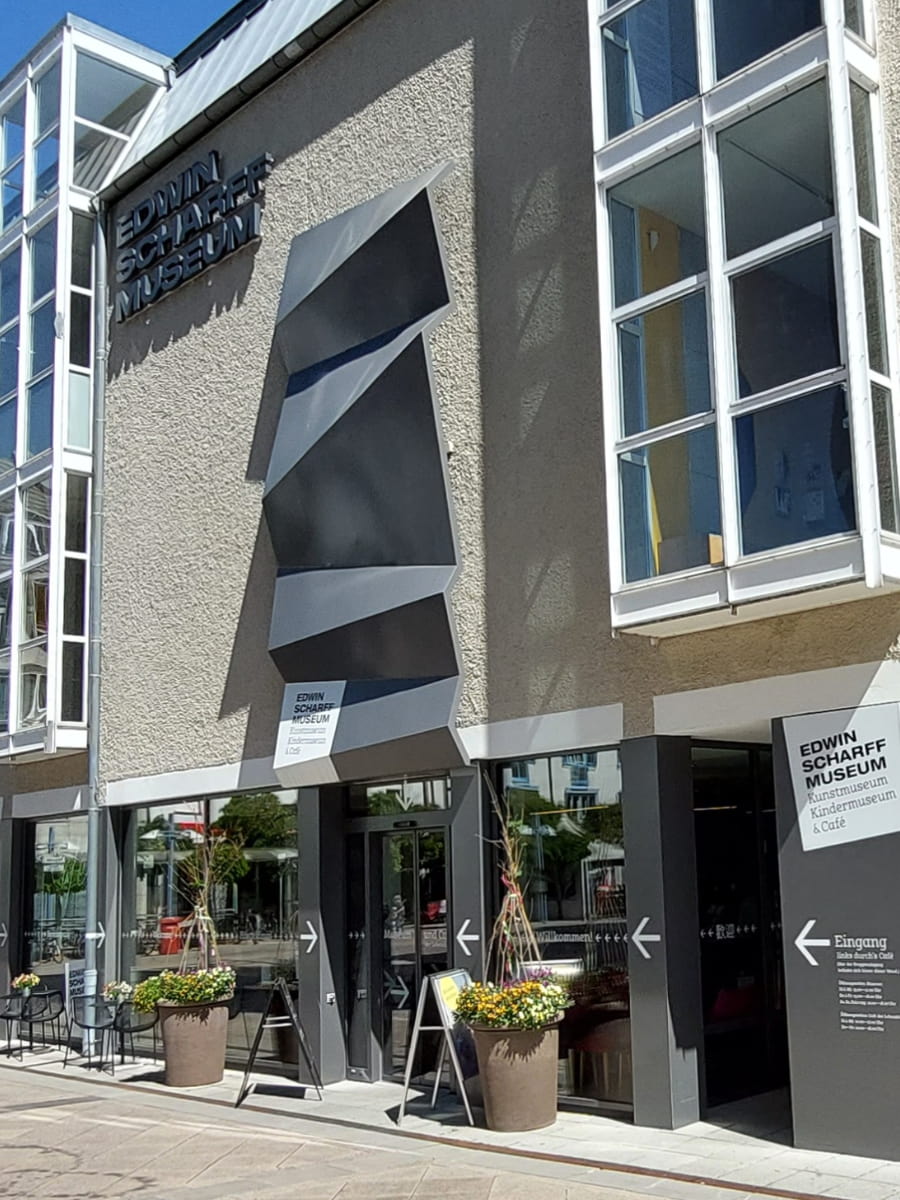
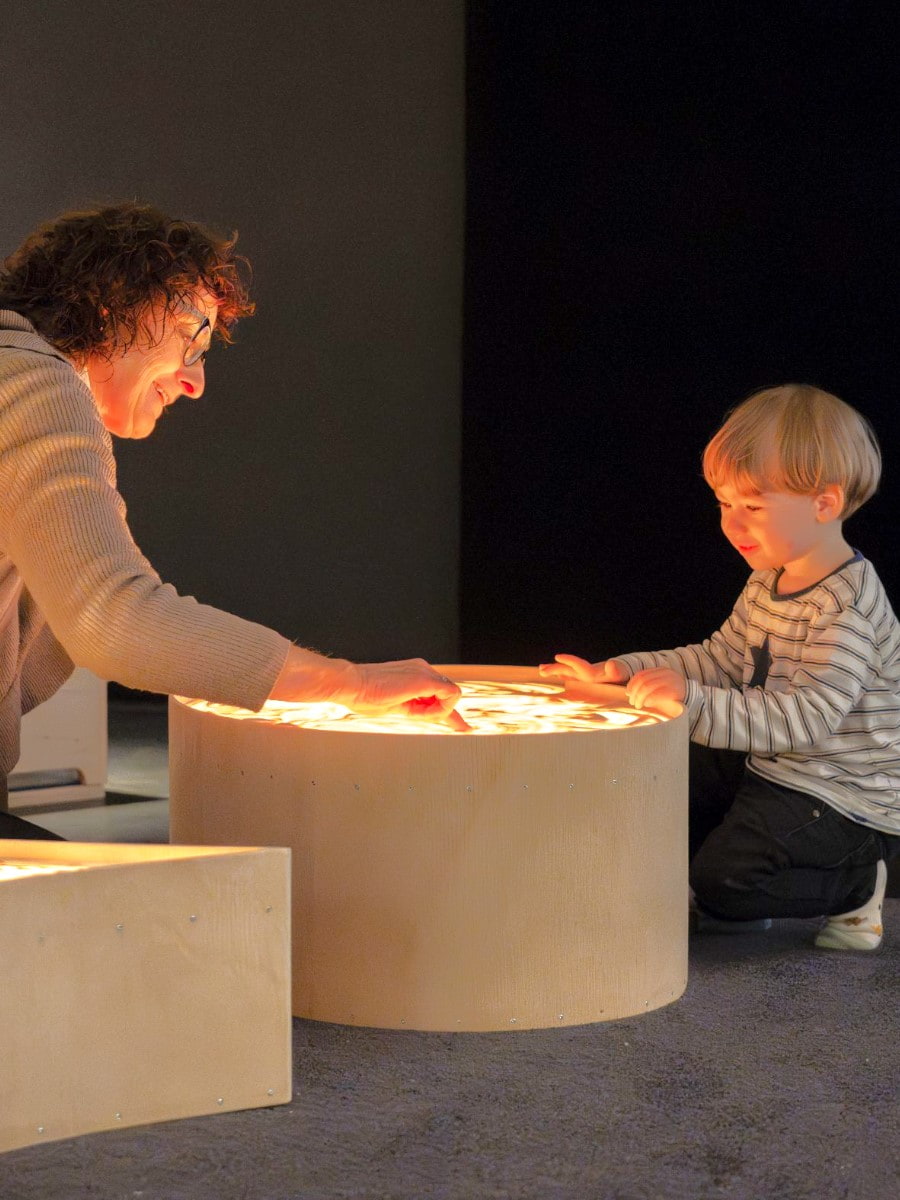
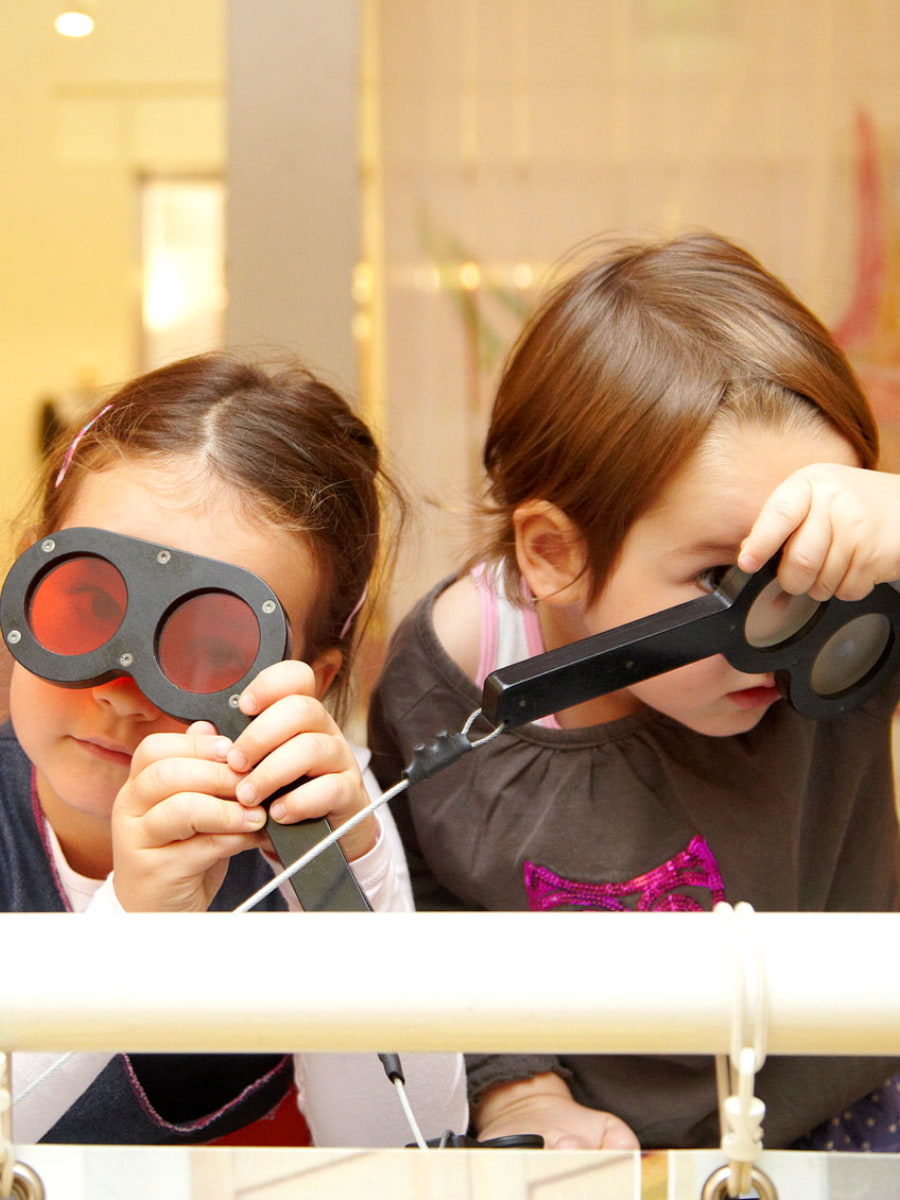
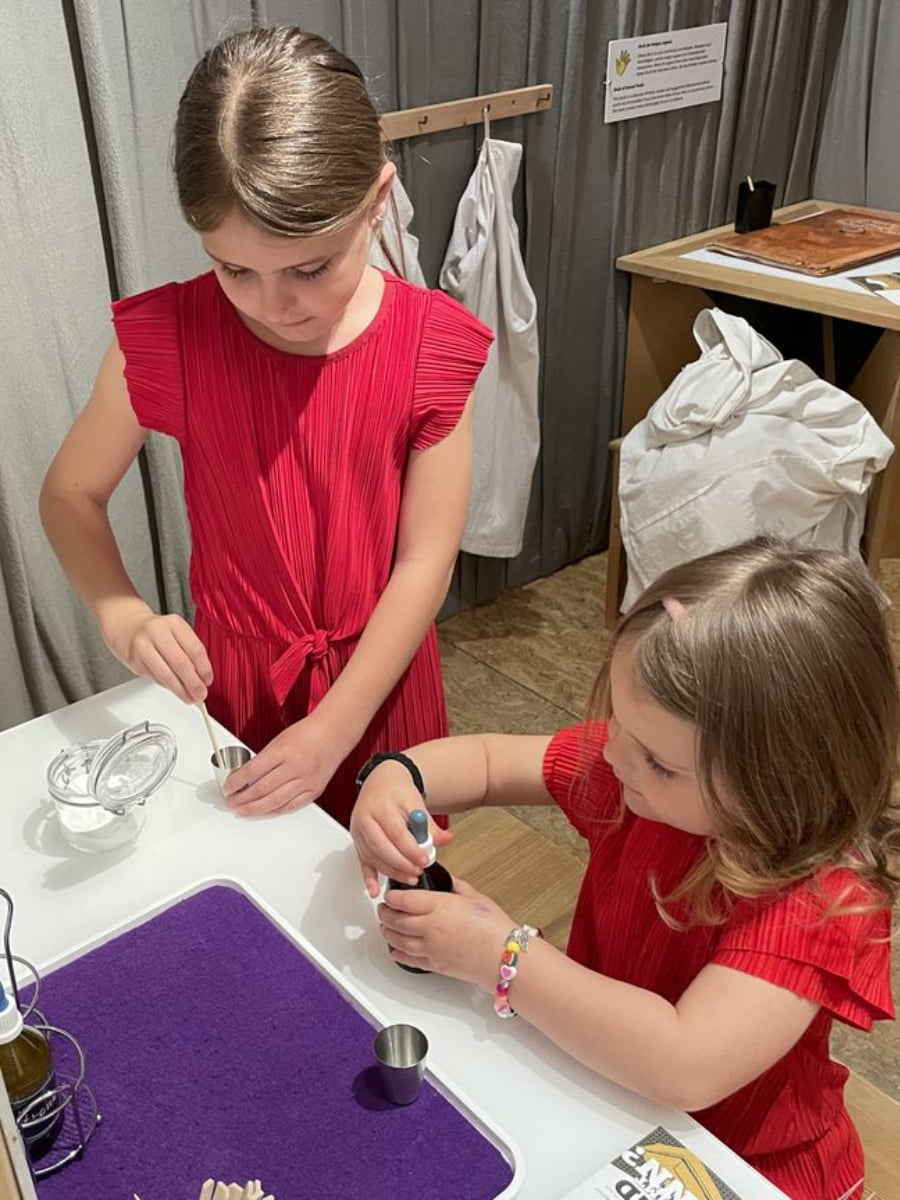
A Colorful World. The museum offers alternating exhibitions throughout the year, so there’s always something new to discover. During our visit, the special exhibition focused on “Colors in Nature,” with fascinating displays showing how animals use color for camouflage, attraction, and warning signals. The kids got to wear special glasses that simulated how different animals see the world—my nephew couldn’t stop laughing at how strange everything looked through “bee vision.”
Visitor Experience. The museum is thoughtfully designed for children as young as 3, though older kids (up to about 12) will get the most educational value. Admission is reasonable at 5€ ($5.40) for adults and 3€ ($3.20) for children, with a family ticket available for 12€ ($12.90). It’s open Tuesday through Sunday from 11am to 5pm.
3. Legoland
Brick-Built Fun. Just 30 minutes by car from Ulm lies one of Germany’s most popular family attractions—Legoland Deutschland Resort in Günzburg. When the kids heard we were so close, there was no way we could skip it! The park features over 50 rides, shows, and attractions, all built around the beloved building blocks. My nephew’s eyes nearly popped out of his head when he saw the Miniland area, where famous German landmarks (including Ulm Minster!) are recreated in meticulous detail using millions of Lego bricks.
Fun for All Ages. The park is divided into themed areas, each with age-appropriate rides and activities. For younger children, Duplo Land offers gentle rides and splash areas, while older kids and adults can enjoy more thrilling experiences like the Dragon roller coaster or the interactive Ninjago ride.
Planning Your Visit. Legoland is a significant investment at 65€ ($70) for adults and 59€ ($63.50) for children when purchased at the gate. However, I discovered that buying tickets online at least three days in advance saves about 20%. The park is open from late March to early November, with longer hours during summer months.
Insider Tip: If you’re visiting in summer, head to the water attractions early in the day before lines form. Bring a change of clothes for the kids, as they’ll almost certainly get wet at the pirate water playground or Duplo splash area.
4. Ulm Minster
Cathedral Adventure. You might not immediately think of a Gothic cathedral as kid-friendly, but Ulm Minster offers surprising appeal for young visitors. My niece and nephew were initially reluctant (“Not another church!”), but their attitude changed completely when I turned our visit into a scavenger hunt. I challenged them to find carved animals hiding in the choir stalls, count the number of columns in the nave, and spot the colorful patterns created by sunlight streaming through stained glass windows.
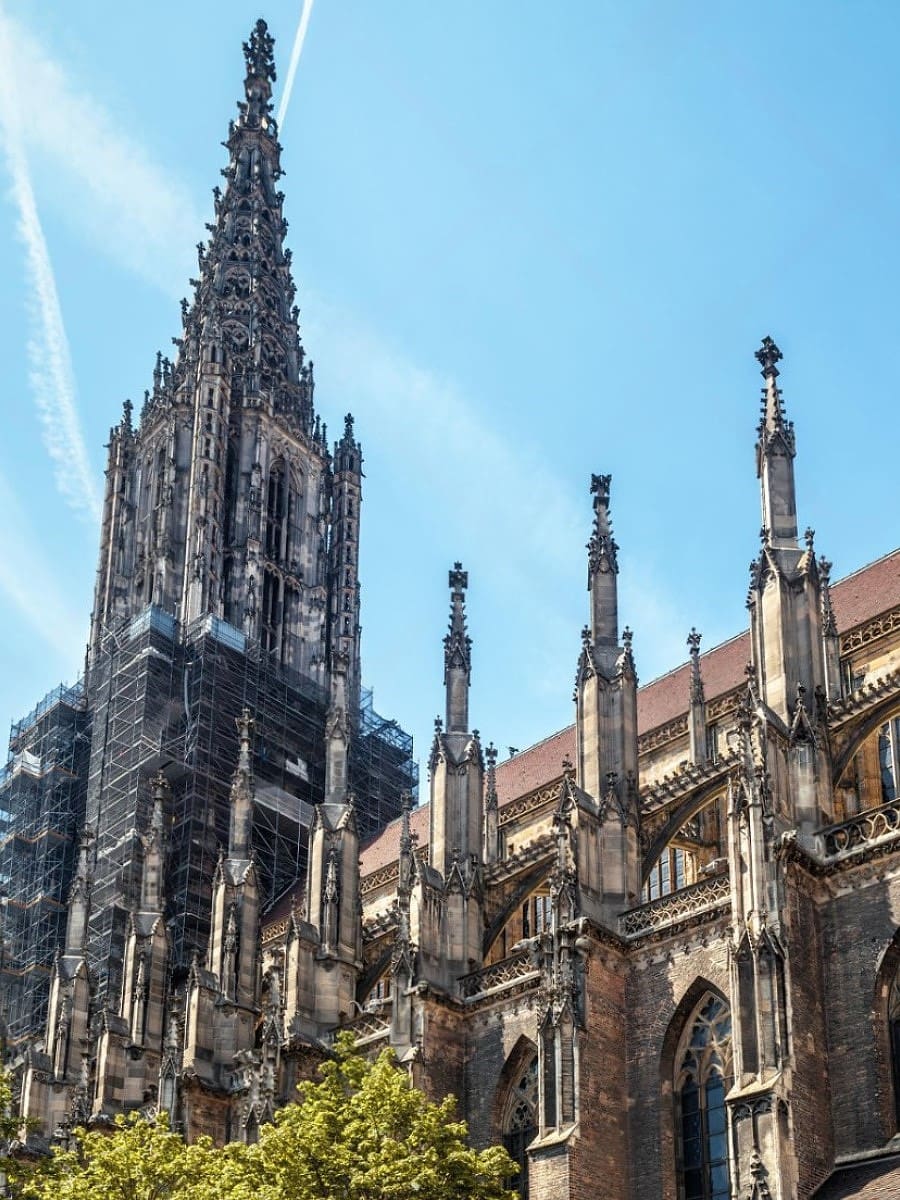
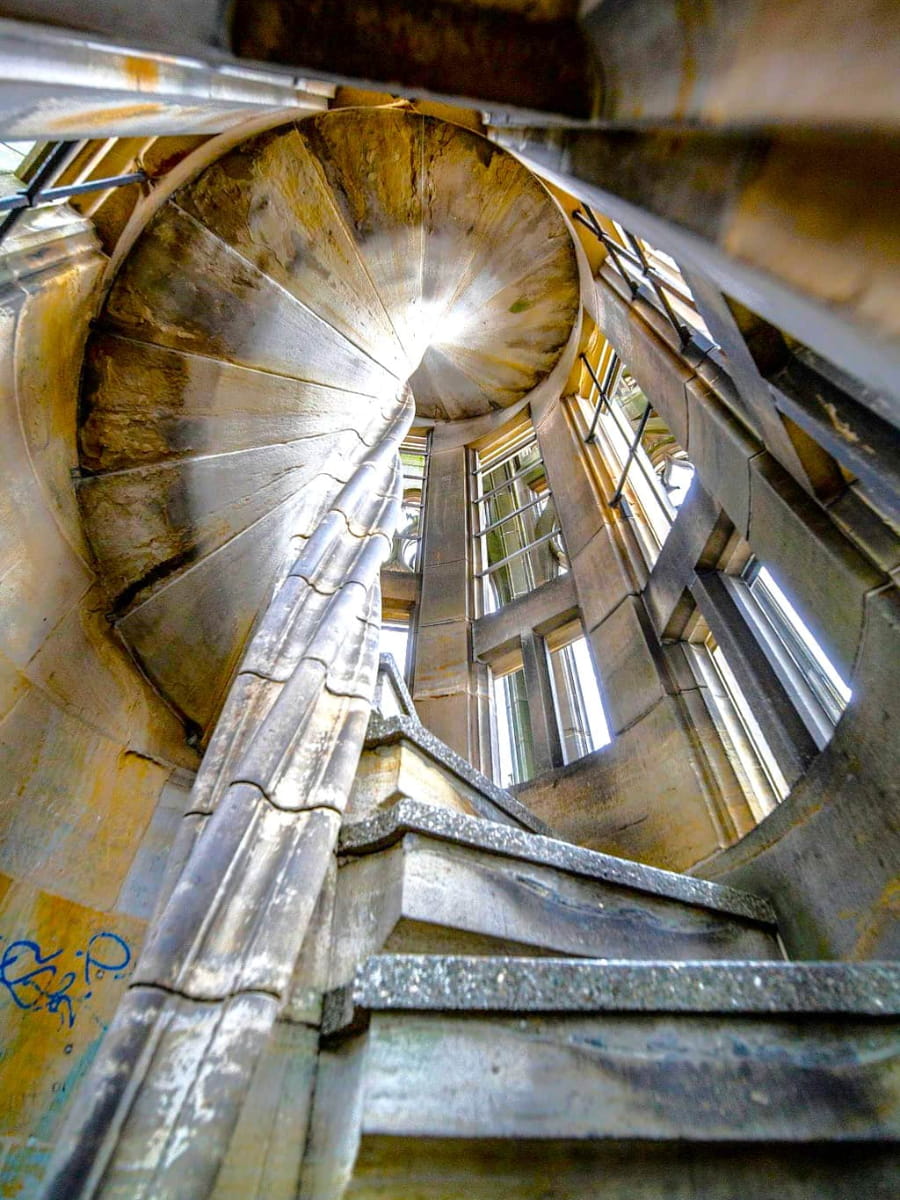
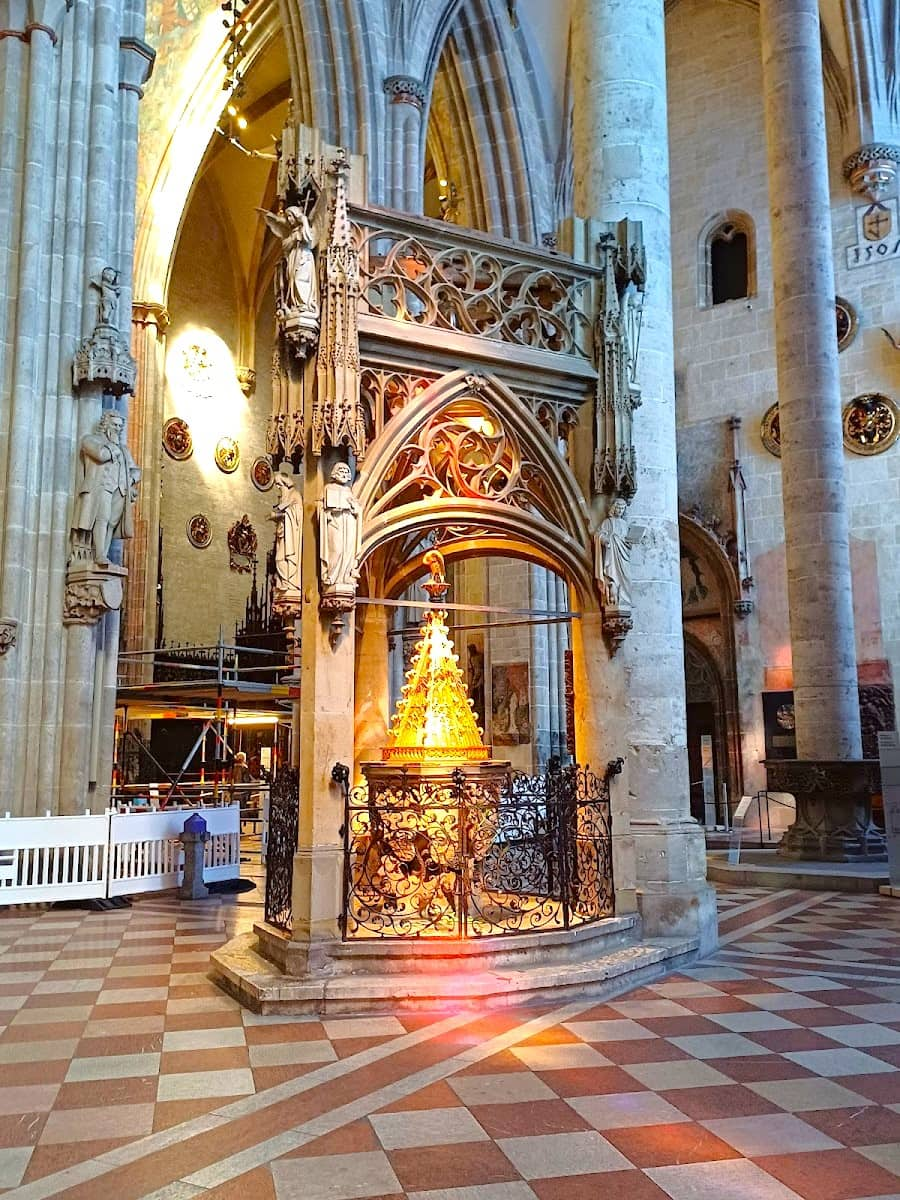
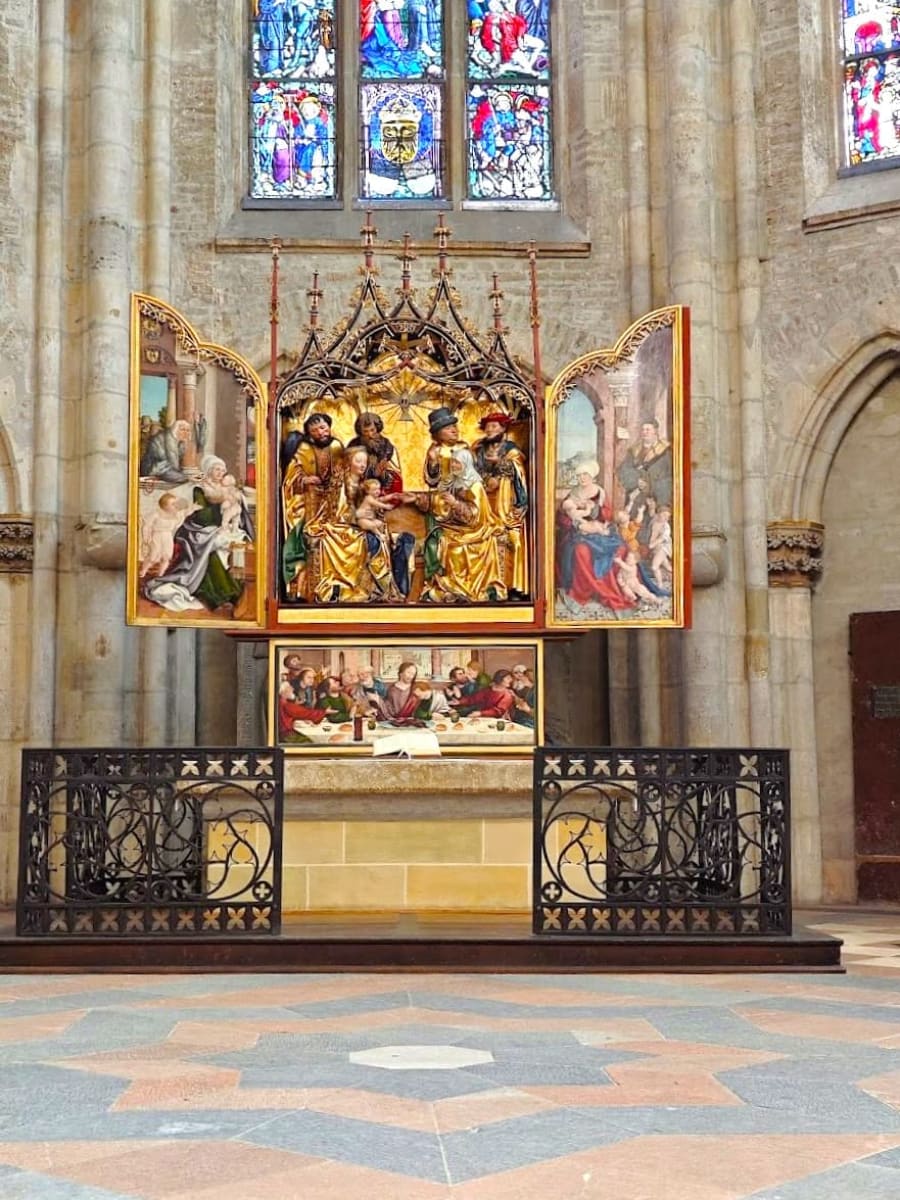
Scenic Ascent. The absolute highlight, though, was climbing the 768 steps to the top of the world’s tallest church spire. We took it slowly, stopping at each landing to catch our breath and look out the windows as Ulm grew smaller beneath us. The kids treated it like a personal mountain to conquer, and their triumphant smiles when we reached the viewing platform were priceless.
Family-Friendly Details. Children under 6 can enter the tower for free, while kids 6-17 pay 5€ ($5.40) compared to the adult price of 7€ ($7.50). I recommend visiting in the morning when energy levels are high and crowds are thinner. The climb takes about 30-40 minutes with children, depending on how many rest stops you need.
⭐ Best Activities
- Ulm Private Walking Tour With A Professional Guide – The medieval city of Ulm is renowned for its half-timbered buildings, Gothic church, and as the birthplace of Albert Einstein. With this walking tour, enjoy a comprehensive introduction to the city and learn more about its quirky history from your private guide. See the “world’s most crooked house” and the “world’s oldest sculpture”, admire the views from the Town Hall, and see the Butchers Tower, Dolphin Fountain, and Ulm Cathedral.
5. Boat Trip on the Danube
River Adventures. On our final day in Ulm, we treated ourselves to a boat trip on the Danube River—the perfect way to rest tired legs after days of sightseeing. The “Ulmer Spatz” passenger boat departs from the landing stage near the Metzgerturm (Butchers’ Tower) and offers a 45-minute round trip that provides unique perspectives of both Ulm and Neu-Ulm from the water.
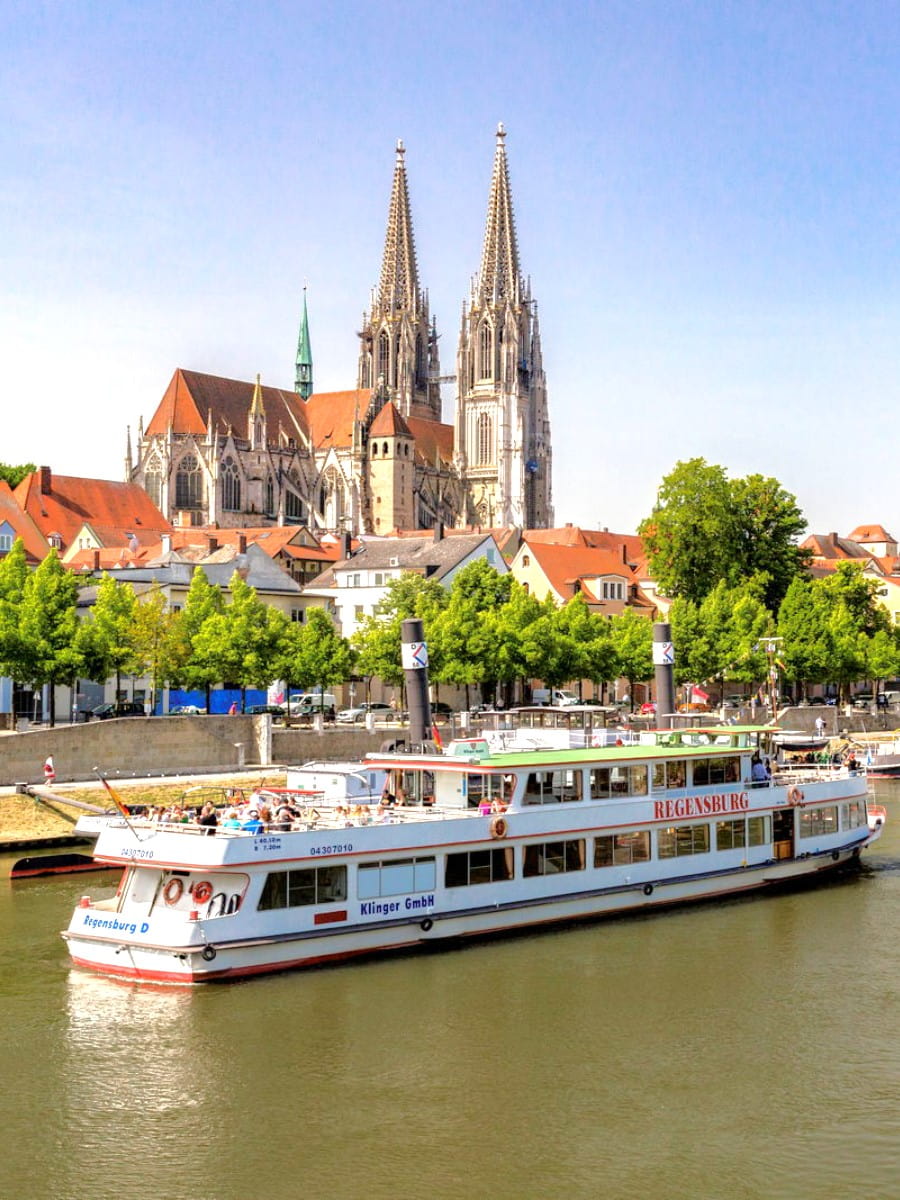
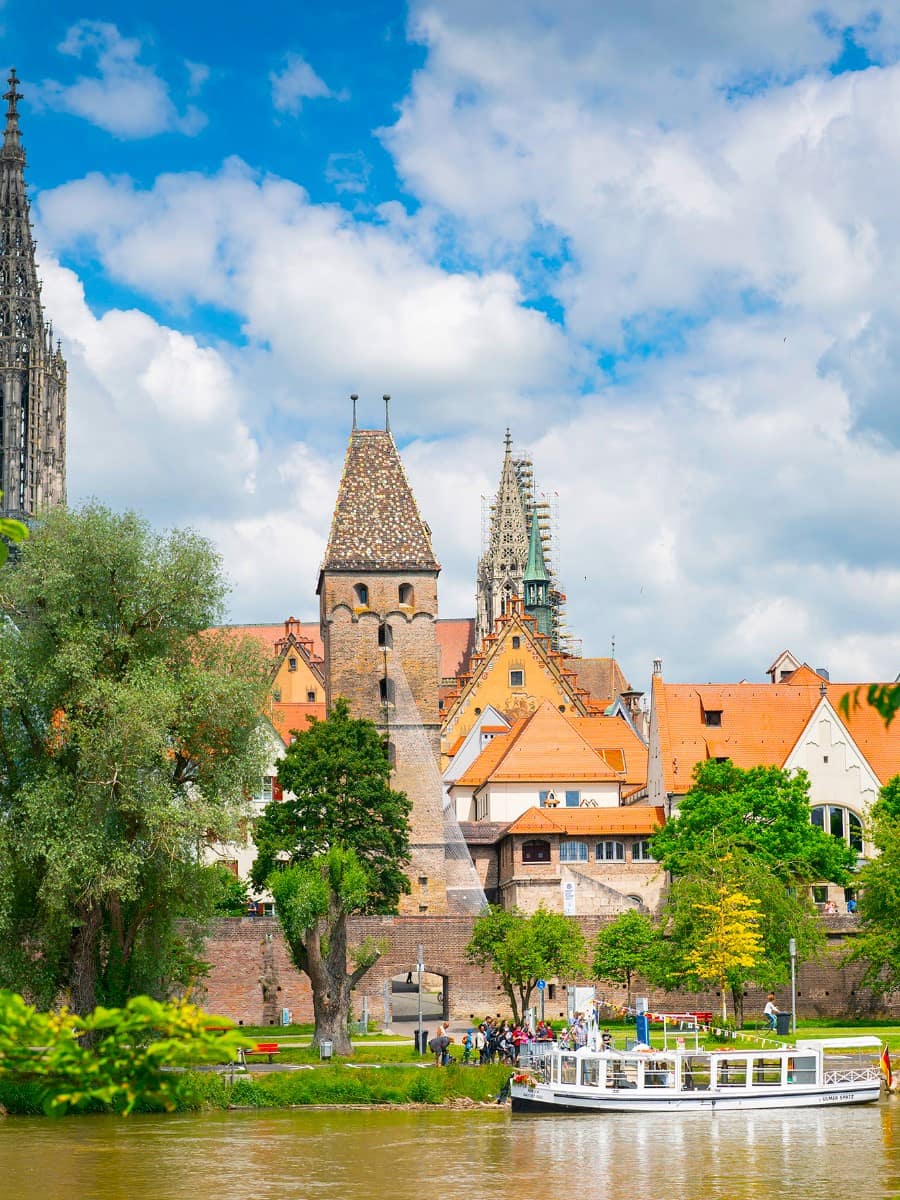
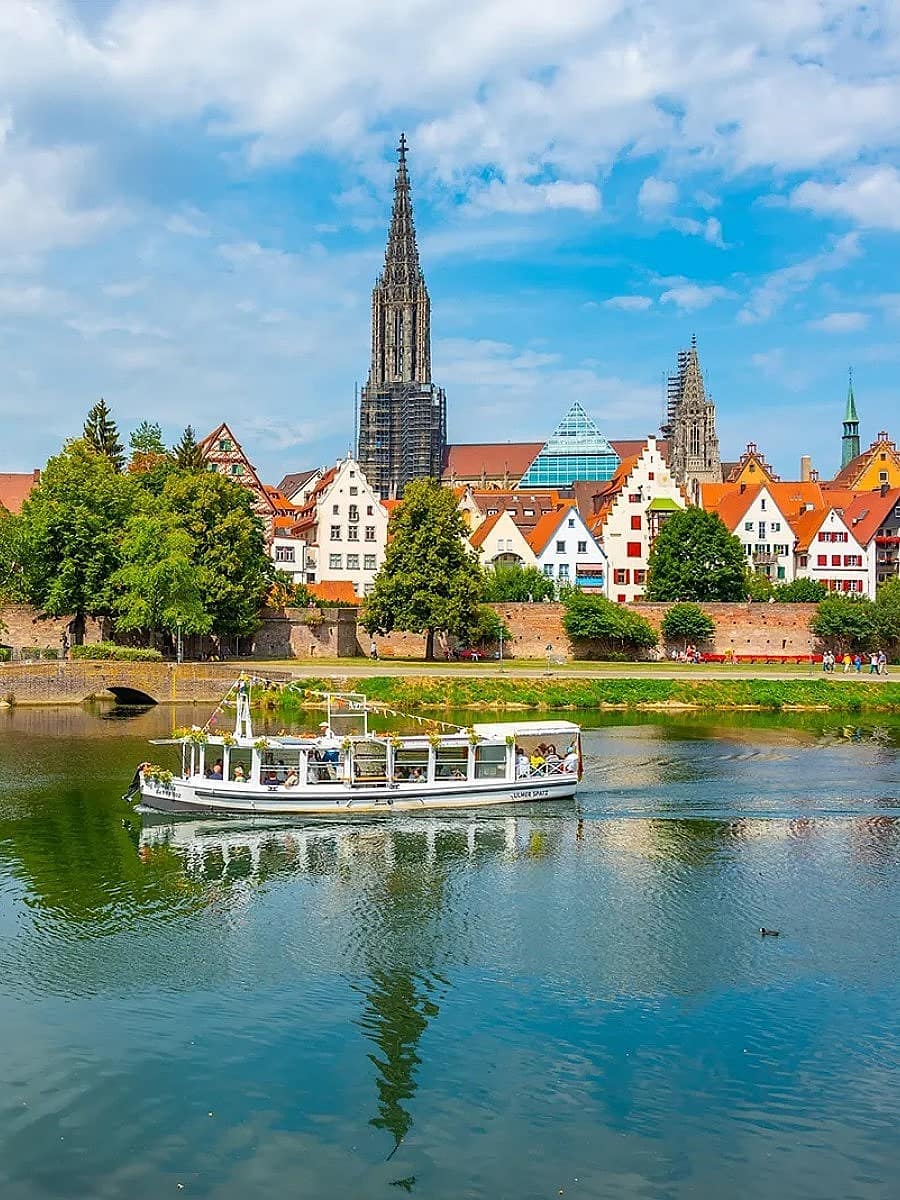
Thrilling Experience. The children were thrilled to be on a boat, pointing excitedly at the ducks that paddled alongside us and waving to people on the riverbanks. The captain provided commentary in both German and English, sharing interesting facts about the bridges we passed under and the historic buildings along the shore. My nephew was particularly fascinated to learn that the Danube flows through 10 countries on its journey to the Black Sea—more than any other river in the world.
Family Comparison: Kid-Friendly Activities in Ulm
Activity
Adult Price
Child Price
Duration
Best Age Range
Tiergarten Ulm
5€ ($5.40)
2.50€ ($2.70)
2-3 hours
2-12 years
Children’s Museum
5€ ($5.40)
3€ ($3.20)
1-2 hours
3-12 years
Legoland Day Trip
65€ ($70)
59€ ($63.50)
Full day
4-14 years
Ulm Minster Tower
7€ ($7.50)
5€ ($5.40)
1 hour
6+ years
Danube Boat Trip
12€ ($12.90)
6€ ($6.45)
45 min
All ages
Seasonal Fun. If you’re visiting Ulm with kids during winter, don’t miss the ice rink set up in Münsterplatz from late November through January. Rental skates are available in all sizes, and even complete beginners can enjoy shuffling around while holding onto the penguin-shaped skating aids. In summer, the Donaubad water park in Neu-Ulm offers indoor and outdoor pools, water slides, and splash areas—perfect for cooling off on hot days.
Free Things To Do in Ulm
1. Danube River
Riverside Magic. On my second morning in Ulm, I woke up early to watch the sunrise over the Danube. The mist was still hovering above the water as I made my way to the riverbank, creating an almost mystical atmosphere. Walking along the banks of this legendary river costs nothing but offers priceless views. There’s a reason the Danube is so famous—it connects 10 countries (the most in the world), starts in Germany’s Black Forest, and stretches 2,850 kilometers to the Black Sea.
Danube Views. The well-maintained promenade runs along both sides of the river, with the Ulm side (Baden-Württemberg) offering views of Neu-Ulm across the water (Bavaria). I found a perfect spot near the old city walls where the morning light illuminated the half-timbered houses of the Fishermen’s Quarter reflected in the calm water.
Historical Significance. As I walked, I couldn’t help but think about how this river has shaped European history. Trade has been happening on these banks since ancient Roman times, with the Danube serving as a vital transportation route for goods and people. Today, it’s a peaceful place where locals jog, cycle, and walk their dogs.
2. Einstein’s Fountain (Einstein Brunnen)
Quirky Tribute. While fountains are common in European cities, none is more unusual than Ulm’s Einstein Fountain. Located just off Münsterplatz, this unique cast bronze sculpture stopped me in my tracks. Created by Jürgen Goertz in 1984, it depicts a large snail (representing nature and wisdom) standing on a rocket (symbolizing Einstein’s studies in time, space, and atomic theory) that shoots water from its base. From the snail emerges Einstein’s head with his tongue stuck out and wild hair.
A Fascinating Legacy. The fountain pays homage to Ulm’s most famous son, who was born here in 1879 before his family moved to Munich. I spent a good fifteen minutes circling it, discovering new details with each pass and watching children splash in the water on a warm afternoon.
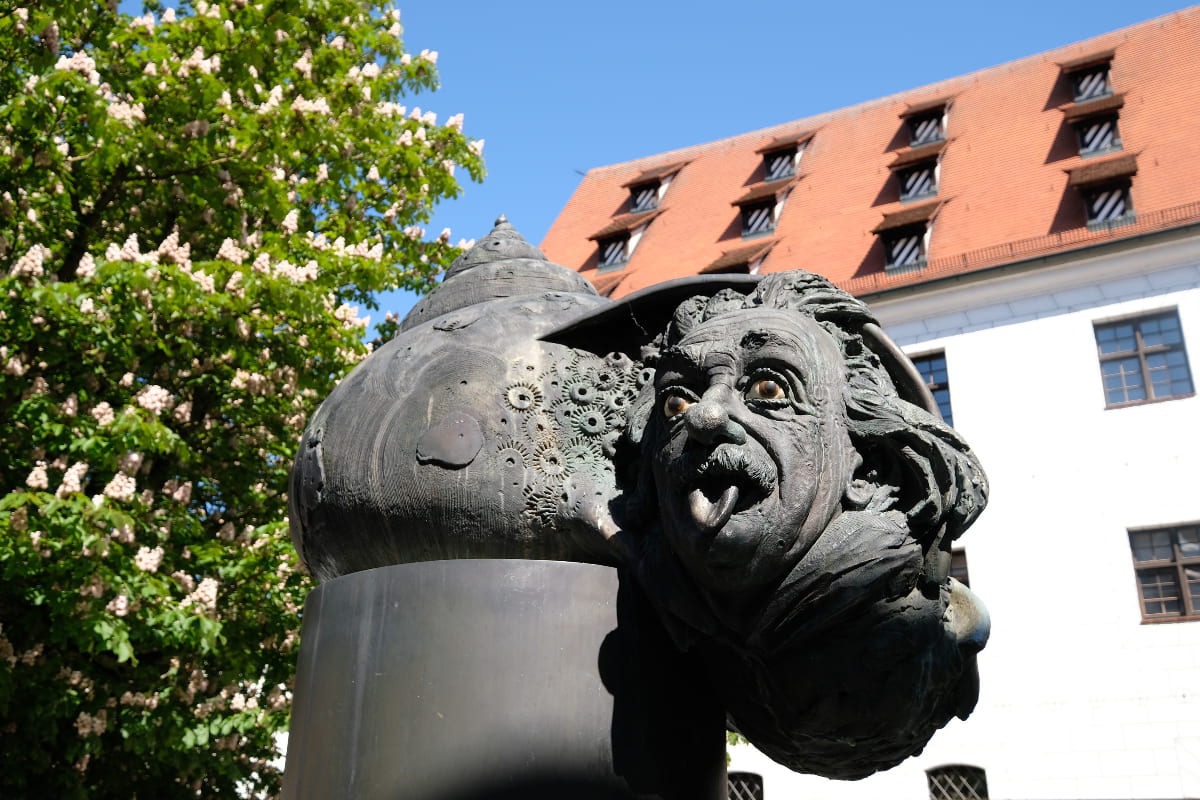
Photo Opportunity. For the best photo, I found that standing slightly to the east side in the late afternoon gives you the perfect angle with Ulm Minster towering in the background. The contrast between the whimsical modern sculpture and the Gothic cathedral creates a striking image that perfectly captures Ulm’s blend of historical reverence and forward-thinking creativity.
3. Botanical Garden
Natural Oasis. When city sightseeing became overwhelming, I discovered a peaceful retreat at the Botanical Garden of Ulm University. Located on the Eselsberg hill, this verdant space is completely free to visit and offers a refreshing change from urban exploration. The garden is divided into different sections, including an alpine garden, medicinal plants area, and a beautiful rose garden that was in full bloom during my June visit.
Peaceful Escape. I spent a particularly memorable hour in the Japanese garden, sitting on a wooden bench beside a small pond where colorful koi fish lazily circled lily pads. The carefully raked gravel, pruned trees, and strategic rock placements created a sense of tranquility that made me forget I was in a German city.
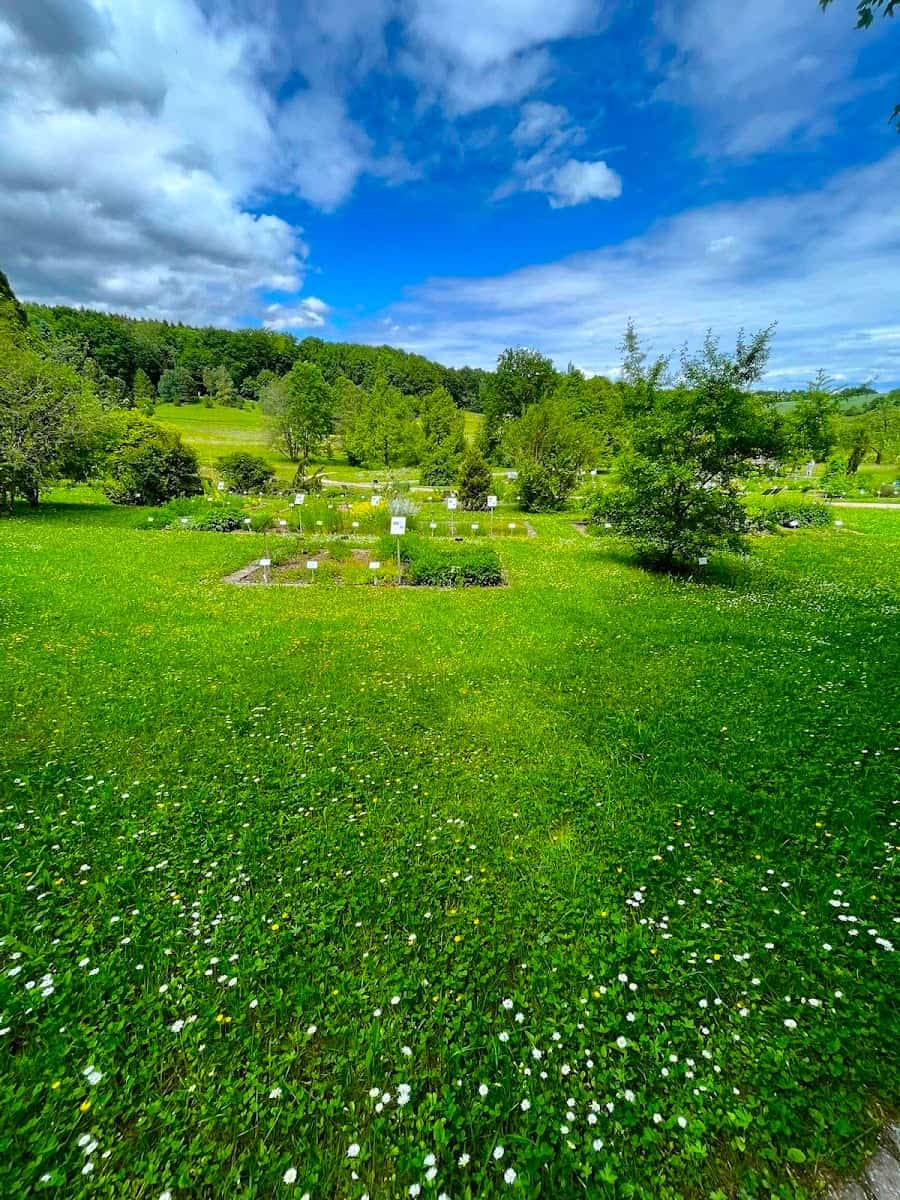
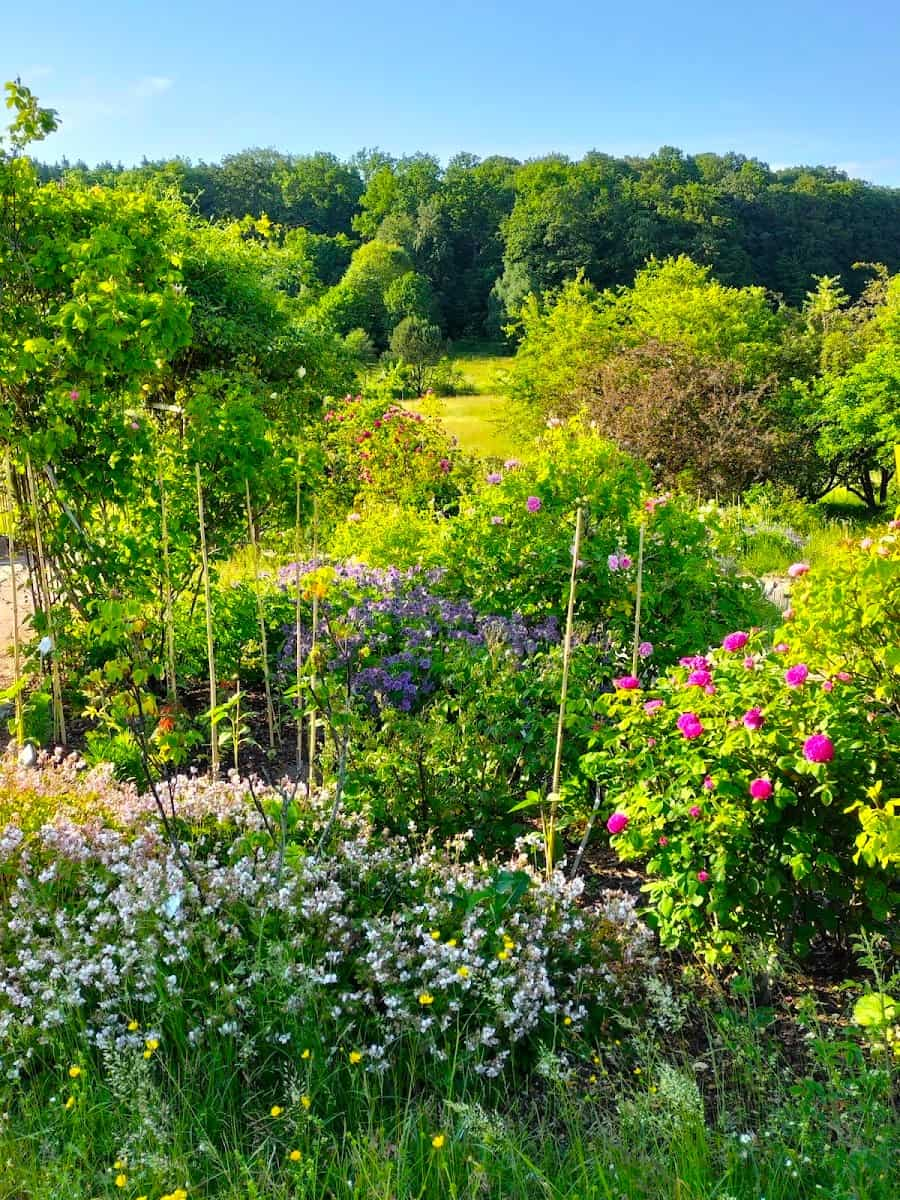
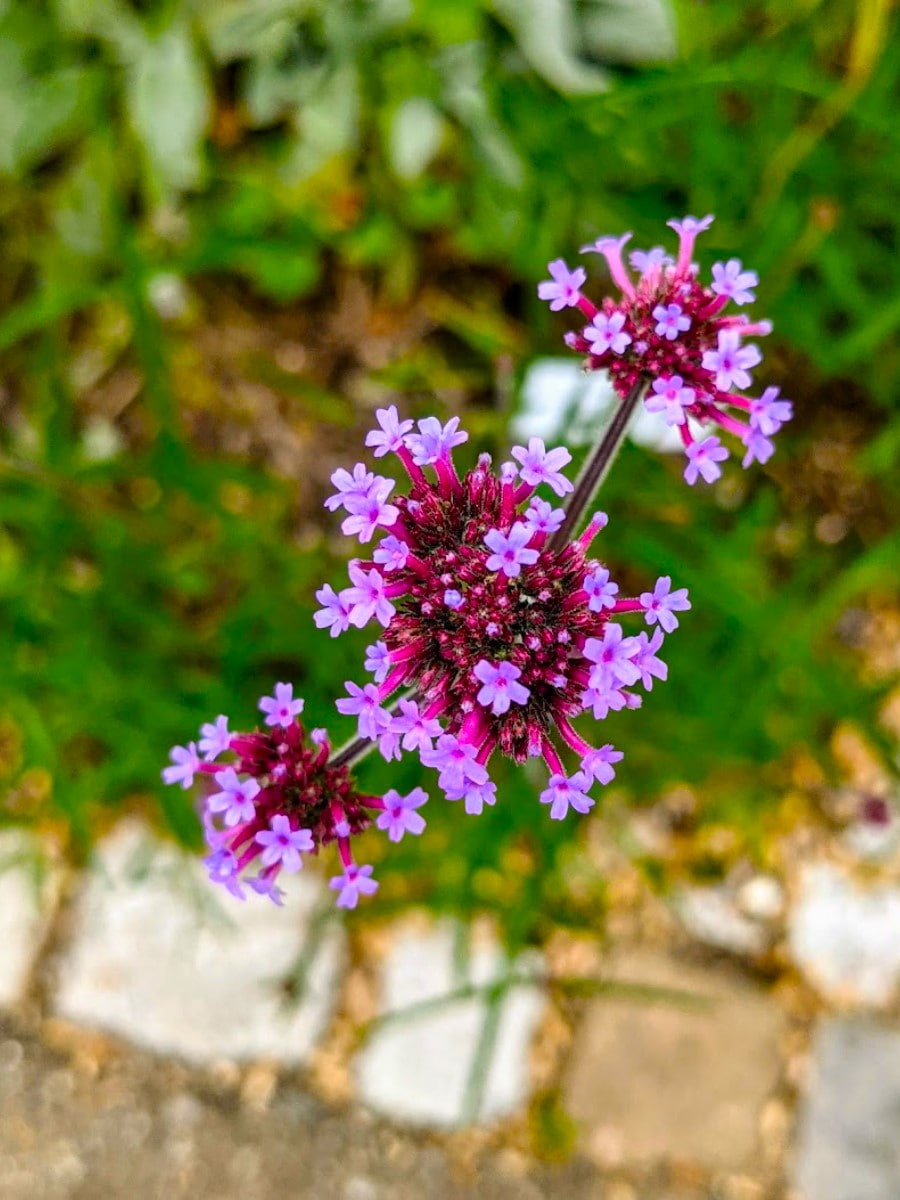
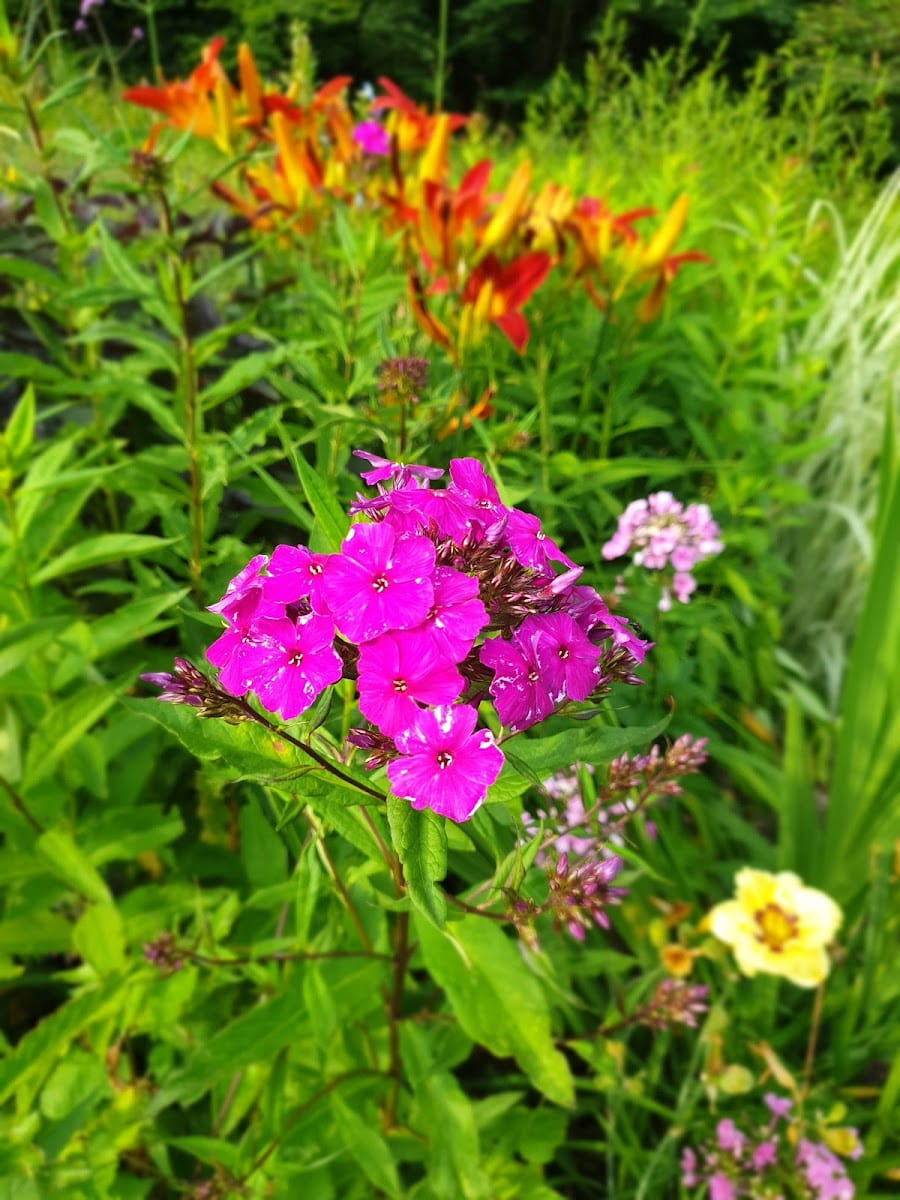
Seasonal Highlights. The garden changes dramatically with the seasons. My visit coincided with late spring, when rhododendrons and azaleas created vibrant splashes of color. Staff members told me that autumn brings spectacular foliage, while winter offers the unique beauty of frost-covered seed heads and sculptural bare branches.
Advice: Take bus line 3 or 5 from the city center to “Botanischer Garten” stop. The garden is open daily from 8am until sunset, with the greenhouses open from 10am to 4pm (closed Mondays).
4. Münsterplatz
Heart of the City. Münsterplatz, the large square surrounding Ulm Minster, serves as the beating heart of the city and costs nothing to explore. I found myself returning here multiple times during my stay, drawn by the ever-changing atmosphere. In the morning, locals hurried to work, stopping for coffee at the small cafés that line the square. By midday, the space filled with tourists gazing up at the cathedral’s soaring spire, while evening brought a more relaxed vibe as people gathered to socialize.
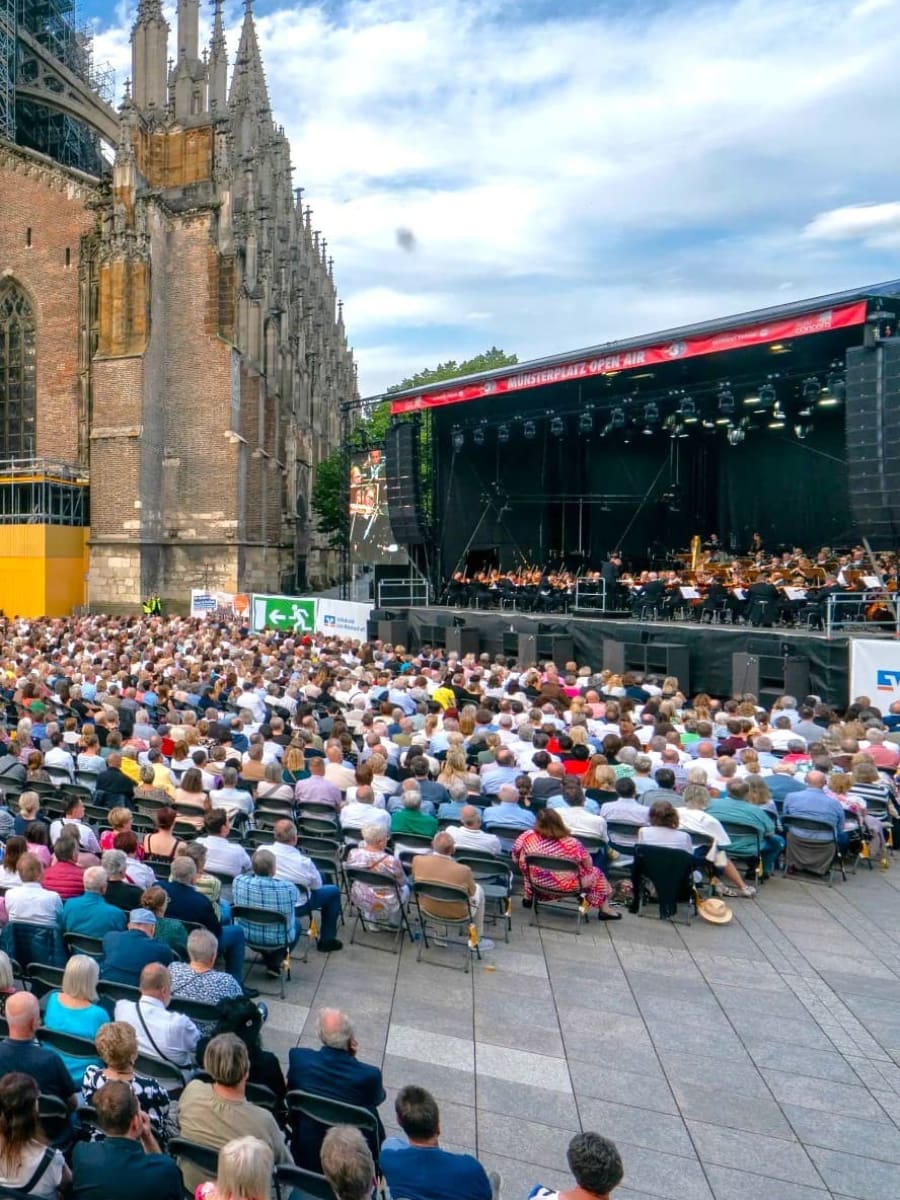
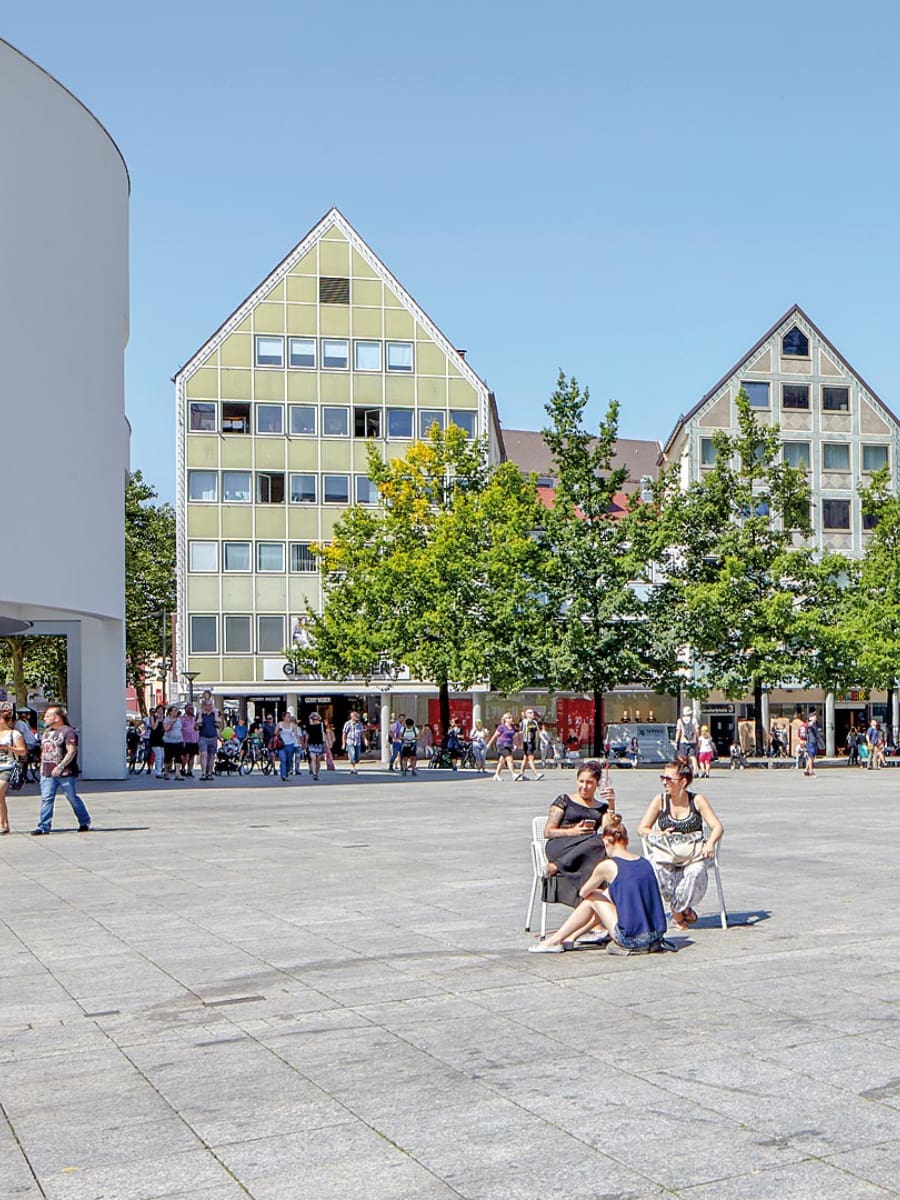
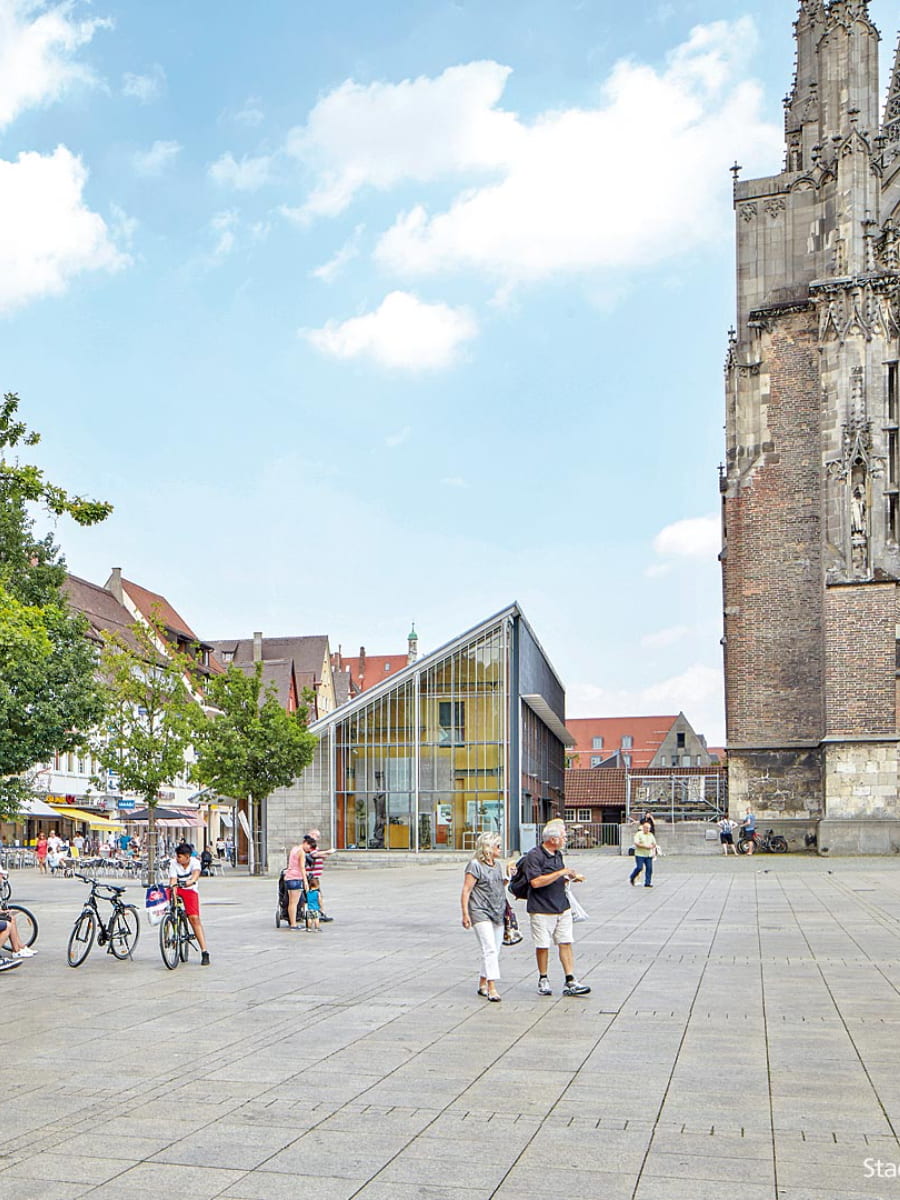
Cultural Hub. The square is ringed by colorful buildings housing shops, restaurants, and the impressive Stadthaus—a modern glass and steel structure that hosts exhibitions and cultural events. Many of these exhibitions are free to enter, offering insights into local history and contemporary art.
Market Experience. If you’re in Ulm on a Wednesday or Saturday, don’t miss the bustling market that takes over Münsterplatz from 7am to 1pm. Stalls overflow with regional produce, flowers, cheeses, and handcrafted items. I wandered through, sampling free tastes of local specialties like Obatzda (a savory cheese spread) and freshly baked pretzels. The vendors were friendly and patient with my limited German, often throwing in an extra apple or handful of berries with my purchase.
5. City Library (Stadtbibliothek)
Architectural Wonder. One of Ulm’s most striking modern buildings is completely free to enter. The Stadtbibliothek (City Library) stands as a glass pyramid in the heart of the old town, its contemporary design creating a fascinating contrast with the surrounding historical buildings. I initially went inside just to admire the architecture, but ended up spending over an hour exploring this unique space.
Breathtaking Interior. The interior is equally impressive, with a bright central atrium rising through all floors and a spiral staircase that seems to float in space. Each level offers different views of both the library interior and the city beyond through the glass walls. The top floor features a reading area with comfortable chairs positioned to take advantage of the panoramic views.
Digital Access. Even as a visitor, I was able to use the library’s free Wi-Fi and public computers. This made it a perfect spot to research my next day’s activities while resting my feet. The library also offers international newspapers and magazines in various languages, making it a great rainy-day destination.
6. Old City Walls
Historic Defenses. One of my favorite free activities in Ulm was walking along the well-preserved medieval city walls. Built in the 15th century, these defensive structures offer a fascinating glimpse into the city’s past while providing excellent viewpoints of both old and new Ulm. The section along the Danube is particularly scenic, with the river on one side and the Fishermen’s Quarter on the other.
Legendary Towers. During my walk, I discovered several interesting features, including the leaning Metzgerturm (Butchers’ Tower). Local legend claims it tilts because medieval butchers stored too much meat inside, but the real reason is the soft ground near the river. Another highlight was the Gänsturm (Goose Tower), which once served as a prison.
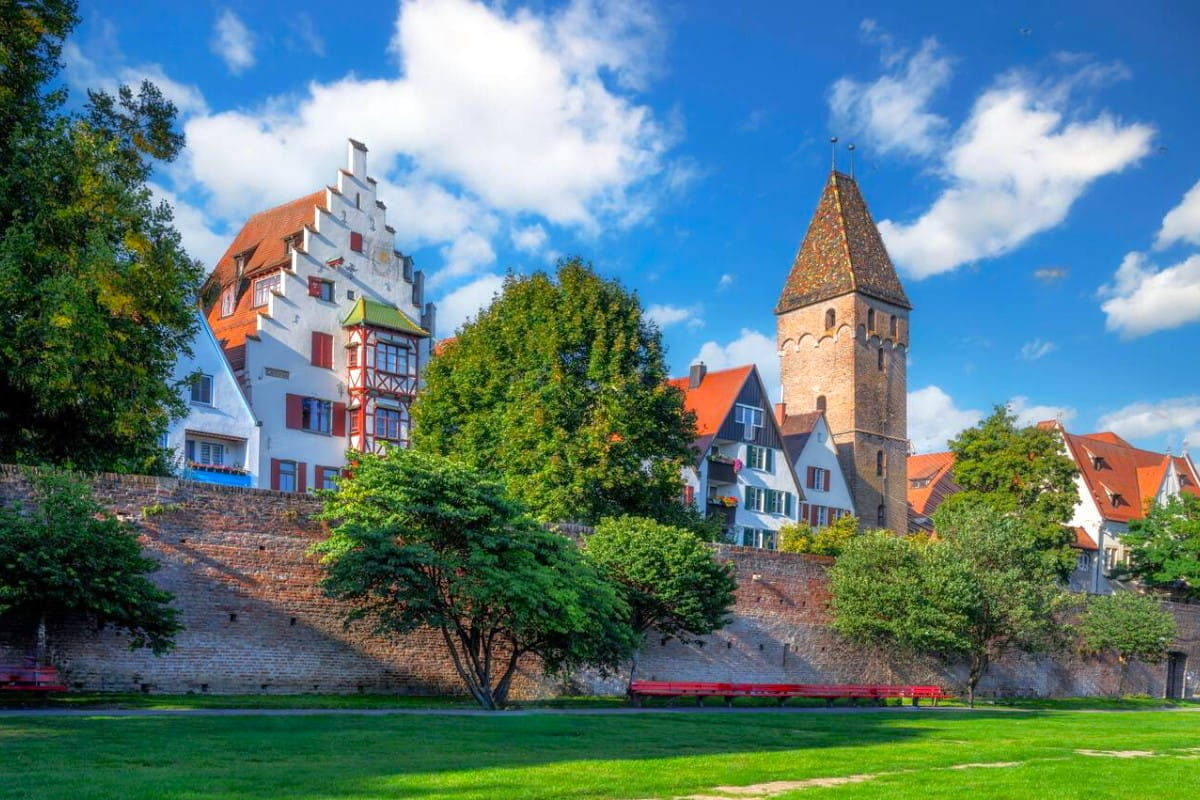
Photography Paradise. For photography enthusiasts, the city walls offer some of the best angles to capture Ulm’s charm. I found that early morning and late afternoon provided the most flattering light, with the sun casting a golden glow on the ancient stones and half-timbered houses.
Comparison: Free Activities in Ulm
Activity
Best Time to Visit
Duration
Physical Effort
Danube Riverside Walk
Early morning/sunset
1-2 hours
Easy
Einstein Fountain
Afternoon
15-30 minutes
Very easy
Botanical Garden
Morning (weekdays)
1-3 hours
Easy-moderate
Münsterplatz
Market days (Wed/Sat)
1 hour
Very easy
City Library
Weekday afternoons
30-60 minutes
Very easy
City Walls Walk
Late afternoon
1-2 hours
Moderate
Seasonal Considerations. While all these activities are available year-round, each season offers a different experience. Summer brings the pleasure of outdoor cafés and street musicians around Münsterplatz, while winter transforms the city with Christmas markets and festive decorations. Spring and fall offer fewer crowds and comfortable temperatures for exploring the city walls and Danube promenade.
7. Glacis Park
Green Oasis. Just a short walk from Ulm’s bustling center, I discovered the tranquil beauty of Glacis Park in Neu-Ulm. This banana-shaped green space, created from the former federal fortress grounds, quickly became my favorite spot for afternoon relaxation. As I strolled along the winding paths, the stress of travel melted away, replaced by the soothing sounds of the “Forellenbächle” stream and chirping birds.
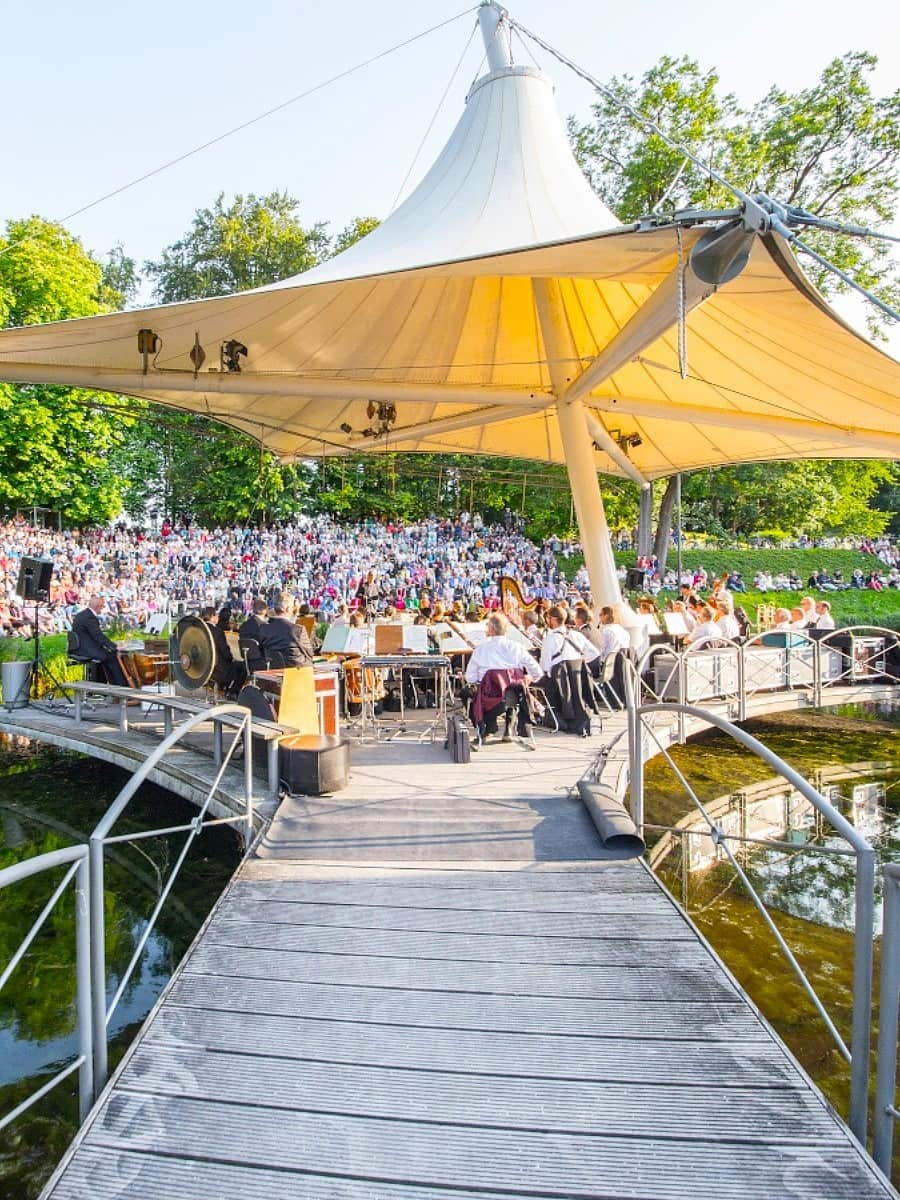
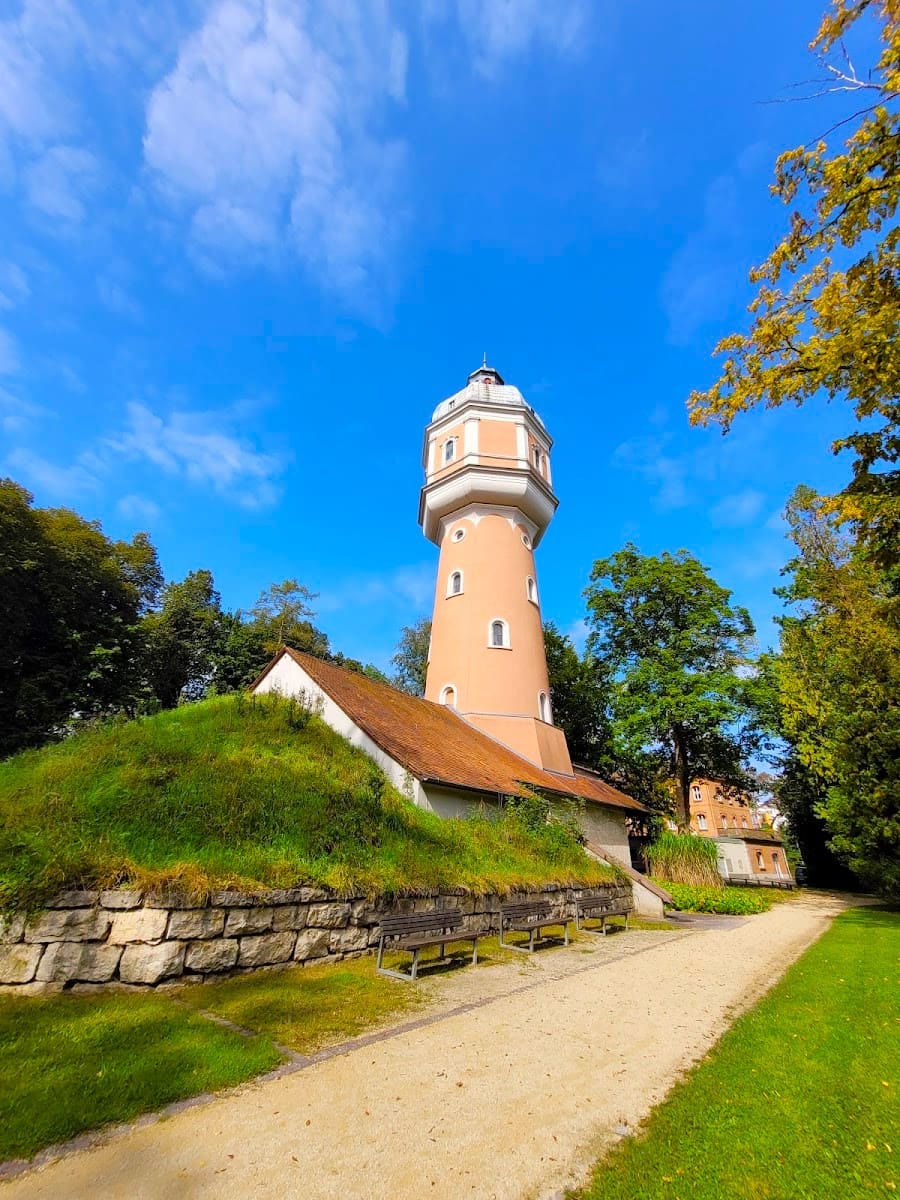
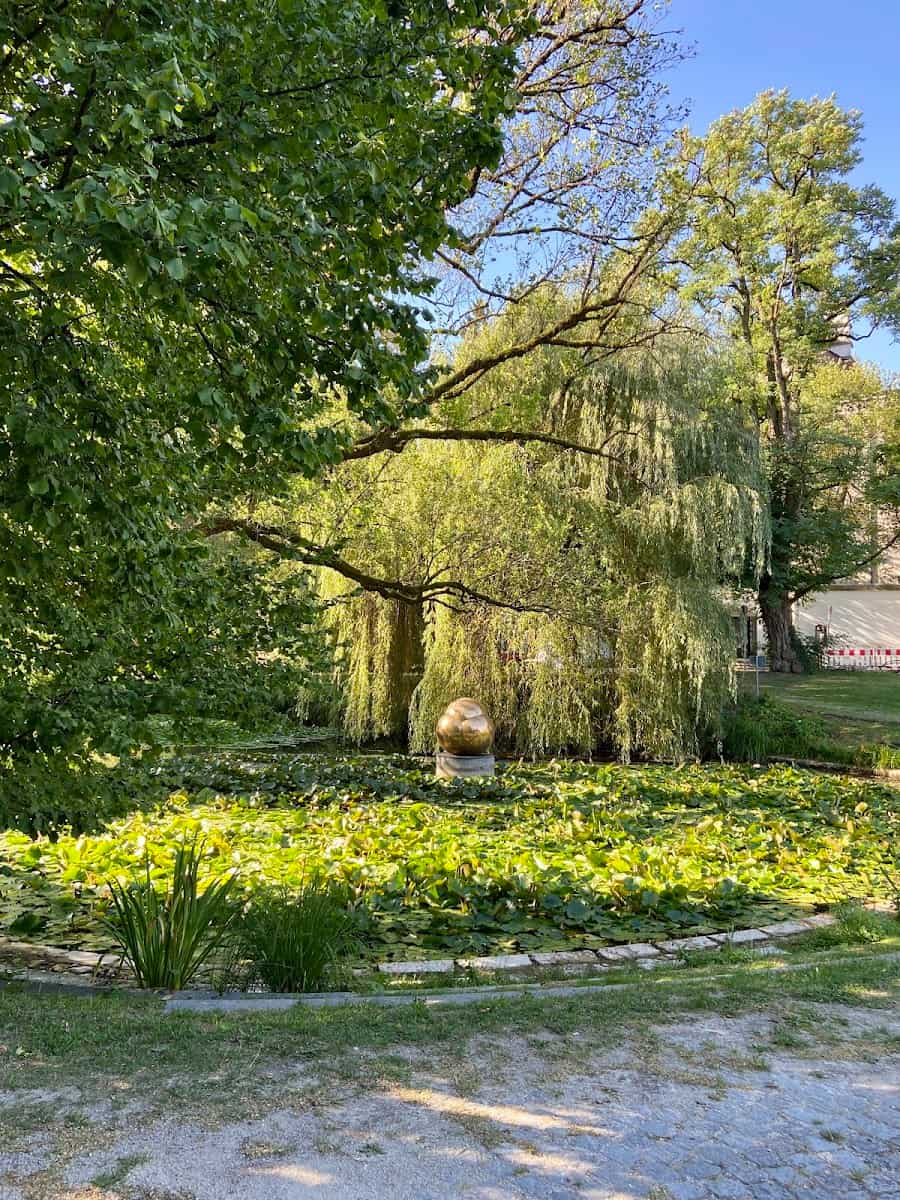
Historical Echoes. What fascinated me most about Glacis Park was how it seamlessly blends history with modern leisure. The park’s layout follows the contours of the old fortress walls, with remnants of casemates and ramparts still visible. I found myself imagining 19th-century soldiers patrolling these same grounds, now transformed into a peaceful urban oasis.
Family Fun. For families visiting Ulm, Glacis Park is a must-visit. The adventure playground near the Römervilla was bustling with children’s laughter as they climbed, slid, and explored. Parents relaxed at the nearby beer garden, enjoying local brews while keeping an eye on their little ones. In the eastern part of the park, I discovered another large playground with impressive climbing towers and a long slide that even had me tempted to join in the fun.
8. Wilhelmsburg Fortress
Fortress Adventure. My exploration of Ulm’s free attractions led me to the imposing Wilhelmsburg fortress, perched atop the Michelsberg hill. Built between 1842 and 1849, this massive structure was once the centerpiece of Ulm’s federal fortress system. While the interior is not typically open to the public, I discovered that the exterior grounds and impressive architecture can be explored free of charge.
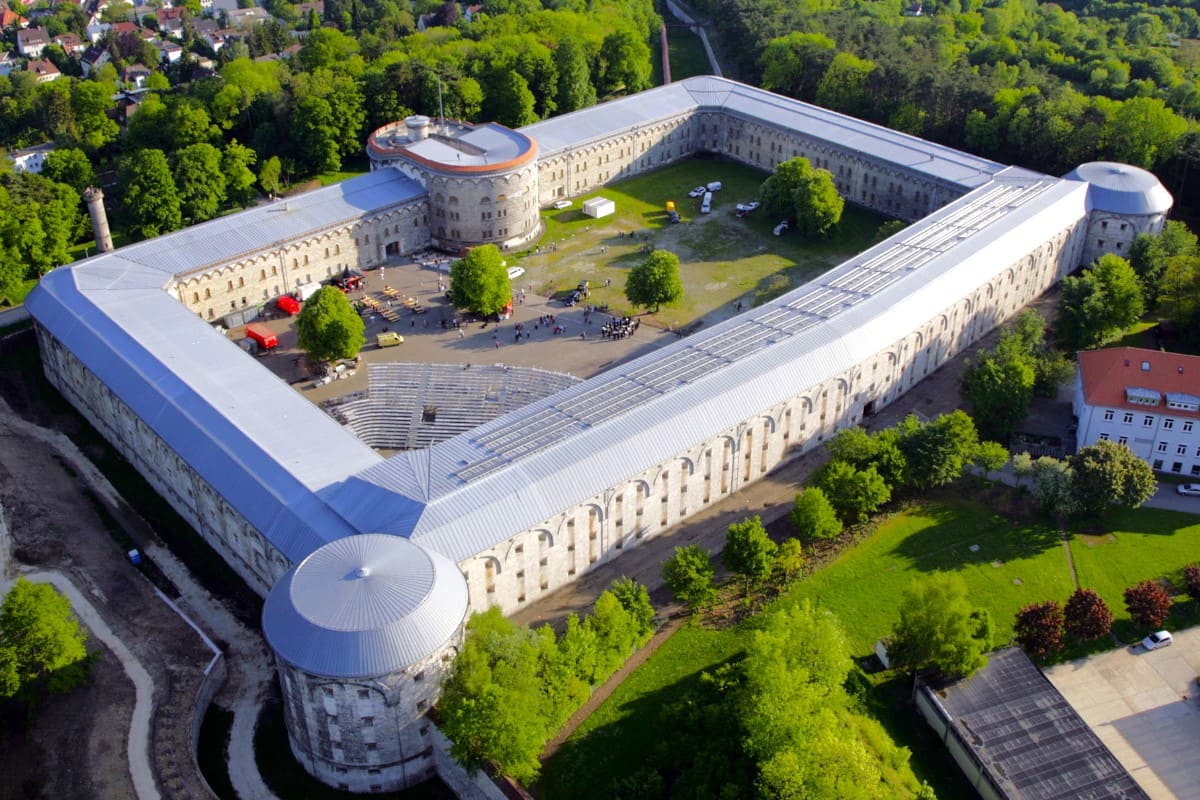
Panoramic Views. The climb to Wilhelmsburg rewarded me with breathtaking panoramic views of Ulm and the surrounding countryside. From this vantage point, I could truly appreciate the strategic importance of the fortress’s location, commanding views in all directions. The sight of Ulm Minster’s spire rising above the city rooftops, with the Danube winding through the landscape, was particularly stunning.
Historical Significance. As I walked around the fortress walls, information panels provided fascinating insights into Wilhelmsburg’s history. I learned that after World War II, the fortress served as a refugee camp, housing up to 3,000 people at a time. It even had its own shop, post office, and school – a city within a city.
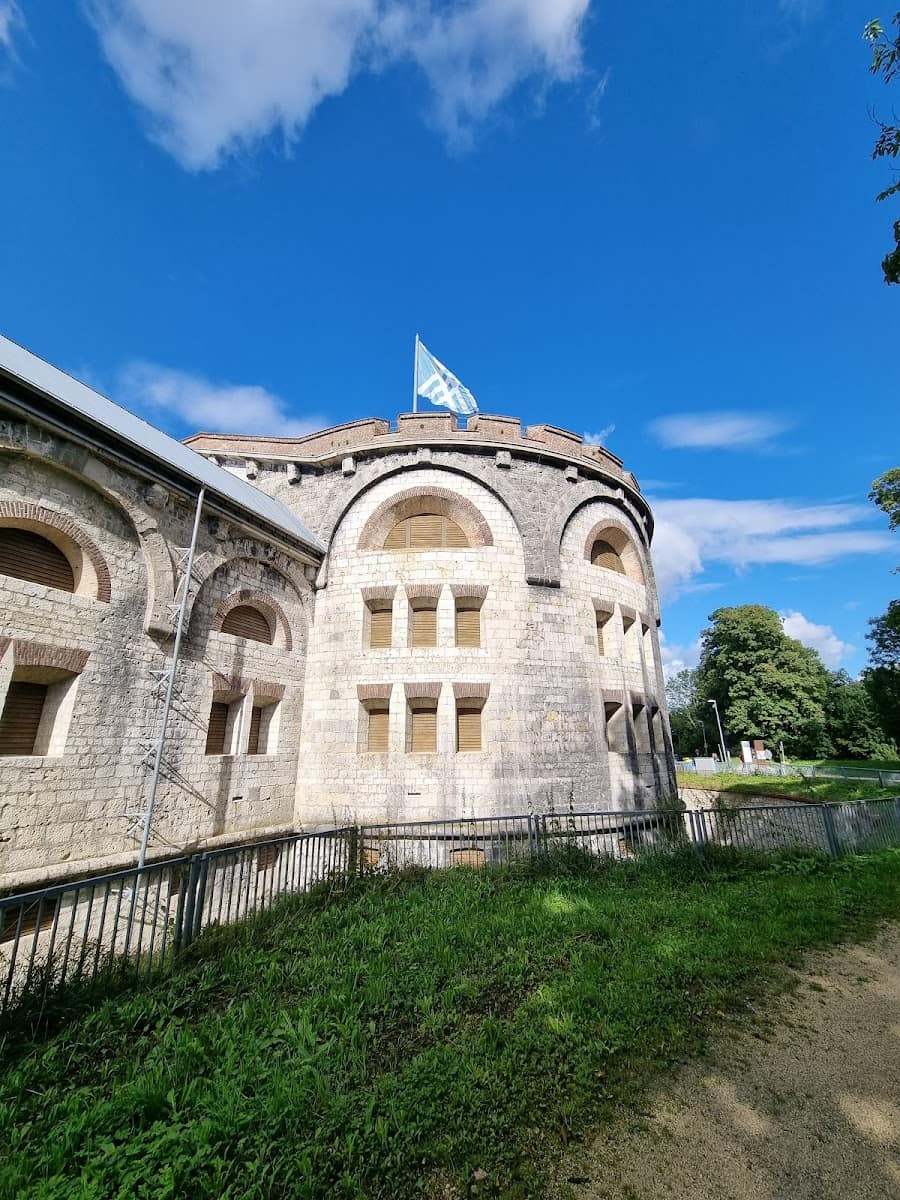
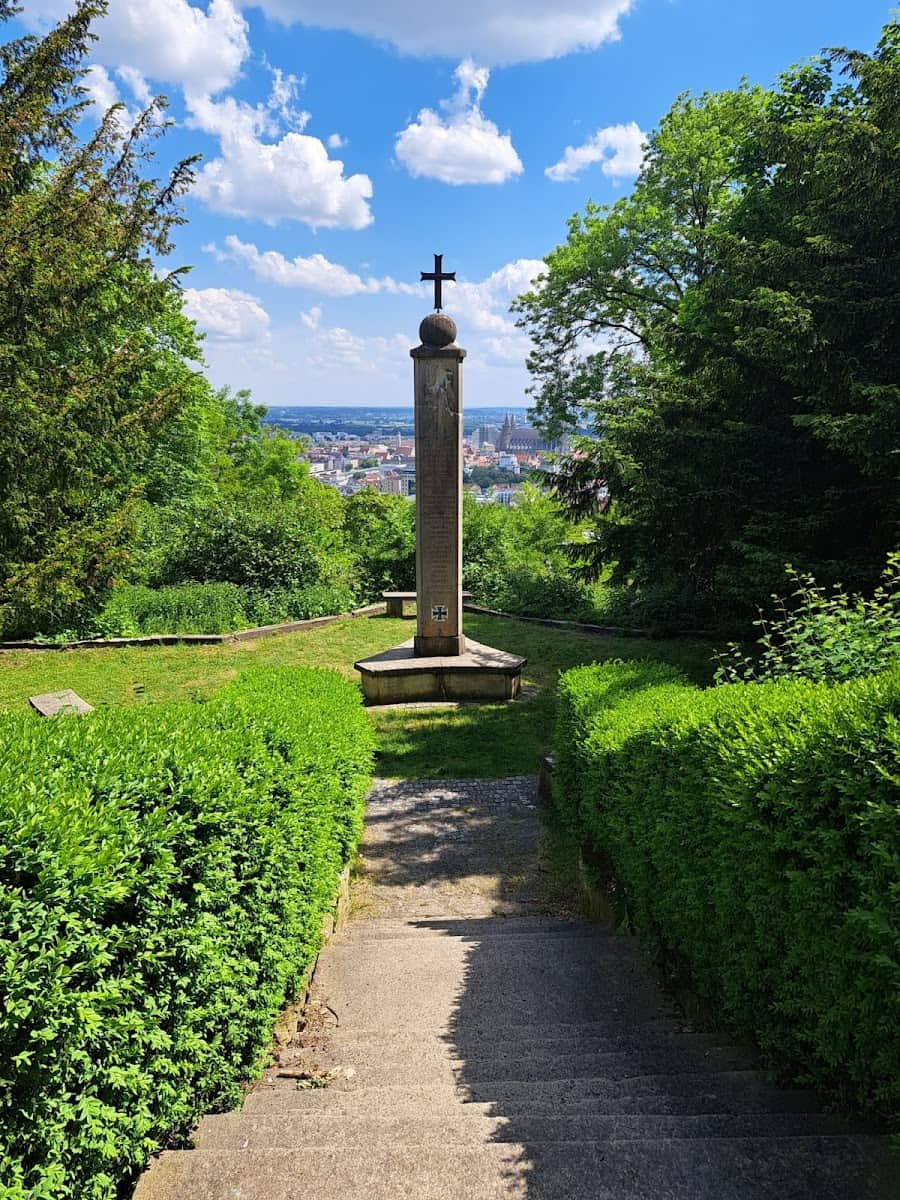
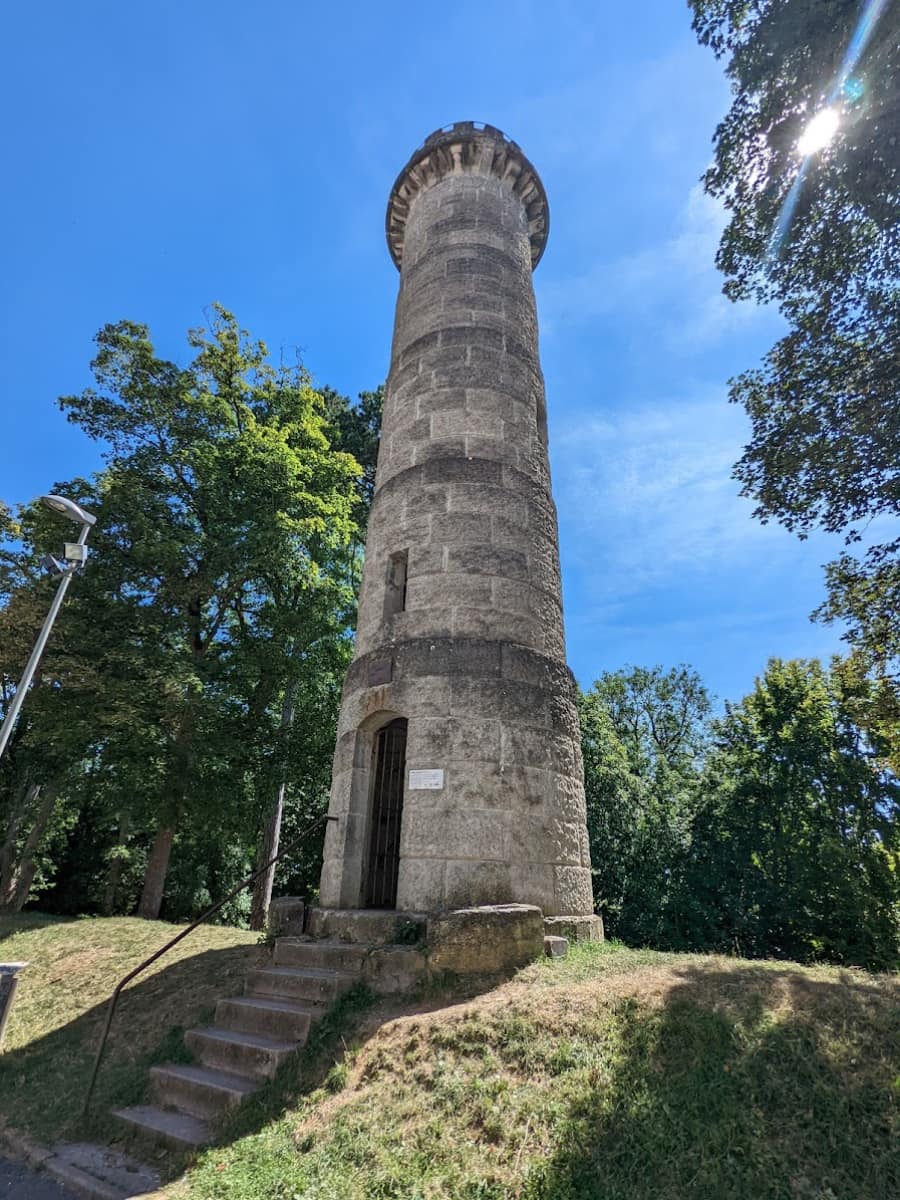
Seasonal Events. While I visited during a quiet period, I discovered that Wilhelmsburg comes alive during the annual “Stürmt die Burg” (Storm the Castle) festival. Held from late July to early August, this event transforms the fortress into a vibrant cultural hub with music, theater, and art installations. Many of the performances and exhibitions are free, making it an excellent time to experience the fortress in a unique way.
Seasonal Activities in Ulm
Christmas in Ulm Germany
Festive Transformation. I’ve visited Ulm in every season, but there’s something truly magical about the city during December. The moment I stepped into Münsterplatz on a crisp winter evening, I was enveloped in the warm glow of thousands of twinkling lights. The Ulm Christmas Market (Weihnachtsmarkt) transforms the square around the magnificent Minster into a winter wonderland from November 25 to December 22. Unlike markets in larger cities, Ulm’s version maintains an authentic, local character that I found refreshingly genuine.
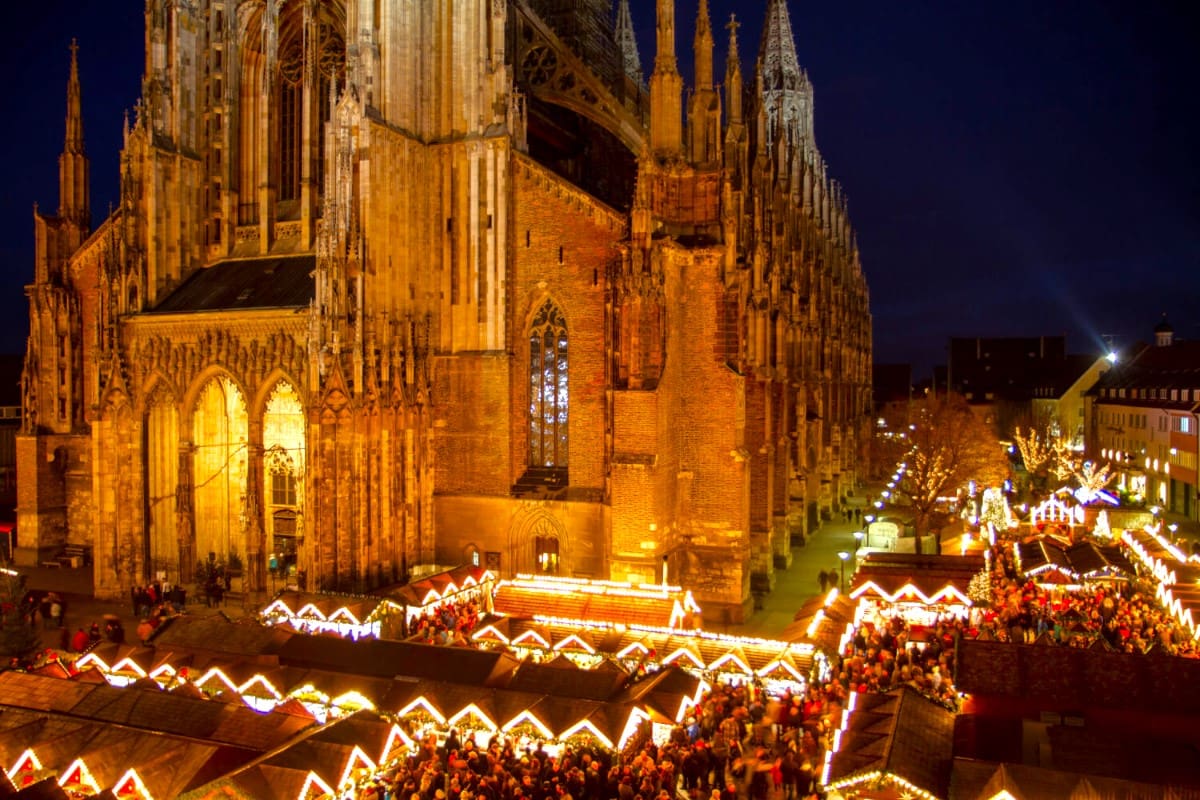
A Sensory Delight. The scent of roasted almonds, glühwein (mulled wine), and grilled sausages filled the air as I wandered between wooden stalls selling handcrafted ornaments, wooden toys, and local delicacies. I couldn’t resist trying a freshly baked Schneeball (snowball) – a regional specialty made of shortcrust pastry strips formed into a ball and covered with powdered sugar or chocolate. At 4€ ($4.30) each, they’re a bit pricey but worth trying once.
Market Highlights. The market features around 120 stalls arranged in a star pattern radiating from the Minster. What makes Ulm’s market special is the backdrop of the world’s tallest church spire illuminated against the night sky. Each evening at 6pm, traditional trumpet players perform Christmas carols from the Minster’s balcony, creating a moment of communal joy that brought tears to my eyes.
⭐ Best Activities
- Ulm Christmas Market Tour – The quaint town’s squares and streets lighten up by the twinkling Christmas lights, while visiting the many wooden stalls selling spiced mulled wine, many hand made decorations, chocolate covered fruits and other local mouth watering delicacies.
Spring Blooms in Royal Parks
Awakening Gardens. Spring brings Ulm to life with blossoms and flowers everywhere. By April, the region’s many fruit orchards burst into bloom, with cherry trees leading the way in mid-March, followed by plums and other fruits. I spent a perfect spring morning exploring the Botanical Garden of the University of Ulm, where carefully curated collections showcase both native and exotic plant species.

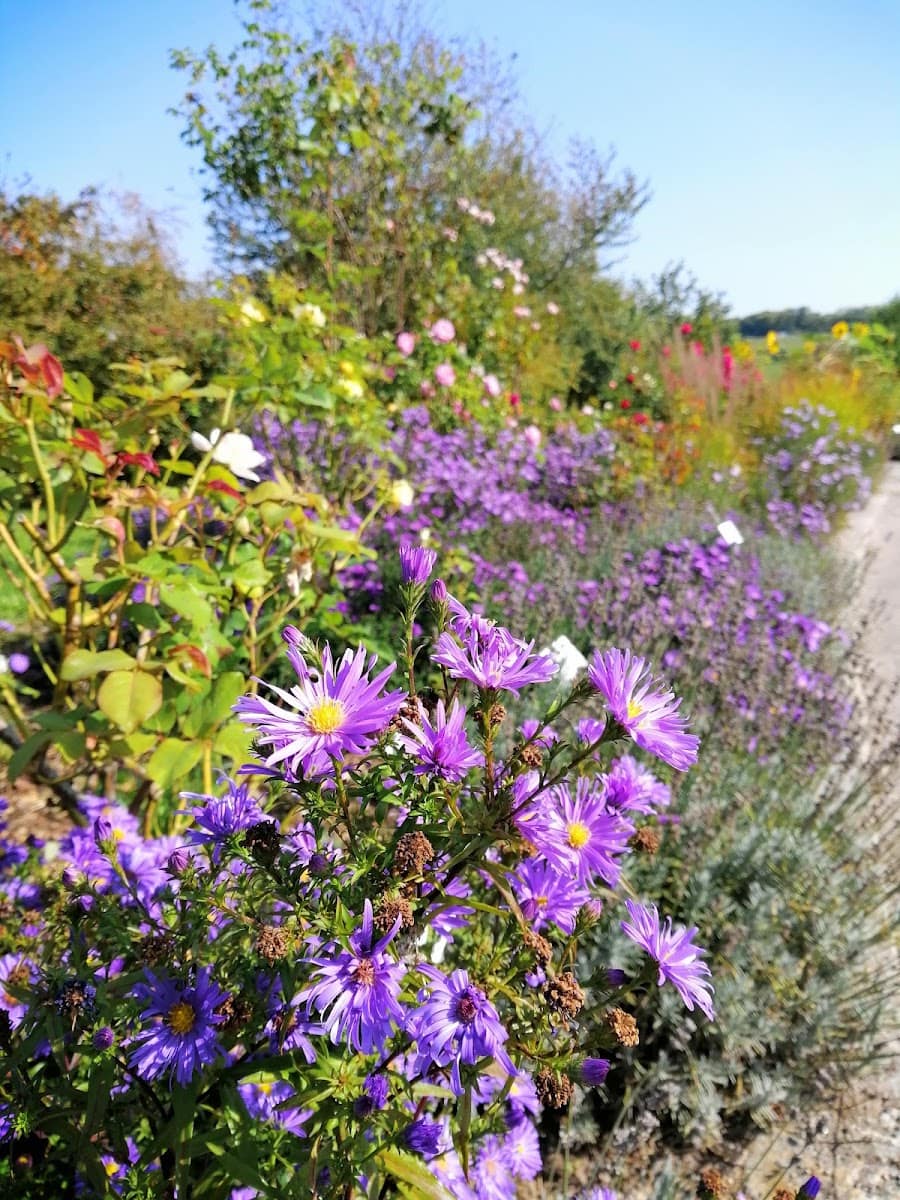
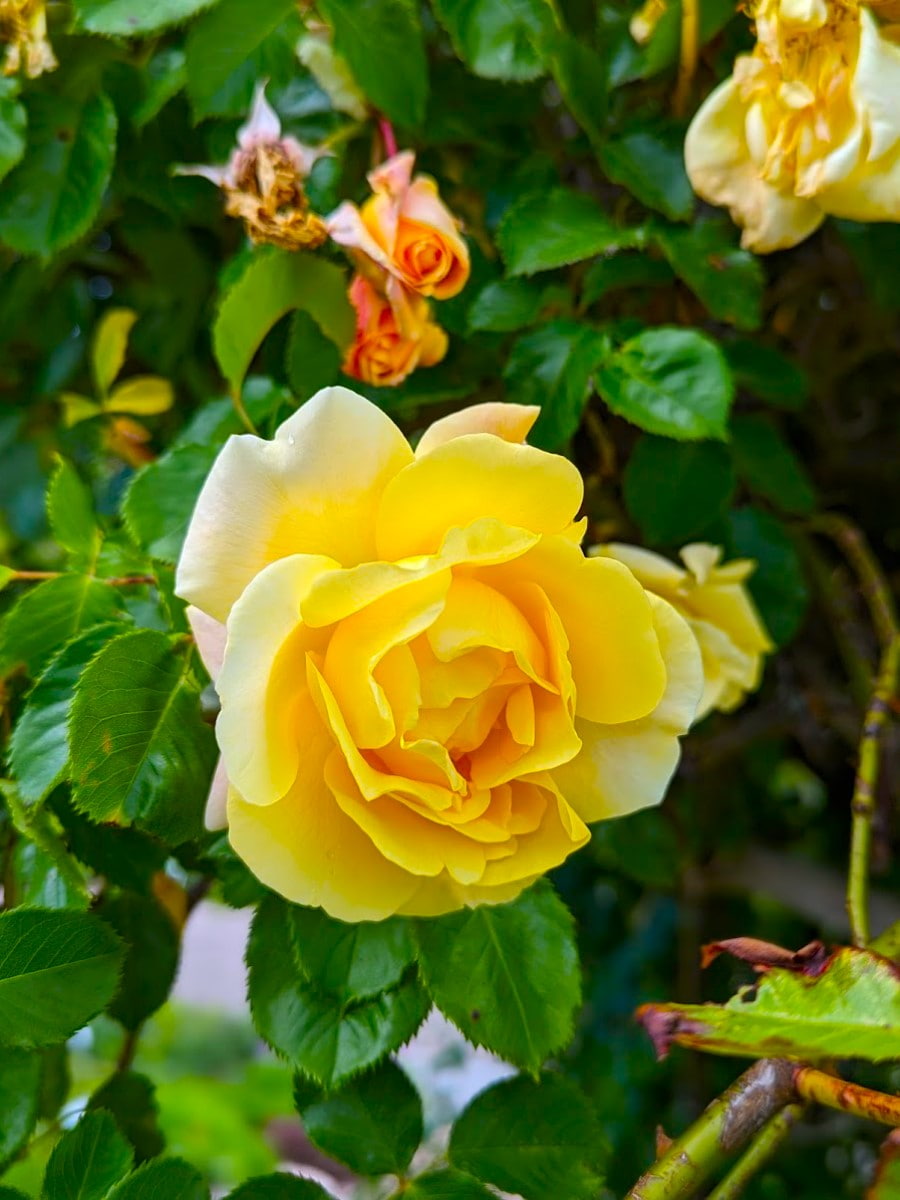
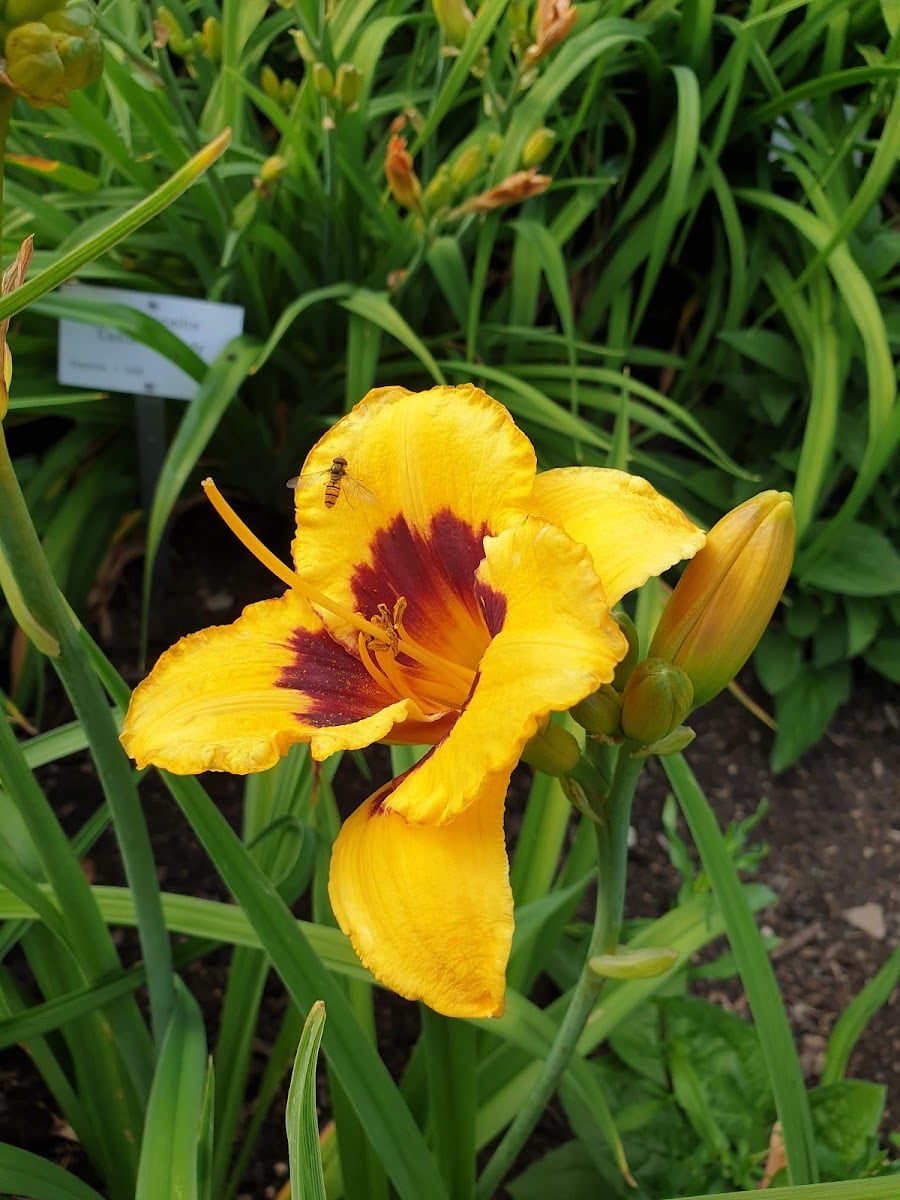
Themed Beauty. The garden is divided into themed sections, including an alpine garden, medicinal plants area, and a beautiful rose garden that was just beginning to bloom during my April visit. What impressed me most was the Japanese garden, with its carefully raked gravel, pruned trees, and strategic rock placements creating a sense of tranquility. Entry is free, making this a perfect budget-friendly spring activity.
Riverside Renewal. Spring also transforms the banks of the Danube into ribbons of green and gold as wildflowers bloom along the water’s edge. I rented a bicycle from Donau-Rad near the train station (15€/$16 per day) and followed the well-marked Danube Cycle Path eastward out of the city. Within minutes, I was pedaling through meadows dotted with buttercups and daisies, the cathedral spire still visible behind me.
Summer Festivals and Events
Musical Evenings. Summer evenings in Ulm are filled with music and outdoor entertainment. The Ulmer Zelt (Ulm Tent) festival runs from mid-May through early July, bringing international musicians, comedians, and performers to a festival ground just outside the city center. I caught an incredible jazz performance one warm June evening, sitting under the stars with a local beer in hand. Ticket prices vary by performance (15-45€/$16-48), but the atmosphere of community and celebration is priceless.
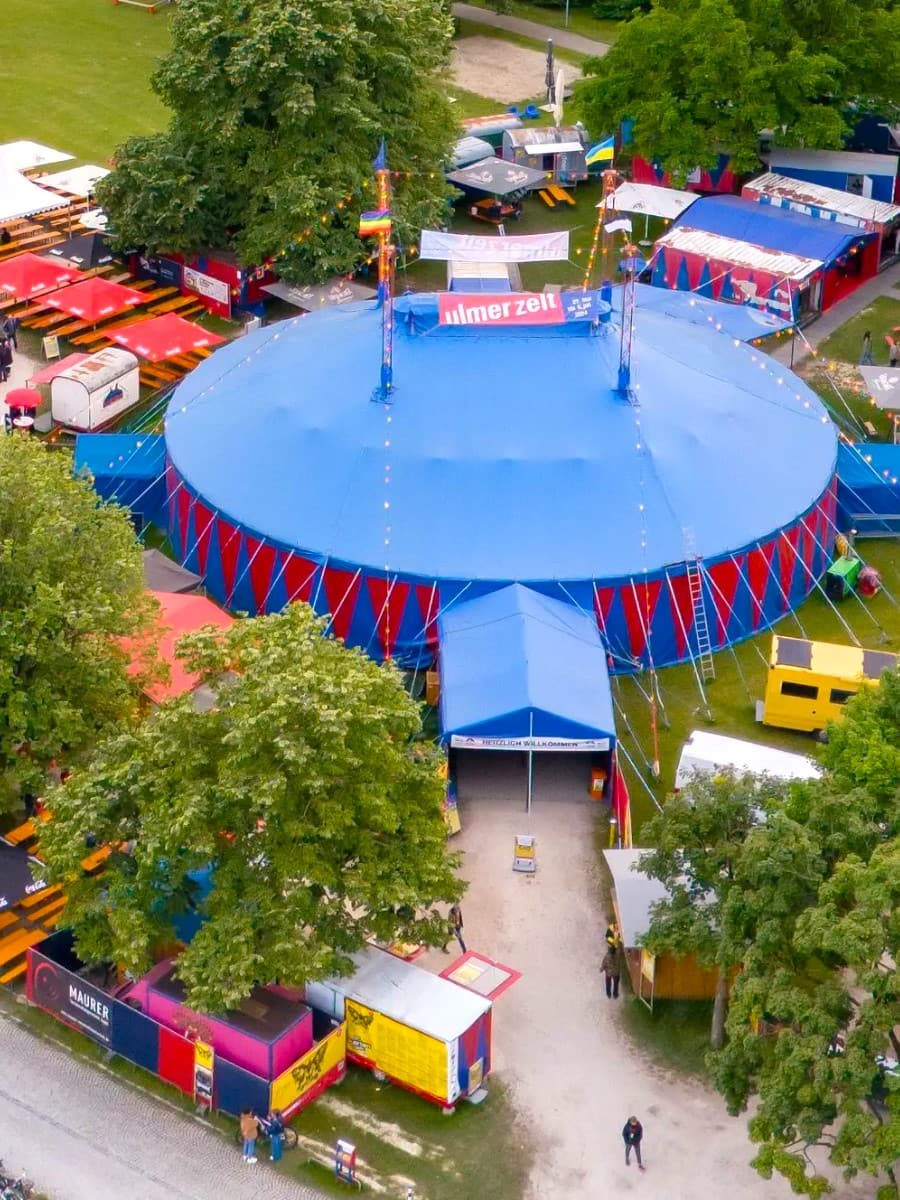
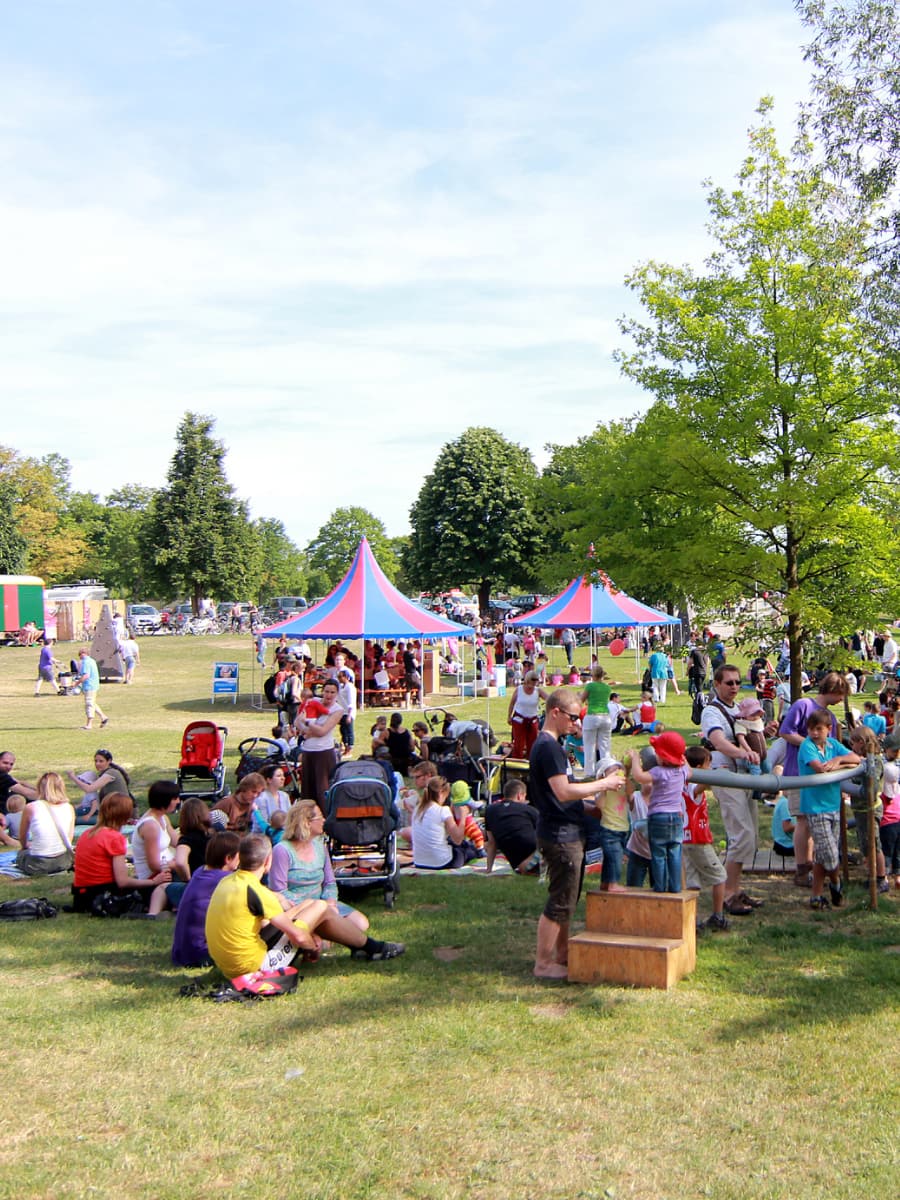
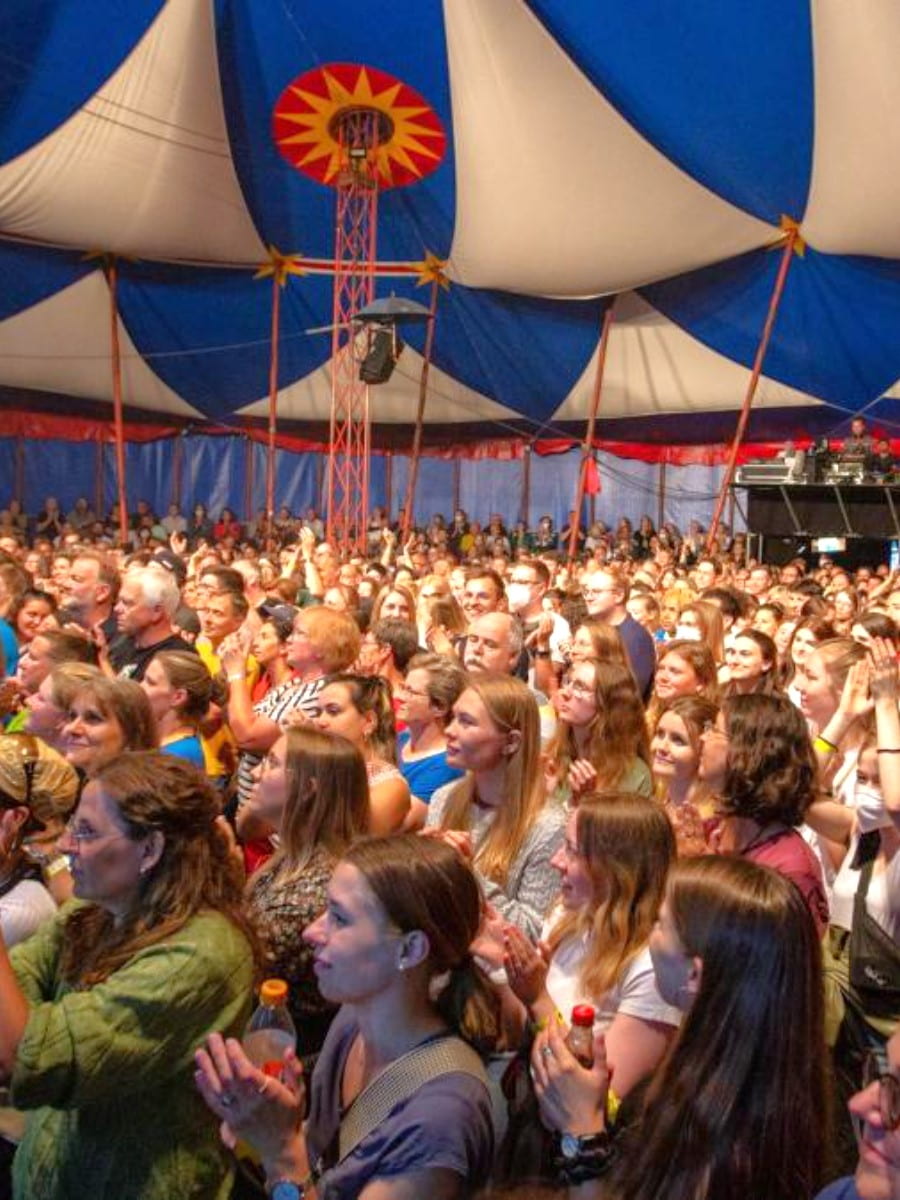
Market Delights. Saturday mornings in summer find Münsterplatz transformed by the vibrant weekly market. I arrived early (around 8am) to watch vendors setting up stalls overflowing with seasonal produce – glossy cherries, fragrant strawberries, and every shade of green vegetable imaginable. The market has been held here since medieval times, and many farm families have been selling their produce for generations. I practiced my limited German with a friendly apple vendor who insisted I try three different varieties before making my selection.
Autumn Foliage Walks
Golden Landscapes. My autumn visit to Ulm coincided perfectly with the changing leaves, transforming the city into a canvas of gold, amber, and crimson. Fall is perfect for walking Ulm’s well-preserved 15th-century town walls. Built in 1482 along the Danube, these defensive structures circle from the Lauseck Bastion through the Fishermen’s Quarter. The ancient stones provided the perfect frame for the colorful foliage beyond, creating postcard-worthy views at every turn.
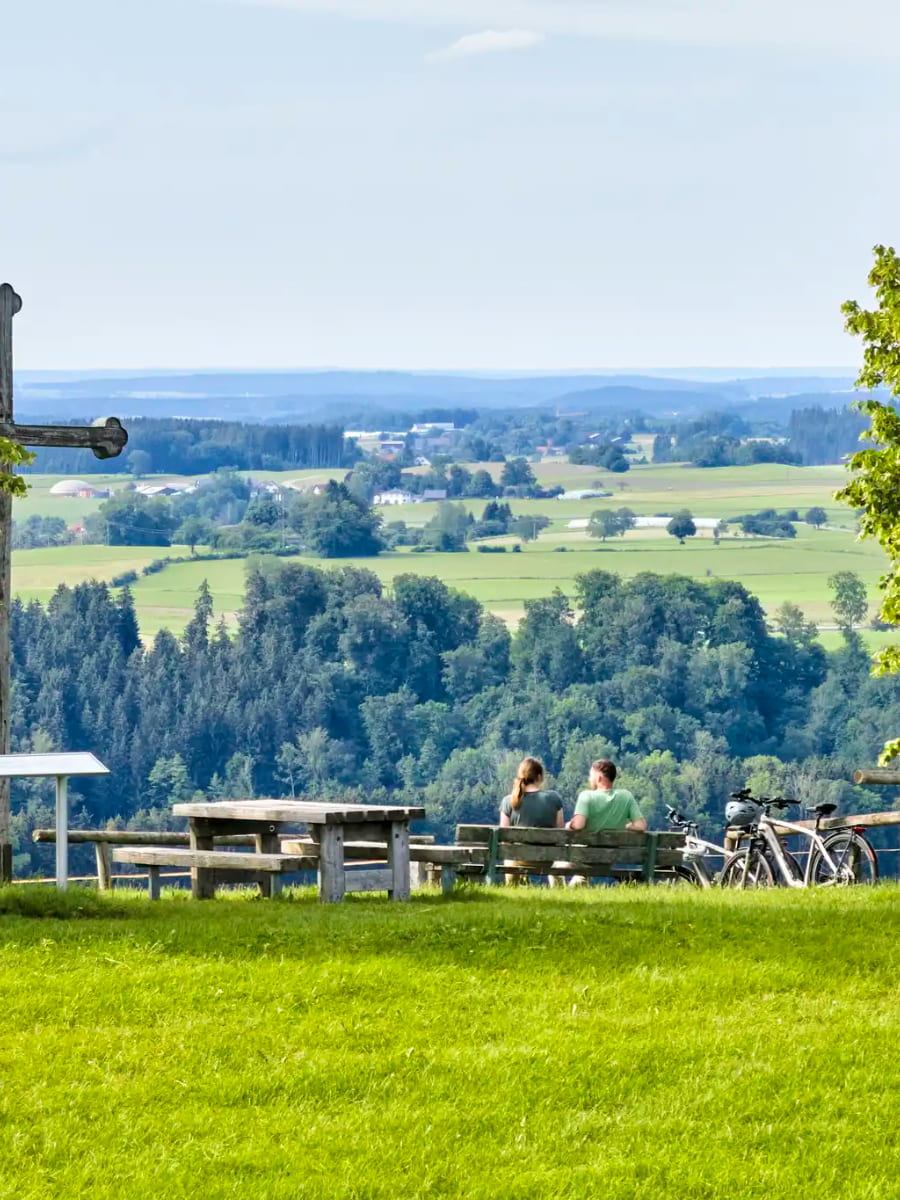
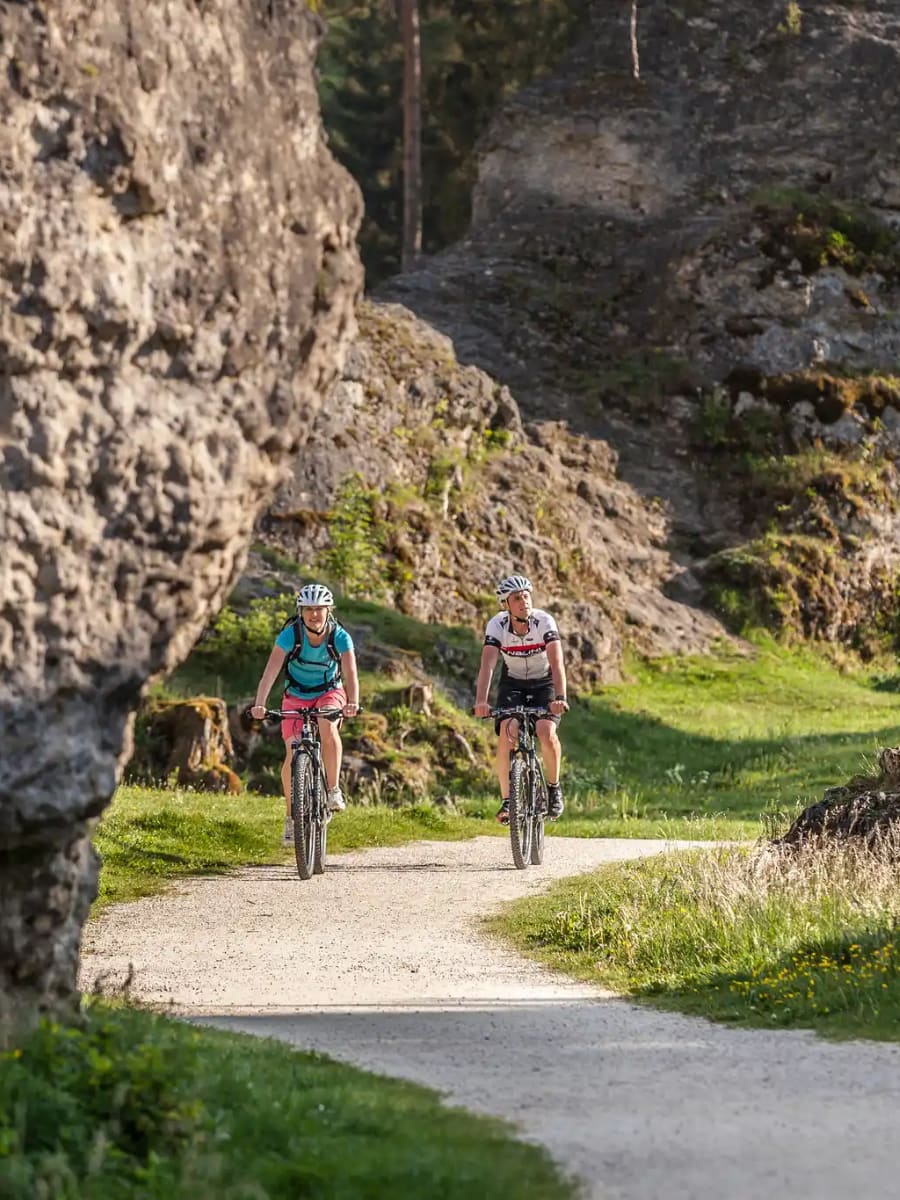
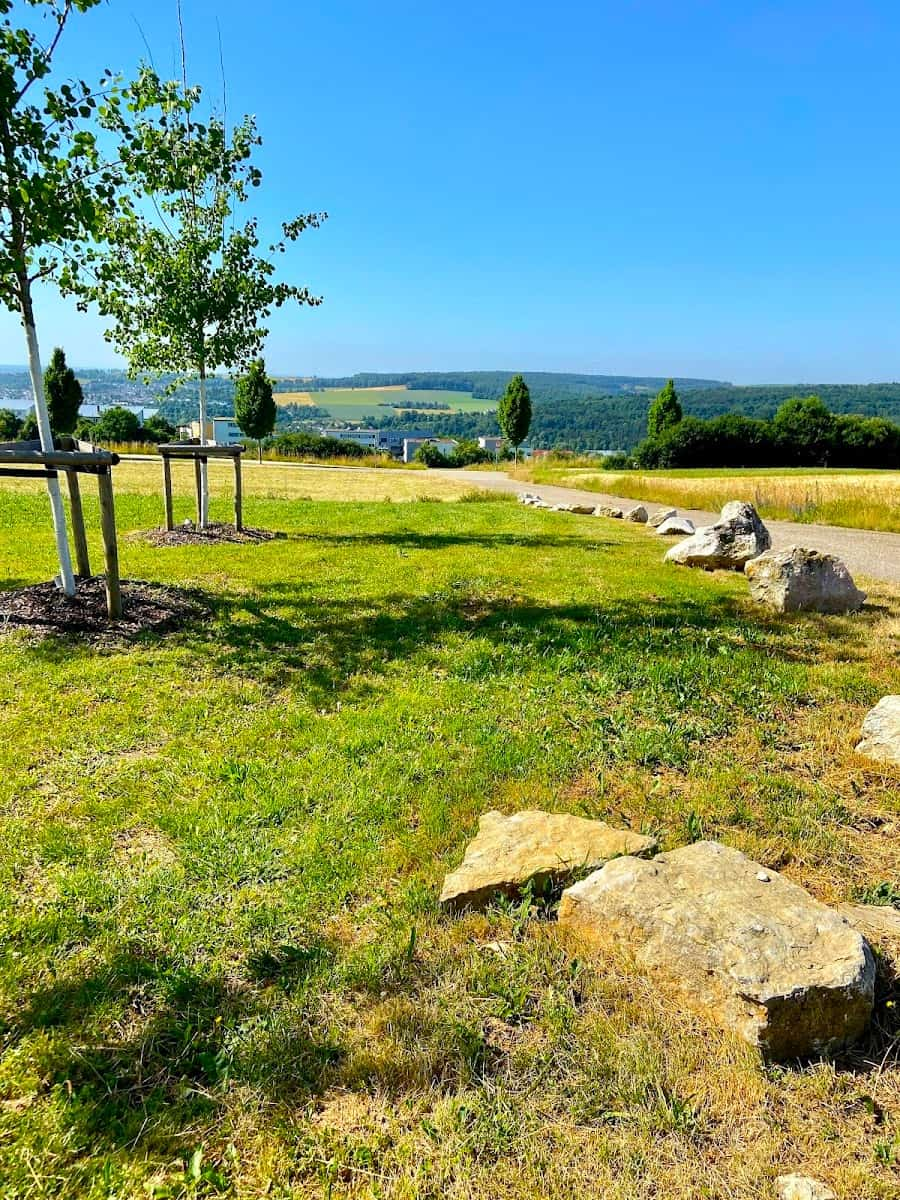
Hilltop Vistas. For the most spectacular autumn views, I followed locals’ advice and hiked the Ulmer Höhenweg (Ulm High Trail) on the Eselsberg hill. This well-marked path loops around the northern edge of the city, offering panoramic vistas over Ulm’s red rooftops and church spires. On the exceptionally clear October day I visited, I could see all the way to the distant Alps, their snow-capped peaks contrasting dramatically with the autumn colors in the foreground.
Harvest Celebrations. Autumn in Ulm brings harvest festivals and seasonal specialties. The first weekend in October features the Ulm Wine Festival, where local vintners offer tastings of regional wines in a tent on Münsterplatz. Entry costs 5€ ($5.40), including a tasting glass that you can use at various stalls. I discovered some excellent Württemberg red wines that rarely make it to export markets, making this a unique opportunity to sample truly local flavors.
Day Trips from Ulm
1. Blautopf Spring in Blaubeuren
Magical Blue Waters. Just 16 kilometers west of Ulm lies one of Germany’s most enchanting natural wonders – the Blautopf Spring. When I first glimpsed this brilliant blue karst spring nestled in the small town of Blaubeuren, I actually gasped out loud. The water is an otherworldly shade of blue that seems almost artificially enhanced, but is entirely natural. The unusual color comes from the limestone particles that scatter blue light, creating what locals call “Blau” (blue) – which also gives the small river flowing from it its name.
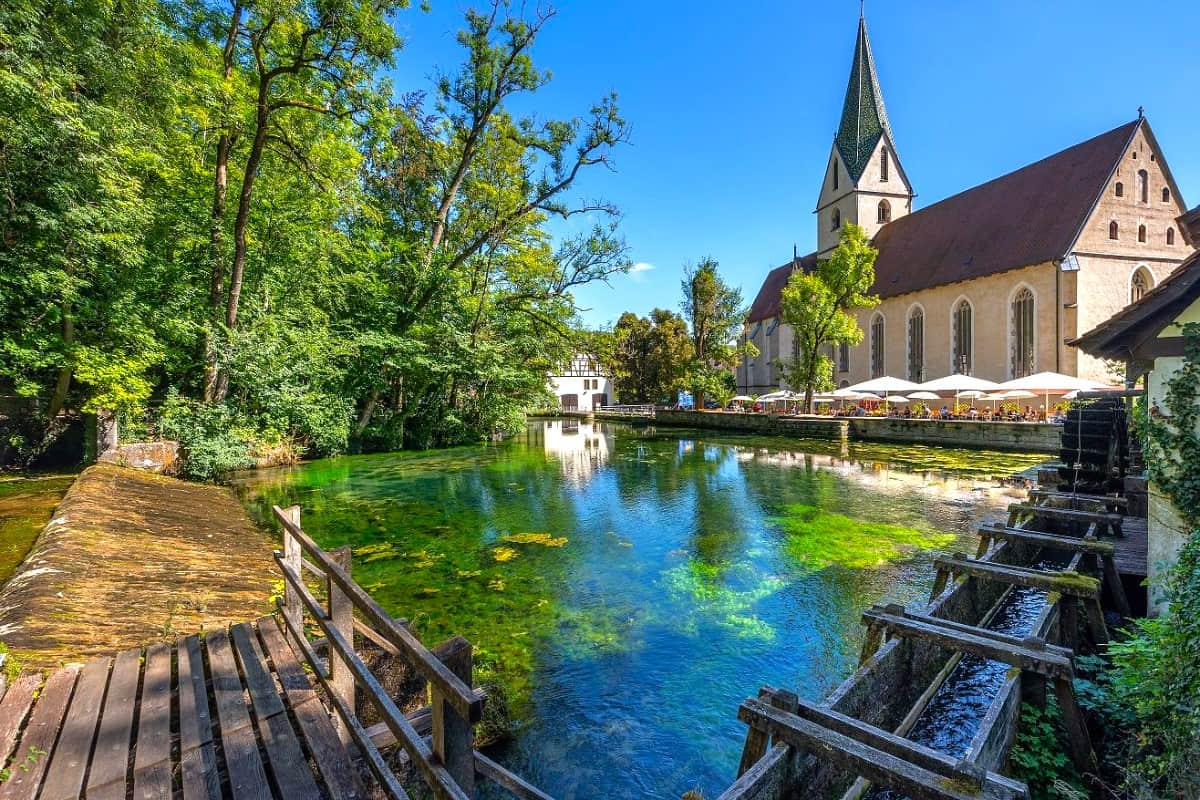
A Peaceful Morning. I visited on a sunny April morning, arriving early to beat the crowds. The sunlight hitting the water created an almost luminous effect, with the surrounding trees and historic mill reflected perfectly on the surface. The spring is surprisingly compact – about 21 meters across and 21 meters deep – but its visual impact is enormous.
Local Legends. While admiring the spring, I chatted with an elderly local who shared the charming folk tale of “The Beautiful Lau.” According to legend, this spring is home to a water nymph who was banished from the Black Sea until she could laugh five times. The story has been immortalized in a famous German poem and adds a layer of mystique to the already magical setting.
⭐ Best Activities
- Blaubeuren Guided tourr – The Blaubeuren Guided Tour offers an immersive experience through the picturesque town, where visitors can explore its historic sites, including the stunning Blautopf spring and ancient monasteries. Learn about the rich cultural heritage of this charming destination while being guided by a knowledgeable local expert.
2. Wiblingen Abbey
Baroque Splendor. Just five kilometers south of Ulm’s center lies the former Benedictine monastery of Wiblingen, home to what might be the most breathtaking library I’ve ever seen. When the massive wooden doors swung open and I stepped into the library hall, I felt like I’d walked into a movie set. The room is a masterpiece of Rococo design, with a ceiling fresco depicting divine wisdom, ornate columns, and gilded details that gleam in the natural light from tall windows.
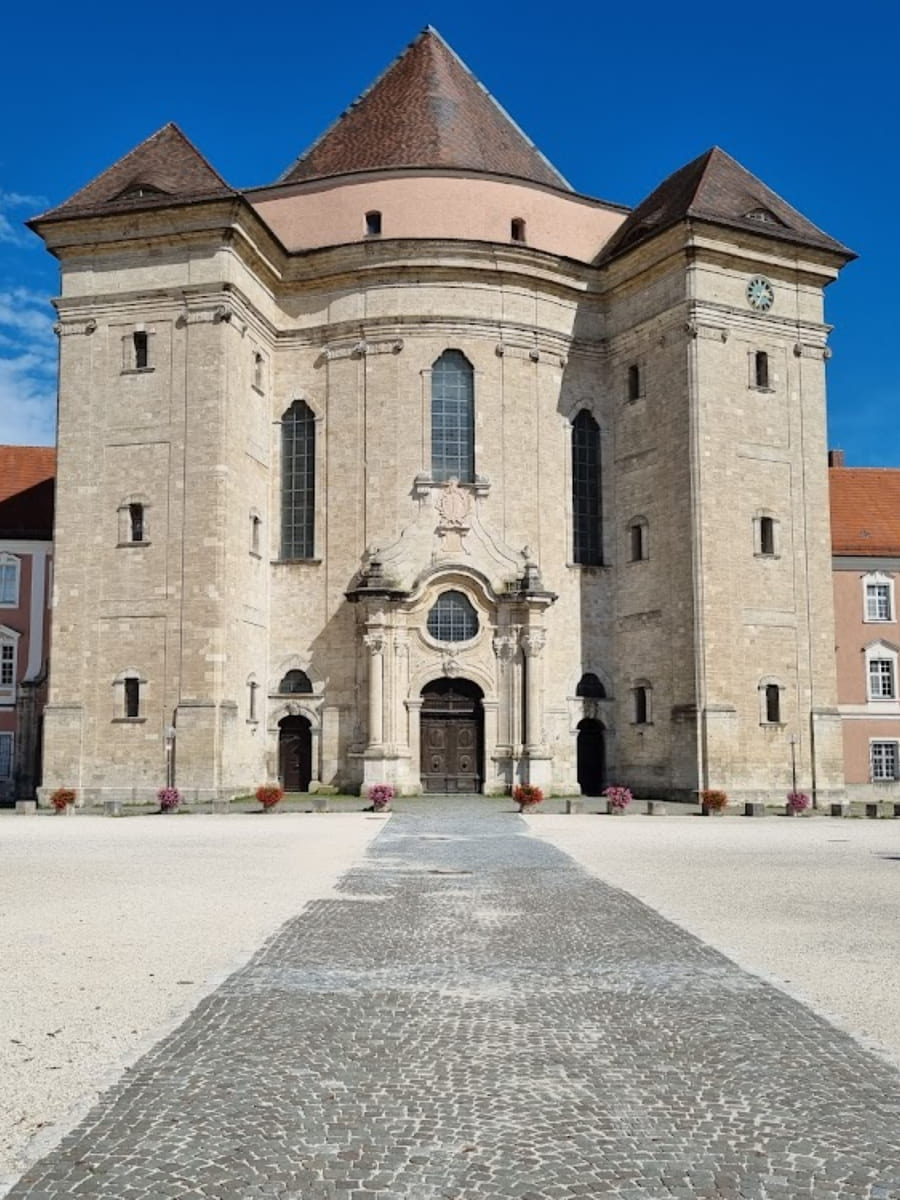
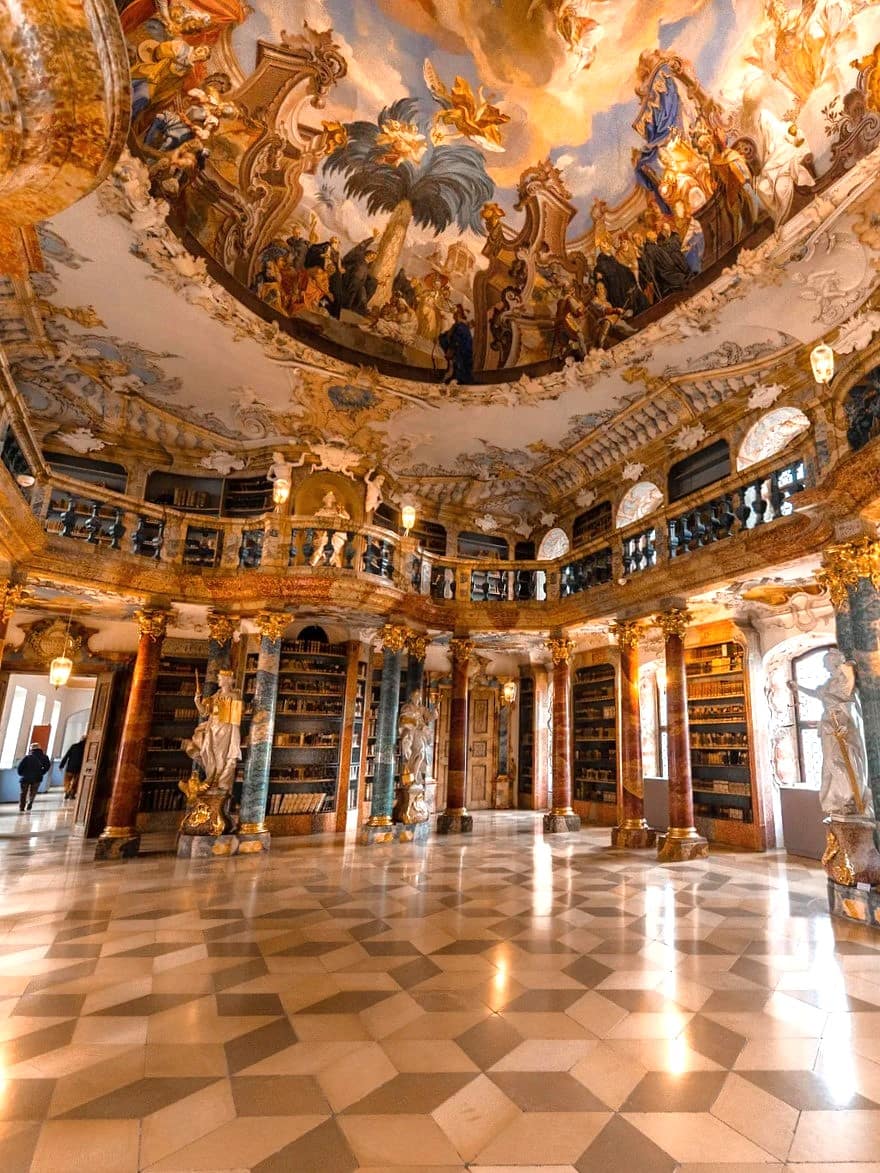
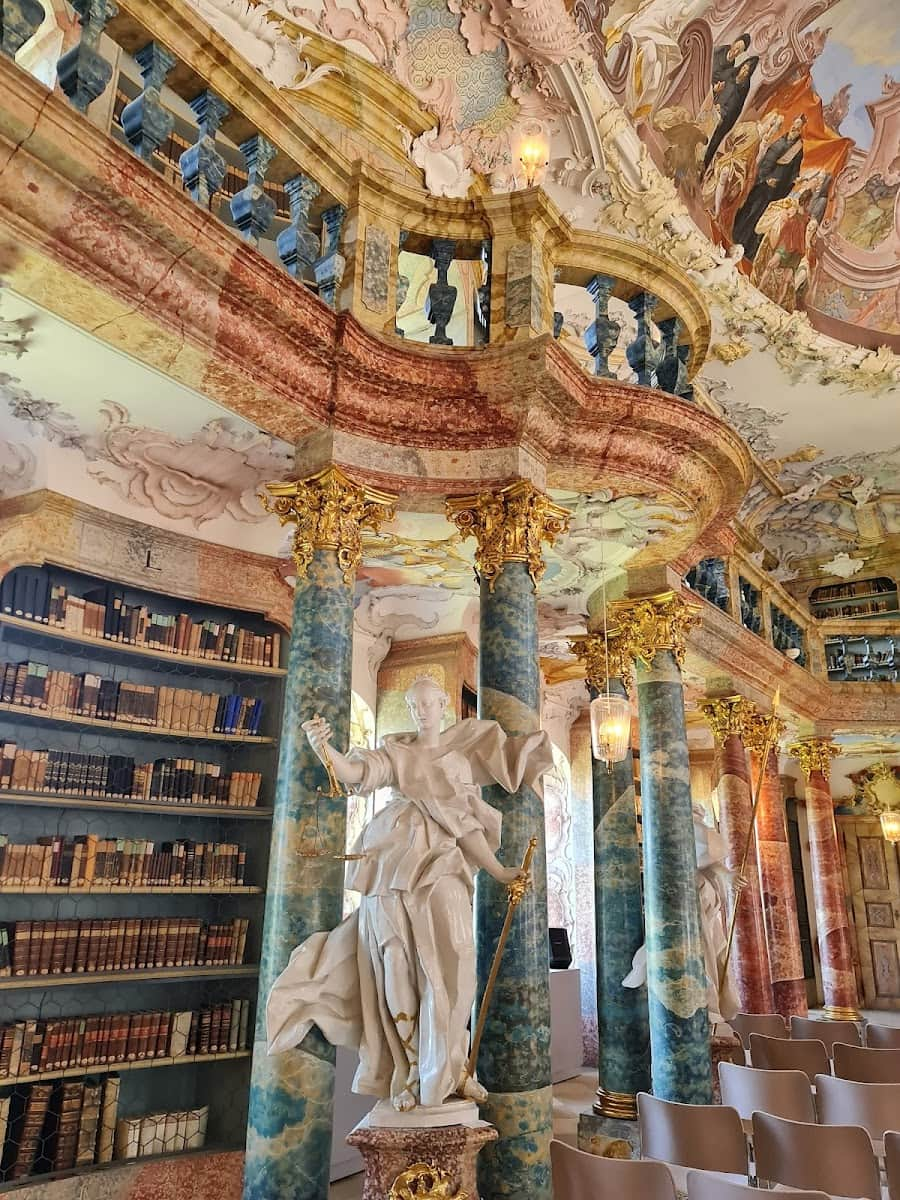
Sacred Knowledge. Built between 1744 and 1751, the library represents the pinnacle of South German Baroque architecture. What struck me most was the contrast between the opulent decoration and the scholarly purpose – a reminder that knowledge was once considered truly sacred.
Beyond the Library. While the library is undoubtedly the highlight, the entire abbey complex deserves exploration. The church features stunning ceiling paintings and elaborate stucco work, while the Museum im Konventbau (Museum in the Convent Building) offers fascinating insights into monastic life through the centuries. I spent about three hours exploring the entire complex at a leisurely pace.
Visitor Information. The abbey is open Tuesday through Sunday from 10am to 5pm (April-October) and 10am to 4pm (November-March). Admission to the library and museum costs 7€ ($7.50) for adults, with discounts for students and seniors. The church can be visited for free.
3. Medieval Biberach an der Riß
Time Travel. About 45 kilometers south of Ulm lies the perfectly preserved medieval town of Biberach an der Riß. Walking through its cobblestone streets felt like stepping back in time. Unlike many German towns that were heavily damaged during World War II, Biberach emerged largely unscathed, preserving its authentic medieval and Renaissance architecture.
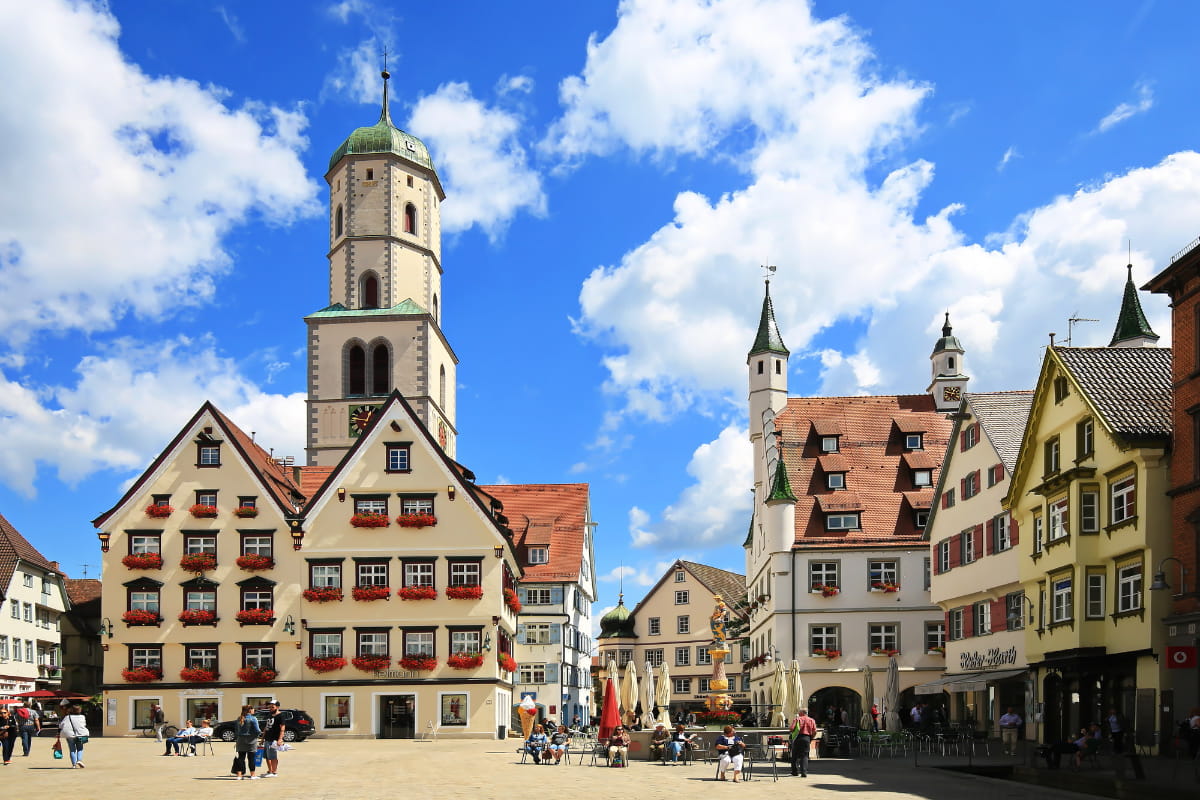
Market Life. The Market Square (Marktplatz) forms the heart of the old town, surrounded by colorful guild houses and the impressive Holy Trinity Church with its unusual white tower. I visited on a Thursday when the weekly market was in full swing, with farmers selling regional produce and artisanal foods. The smell of fresh bread and local cheese filled the air as I wandered between stalls, sampling offerings and chatting with vendors.
Museum Highlights. The Braith-Mali Museum surprised me with its quality – housed in a Renaissance building, it contains an impressive collection of 19th-century art alongside natural history exhibits. The museum’s namesakes, Anton Braith and Christian Mali, were locally born artists who achieved fame for their realistic animal paintings. Admission is just 3€ ($3.20), making it one of the best cultural values I found in the region.
4. Legoland Deutschland
Brick-Built Adventure. Just 30 minutes by car from Ulm lies one of Germany’s most popular family attractions—Legoland Deutschland Resort in Günzburg. While primarily aimed at families with children, I have to admit I had an absolute blast during my visit. The park features over 50 rides, shows, and attractions, all built around the beloved building blocks.
Miniature Wonders. The highlight for me was Miniland, where famous German and European landmarks (including Ulm Minster!) are recreated in meticulous detail using millions of Lego bricks. I spent nearly an hour in this section alone, marveling at the Berlin Brandenburg Gate built from 300,000 bricks and a functioning Hamburg harbor where tiny ships move through real water.
Practical Information. Legoland is a significant investment at 65€ ($70) for adults and 59€ ($63.50) for children when purchased at the gate. However, buying tickets online at least three days in advance saves about 20%. The park is open from late March to early November, with longer hours during summer months (typically 10am to 6pm, extending to 8pm in peak season).
⭐ Best Activities
- LEGOLAND® Deutschland Resort – Enjoy a perfect family adventure at LEGOLAND® Deutschland Resort! Thrilling roller coasters, gentle rides for the little ones and loads of colourful LEGO® bricks await you!
5. Lake Constance (Bodensee)
Alpine Vistas. One of my favorite day trips from Ulm was to Lake Constance (Bodensee), Germany’s largest lake, located about 90 minutes south by car or train. The lake forms a natural border between Germany, Austria, and Switzerland, with the Alps creating a dramatic backdrop on clear days. I’ll never forget my first view of the lake from the promenade in Friedrichshafen – the vast expanse of blue water stretching to the horizon, with snow-capped mountains rising in the distance.
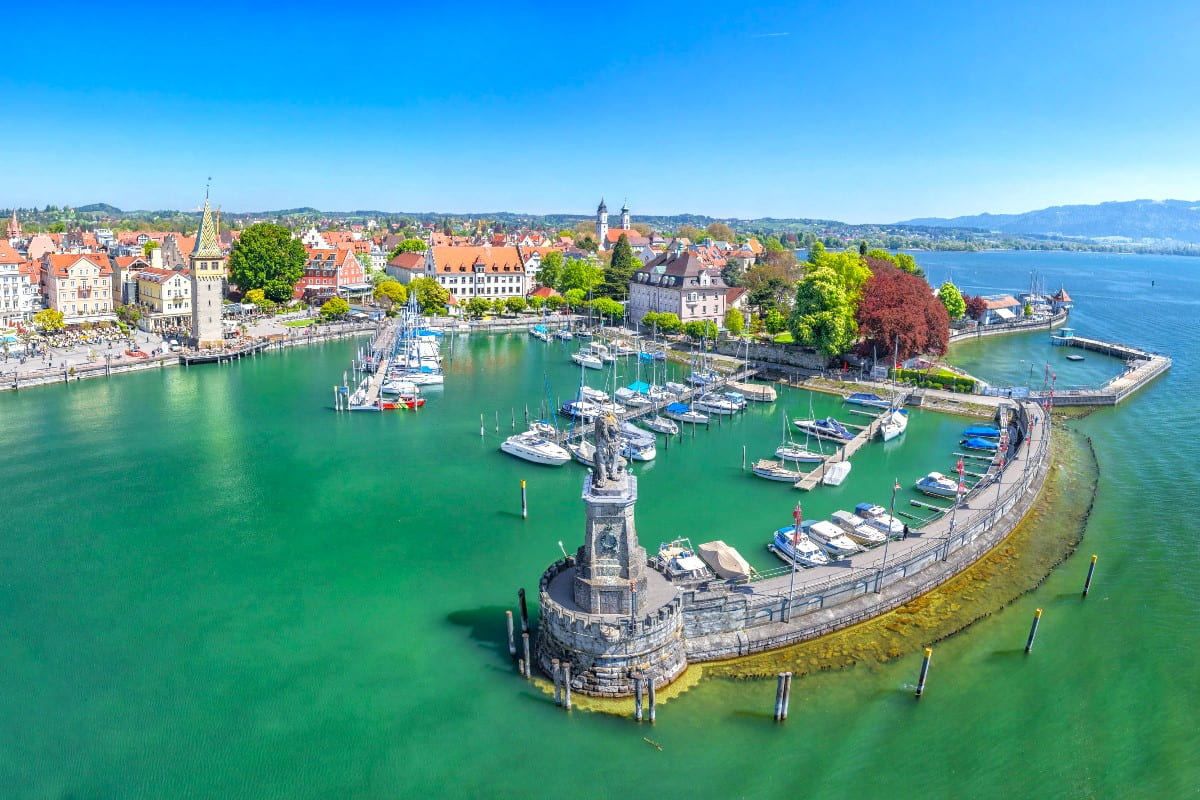
Lakeside Towns. Several charming towns dot the German shore of Lake Constance, each with its own character. I chose to explore Meersburg, a medieval town built on a steep hillside above the lake. Its upper and lower towns are connected by steep staircases and narrow lanes lined with half-timbered houses and flowering window boxes. The 7th-century castle (Alte Burg) claims to be Germany’s oldest inhabited fortress and offers fascinating tours for 12€ ($12.90).
Water Activities. Lake Constance offers numerous opportunities to get out on the water. I took a 90-minute boat trip from Meersburg to the island of Mainau (22€/$23.65 round trip), known as the “flower island” for its spectacular gardens. The boat ride itself was a highlight, with panoramic views of the lake and three countries visible from the upper deck.
❓FAQ about Trips to Ulm, Germany
What makes Ulm a must-visit destination in southern Germany?
The city of Ulm captivates visitors with its blend of historical treasures and modern attractions, making it one of the best places to visit in southern Germany.
What is the most iconic landmark in Ulm?
At its heart stands the magnificent Ulm Münster, a masterpiece of Gothic architecture whose towering spire (the tallest church spire in the world at 161.53 meters) dominates the skyline.
Is there anything special about the architecture of Ulm Münster?
In front of the church, tourists often gather to admire its intricate 14th century stonework, which showcases remarkable Gothic craftsmanship.
What is the relationship between Ulm and Neu Ulm?
Just across the Danube River lies Neu Ulm, which forms part of Ulm’s greater urban area but is actually in Bavaria, making it a two-state city experience.
What famous scientist was born in Ulm?
History enthusiasts should note that Einstein was born in Ulm in 1879, though his birthplace was unfortunately destroyed during WWII bombing.
What historical feature can be found at the Ulm Town Hall?
The Rathaus (Town Hall) features a remarkable astronomical clock dating from 1520 on its Renaissance façade, representing the city’s scientific heritage.
Where can art enthusiasts visit in Ulm?
Art lovers shouldn’t miss the Kunsthalle Weishaupt, a striking modern building in Ulm where Siegfried Weishaupt and his wife have displayed their impressive collection of contemporary art, including works by Andy Warhol and other renowned artists.
What ancient artifact makes the Ulm Museum special?
The Ulm Museum houses a remarkable treasure—the Lion Man, an extraordinary figurine carved from mammoth ivory that represents one of humanity’s earliest artistic expressions, dating back approximately 40,000 years (not 30,000 as sometimes mistakenly cited).





